


This site is made possible by member support. 💞
Big thanks to Arcustech for hosting the site and offering amazing tech support.
When you buy through links on kottke.org, I may earn an affiliate commission. Thanks for supporting the site!
kottke.org. home of fine hypertext products since 1998.
Entries for January 2018
The genius physical comedy of Mr. Bean
For the latest installment of Nerdwriter, Evan Puschak explains the distinct brand of physical comedy practiced by Rowan Atkinson, best known for his character Mr. Bean. For my money, this scene of Mr. Bean running late for a dentist appointment is one of the funniest things ever put on screen.
This is the comedy of personality rather than the comedy of gags. It’s not about doing funny things. It’s about doing something quite normal in a funny way.
Atkinson himself explained and demonstrated the principles of physical comedy in a 60-minute documentary called Funny Business; here’s part 1:
This is really odd timing. Just two days ago, I was watching some videos with my kids and we stumbled across Rowan Atkinson performing as Mr. Bean at the opening ceremonies of the London Olympics in 2012, which a) opens Puschak’s video, b) I had completely forgotten about, and c) is perhaps the most British thing ever.
The Awl bids a final farewell on its last day of publication. Adieu, website.
My recent media diet for January 2018
Quick reviews of some things I’ve read, seen, heard, and experienced in the past month or so. I worked so much in January, mostly on getting the Noticing newsletter launched, that by the time the evening rolled around, all I wanted to do was collapse and watch a little TV or maybe go to a movie (I’ve seen all the Oscar Best Picture nominees this year). But I still managed to read a couple books and am currently working my way through two more: Emily Wilson’s translation of The Odyssey and Charles Mann’s The Wizard and the Prophet.
Generation Wealth by Lauren Greenfield at ICP Museum. A retrospective of Greenfield’s photographic survey of wealth. Also available in book form. (A-)
Lady Bird. This one’s been growing on me since I saw it. (B+/A-)
The Post. My main problem with this movie is that Streep, while otherwise excellent, does not properly sell the transformation of her character at the end. (A-)
The Farthest - Voyager in Space. I had no idea about many of the amazing things about the Voyager program. If I’d seen this as a kid, I might work for NASA right now. (A-)
Black Mirror season four. Perhaps not as strong as some of the previous seasons, but USS Callister is one of the best episodes of the series. (B+)
Why Buddhism is True by Robert Wright. A compelling argument that Buddhists figured out thousands of years ago how to route around a human brain designed to delude us, a tendency that neuroscientists and psychologists have only learned of more recently. (B+)
Call Me By Your Name. A touching love story. One of the best movies of the year. (A)
Jane. Jane Goodall is a remarkable person, one of the best scientific researchers of our time. The footage in this movie of her early career is stunning, like it was filmed specifically for the documentary. (A-)
Jane soundtrack. Philip Glass. What more needs to be said? (A-)
Darkest Hour. Churchill is over-acted by Oldman, like an SNL character. I much prefer Lithgow’s take in The Crown. (C+)
The Shape of Water. This was ok, I suppose. (B)
Bullseye with Jesse Thorn: interview with Errol Morris. I could listen to Errol Morris talk about film and truth all day. (A-)
Phantom Thread. One of those movies that gets better once you read about it afterwards. (B+)
Three Billboards Outside Ebbing, Missouri. Frances McDormand is amazing in this. I’m also unconvinced of the straightforward reading of the movie as the redemption of a racist cop. (B+)
Slow Burn. History doesn’t repeat itself, but it sure does rhyme. (A)
The New York Times For Kids. The rest of the paper should be more like this. (A-)
Past installments of my media diets can be found here.
Indepth Sound Design deconstructs and explains sound effects from movies. I want one of these for Kylo Ren’s lightsaber.
A Choir of Strangers Accompanies David Byrne Singing David Bowie’s Heroes
A group called Choir! Choir! Choir! recently put on a show in NYC where they taught the audience to accompany them on a song, in this case, David Bowie’s Heroes sung by David Byrne. Byrne wrote up the experience in his online journal:
What happens when one sings together with a lot of other people?
A couple of things I immediately noticed. There is a transcendent feeling in being subsumed and surrendering to a group. This applies to sports, military drills, dancing… and group singing. One becomes a part of something larger than oneself, and something in our makeup rewards us when that happens. We cling to our individuality, but we experience true ecstasy when we give it up.
The second thing that happens involves the physical act of singing. I suspect the regulated breathing involved in singing, the act of producing sound and opening one’s mouth wide calls many many neural areas into play. The physical act, I suspect, releases endorphins as well. In singing, we get rewarded by both mind and body.
No one has to think about any of the above-we “know” these things instinctively. Anyone who has attended a gospel church service, for example, does not need to be told what this feels like.
So, the reward experience is part of the show.
That’s really thrilling and cool to watch. You can check out some of Choir! Choir! Choir!’s other performances on their YouTube channel, including Zombie by The Cranberries, Free Fallin’ by Tom Petty, Karma Police by Radiohead, and Passionfruit by Drake. (via ted gioia)
A choir imitates a thunderstorm
Before they start to sing Toto’s Africa, the Angel City Chorale perfectly imitates a thunderstorm by rubbing their hands together, snapping, and stomping their feet. You might want some headphones for this one. What a cool effect.
Update: This performance is likely a reference to a 2008 performance of Africa by Perpetuum Jazzile, a vocal group from Slovenia.
Their thunder is definitely better. (thx, scott)
Update: Ok, this appears to be the original choir thunderstorm by the Kearsney College Choir.
As Rion said when she sent me this link, “I’d never run into them before but now I can’t believe how many Toto/rainstorm videos there are on YouTube”. (thx, rion)
What Does Living in a Dictatorship Feel Like?
According to writer G. Willow Wilson, living in an authoritarian society does not look like “something off the Syfy channel”.
It’s a mistake to think a dictatorship feels intrinsically different on a day-to-day basis than a democracy does. I’ve lived in one dictatorship and visited several others—there are still movies and work and school and shopping and memes and holidays.
The difference is the steady disappearance of dissent from the public sphere. Anti-regime bloggers disappear. Dissident political parties are declared “illegal.” Certain books vanish from the libraries.
How does a society go from a democracy to an autocracy? It’s like that line of Hemingway’s from The Sun Also Rises about how to go bankrupt: “Gradually and then suddenly.”
So if you’re waiting for the grand moment when the scales tip and we are no longer a functioning democracy, you needn’t bother. It’ll be much more subtle than that. It’ll be more of the president ignoring laws passed by congress. It’ll be more demonizing of the press.
Until one day we wake up and discover the regime has decided to postpone the 2020 elections until its lawyers are finished investigating something or other. Or until it can ‘ensure’ that the voting process is ‘fair.’
I don’t know about you, but Trump and the Republican Congress working to “postpone the 2020 elections until its lawyers are finished investigating something or other” seems like a completely plausible scenario. I would not be surprised if we see conservative pundits start floating this idea, slowly normalizing it over a matter of months until it seems like a plausible option. After all, it’s much easier for Republicans to remain in office if they got rid of those pesky elections (in lieu of gerrymandering and voter ID laws).
Update: In a poll from August 2017, 56% of Republicans polled said that they would support postponing the 2020 election if Trump and Republicans in Congress were in favor of it. (via @taestell)
The skincare industry is a racket. Your skin is an amazing organ and spreading fancy acid on your face is not healthy.
Verena, an iOS app to help protect people in abusive situations

Verena is an iOS app designed to protect and help guide you through situations like “domestic violence, hate crimes, abuse, and bullying”. The app was developed with the LGBTQ+ community in mind, but can be used by anyone facing abuse or harassment.
Create an account, and develop a network of emergency contacts, who can be alerted without leaving a trace on your phone.
Use the emergency feature to be guided through your problem, giving you the resources you need to get out of the emergency safely.
Create incident logs to keep track of abuse, hate crimes, or bullying for reference and later reportation.
Select the preferences that match your situation, such as using incognito mode to hide the app behind a math user interface, shutdown which can permanently disable the app if found by an abuser, and emergency access which allows you to alert all of your contacts with the press of a button.
Open resources to find and get routed to hospitals, shelters, and police stations near you.
Use timer to set a specified amount of time. If the timer isn’t canceled, Verena will send an emergency alert to all contacts with your last known location.
Select location to see your current location, the distance between you and your different contacts, and get routed to them as well.
Verena was built by Amanda Southworth, a 16-year-old iOS developer who created the app to help her LGBTQ+ friends in the aftermath of the election of a known abuser to the White House in 2016:
Seeing her friends — many of whom are part of the LGBT community — worry the day after the presidential election in November 2016 inspired her to create the app. “That day I saw all of my friends crying and it was really upsetting, you know, when people you love are scared,” she says. “So I decided, I’m going to make something so that I know they’re safe.”
Verena, which takes its name from a German name that means “protector,” allows users to find police stations, hospitals, shelters, and other places of refuge in times of need. They can also designate a list of contacts to be alerted via the app in an emergency.
Southworth, whose first iOS app was a “mental health toolkit” called anxietyhelper, attended Apple’s Worldwide Developers Conference this past summer and wrote about it for Teen Vogue. She also gave a TEDx talk about “how her struggle with mental illness and suicidal thoughts inspired her start coding”.
You Have to See This Place. “Pick a spot on the globe and I’ll send you a print of my nearest photo.”
A visual introduction to the Fourier Transform
The Fourier Transform is an incredibly useful mathematical function that can be used to show the different parts of a continuous signal. As you can see from the Wikipedia page, the formula and the mathematical explanation of the Fourier Transform can get quite complicated. But as with many complex mathematical subjects, the FT can also be explained visually. In the video above, 3blue1brown breaks down the Fourier Transform into a really intuitive visual system that’s surprisingly easy to follow if you’re not a science or math person. This would have been super helpful in my physics and math classes in college.
See also Better Explained’s interactive guide to the Fourier Transform, which describes the FT metaphorically like so:
What does the Fourier Transform do? Given a smoothie, it finds the recipe.
How? Run the smoothie through filters to extract each ingredient.
Why? Recipes are easier to analyze, compare, and modify than the smoothie itself.
How do we get the smoothie back? Blend the ingredients.
The guide includes interactive graphs that you can play around with. Stuff like this always gets me so fired up about math and science. Ah, the path not taken…
A pair of oil paintings algorithmically pixelized into treemaps of color
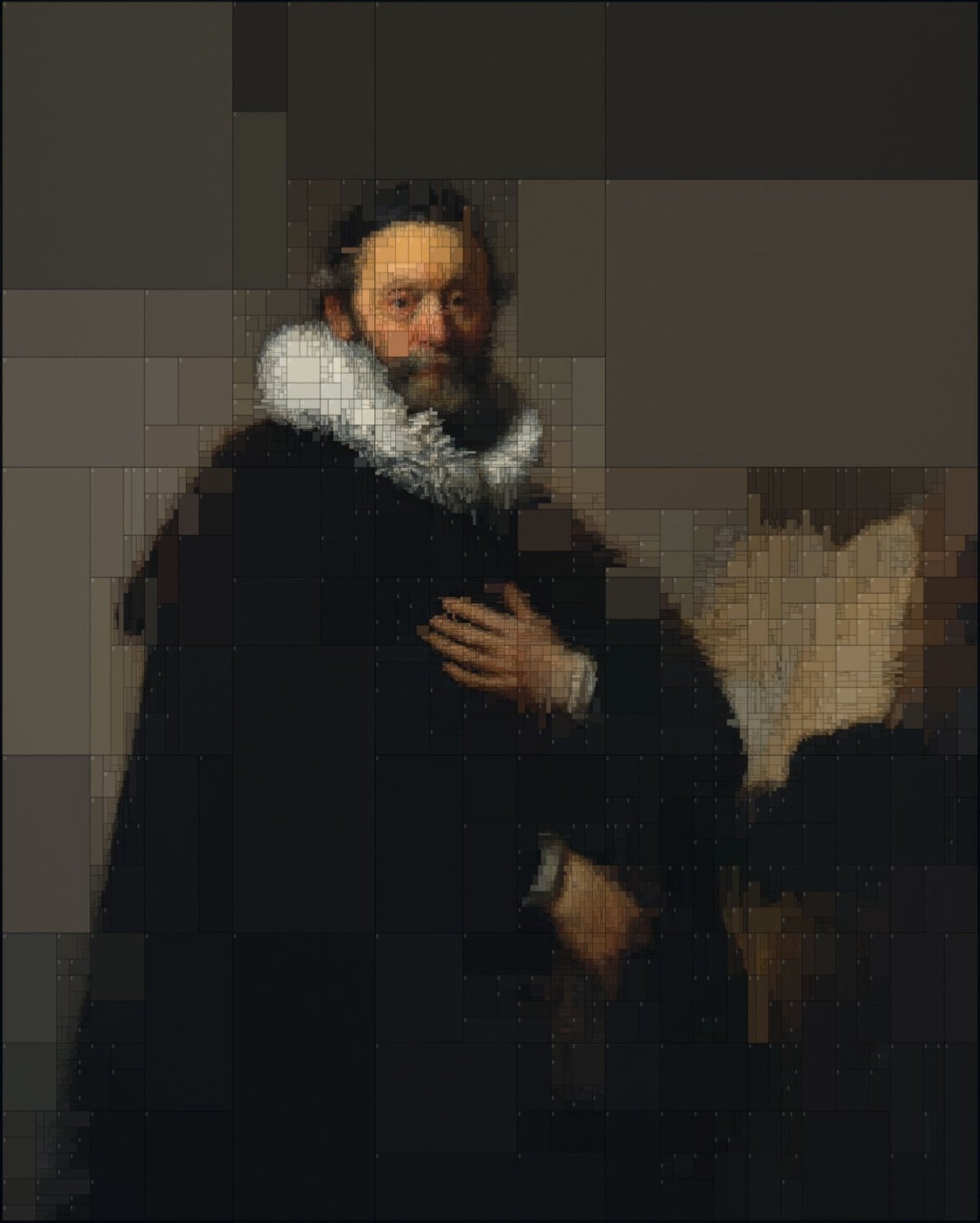

Greek visual designer Dimitris Ladopoulos took two of his favorite oil paintings, one by Rembrandt and the other (confusingly) by Rembrandt Peale, and used a piece of 3D modeling software called Houdini and pixelized them into treemaps of color. They look great in 2D (above), but he also rendered them in 3D with a worn texture:
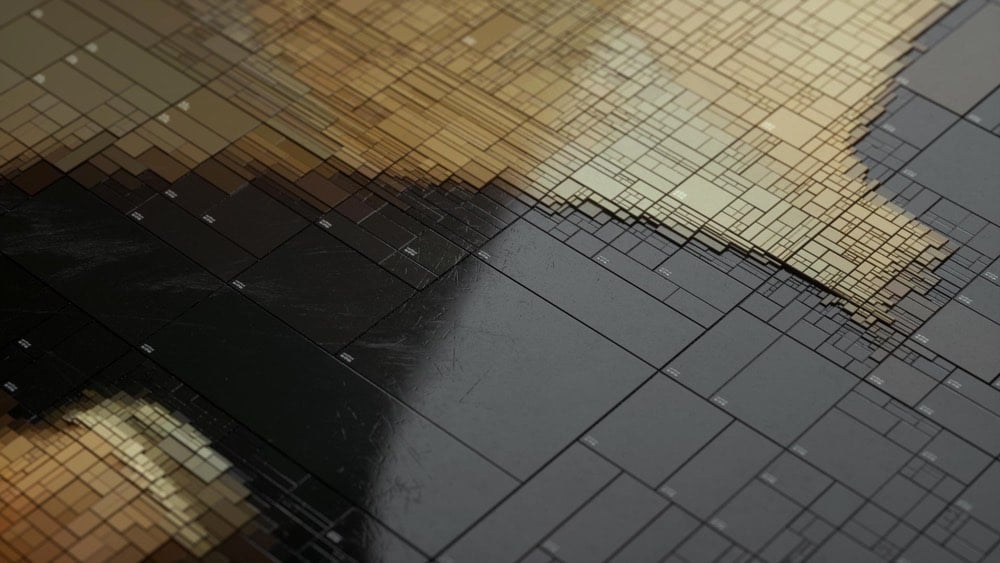
Those worn plastic rectangles with the beveled edges are reminding me of something in particular, like a piece of electronics. Something from Sony maybe? Anyone? (via colossal)
A Mister Rogers biopic starring Tom Hanks (WHAT!!?)
Variety is reporting that Tom Hanks is set to play Fred Rogers in a biopic called You Are My Friend.
“Now more than ever, we all need a re-introduction to Fred Rogers’ message of uncompromising love and kindness between all living things. Mari Heller is the perfect visionary filmmaker to bring Noah and Micah’s script to life and because of her vision and this remarkable script, we have the quintessential actor to play Fred Rogers,” said Turtletaub and Saraf.
The script is loosely based on Tom Junod’s Esquire piece about Rogers, Can You Say…Hero?, which is very much worth a read if you’ve never had the pleasure.
Nearly every morning of his life, Mister Rogers has gone swimming, and now, here he is, standing in a locker room, seventy years old and as white as the Easter Bunny, rimed with frost wherever he has hair, gnawed pink in the spots where his dry skin has gone to flaking, slightly wattled at the neck, slightly stooped at the shoulder, slightly sunken in the chest, slightly curvy at the hips, slightly pigeoned at the toes, slightly aswing at the fine bobbing nest of himself… and yet when he speaks, it is in that voice, his voice, the famous one, the unmistakable one, the televised one, the voice dressed in sweater and sneakers, the soft one, the reassuring one, the curious and expository one, the sly voice that sounds adult to the ears of children and childish to the ears of adults, and what he says, in the midst of all his bobbing nudity, is as understated as it is obvious: “Well, Tom, I guess you’ve already gotten a deeper glimpse into my daily routine than most people have.”
Oh, I hope this doesn’t get derailed. Unless it’s going to be bad, in which case: shelve away!
John Williams conducting the opening fanfare for Star Wars: The Last Jedi
Director Rian Johnson has posted a short clip of the legendary John Williams conducting the opening fanfare (aka the Star Wars theme) for The Last Jedi. It is difficult to think of the Star Wars films without Williams’ music.
An HBO documentary about Andre the Giant
A documentary film about pro wrestler Andre the Giant is going to air on HBO starting on April 10.
André René Roussimoff was born in 1946 in Grenoble, France. In his early teens, he exhibited signs of gigantism though he was not diagnosed with acromegaly until his twenties. He began his training in Paris at 17 and eventually became known in wrestling circuits around the world. In 1973, Andre joined the organization now known as World Wrestling Entertainment, where he became a superstar and rival of WWE legend Hulk Hogan.
I loved watching pro wrestling when I was a kid and Andre was always a favorite.
The original US patent drawing for the Lego brick, filed 60 years ago

This is one of two drawings that accompanied Godtfred Kirk Christiansen’s US patent application for the Lego toy building brick. The application was submitted 60 years ago yesterday on Jan 28, 1958, an occasion that is celebrated annually as International LEGO Day. (thx, david)
Surfer rides a wave 115 feet tall
The waves off the coast of Portugal near Nazaré are some of the biggest in the world. Nearly two weeks ago, a German pro surfer named Sebastian Steudtner rode a wave estimated at 115 feet high and didn’t crash or kill himself. If you watch the video, even at a larger size, it’s difficult to pick Steudtner out from the wall of the cartoonishly massive wave.
Curiously, the current world record for the largest wave ever ridden (also set at Nazaré) is 78 feet. And if you look at the video and compare, Steudtner’s wave is definitely much bigger.
Recommendation: Slate’s podcast series about Watergate, Slow Burn
There are many cultural and political lenses through which to view the Trump Presidency — reality TV, Mike Judge’s alarmingly prescient Idiocracy, the OJ Simpson case, Germany in the 1930s — but perhaps the most relevant is through the lens of Richard Nixon and the Watergate scandal. A lot of what I know about Watergate came through cultural osmosis (Johnny Carson and SNL were still doing Watergate jokes in the 80s when I started watching) and movies like All the President’s Men, and I suspect that’s true of many Americans who are too young to have lived through it. We may know the broad strokes, but that’s about it.
Enter Slow Burn, a podcast by Slate about some of the lesser known stories surrounding Watergate and what it felt like to experience it as the scandal unfolded. Here’s series host Leon Neyfakh describing what the show is about:
Why are we revisiting Watergate now? The connections between the Nixon era and today are obvious enough. But to me, the similarity that’s most striking is not between Donald Trump and Richard Nixon (although they’re both paranoid, vengeful, and preoccupied with “loyalty”), or their alleged crimes (although they both involved cheating to win an election), or the legal issues in the two cases (although they both center on obstruction of justice).
Rather, it’s that people who lived through Watergate had no idea what was going to happen from one day to the next, or how it was all going to end. I recognize that feeling. The Trump administration has made many of us feel like the country is in an unfamiliar, precarious situation. Some days it seems like our democratic institutions won’t survive, or that permanent damage has already been done. Pretty much every day, we are buffeted by news stories that sound like they’ve been ripped out of highly stressful and very unrealistic novels.
The point of Slow Burn is to look back on the most recent time Americans went through this en masse, and to put ourselves in their shoes.
Historical events like these make great podcast subjects; I’ve also listened to LBJ’s War recently. Reading articles or books about these topics is one thing, but actually listening to the investigators, journalists, lawyers, and Congressmen talk about about their roles in and perceptions of Watergate, both in contemporary interviews and recordings from that period, adds a lively and engaging aspect to these stories. I mean, just hearing Nixon on those secret tapes and then in press conferences saying that he had done nothing wrong…it’s completely gripping. I’ve been thinking up excuses to go for drives this past week just so I can get my Slow Burn fix.
A woman’s place is at the South Pole
Why is this 16-year-old girl holding a ham & cheese sandwich at the South Pole?

At 14, Jade Hameister became the youngest person to ski to the North Pole from outside the last degree of latitude. After she gave a talk about the journey at TEDx Melbourne, a video of the talk was posted online and the comments — like “Make me a sandwich” — rolled in from men presumably upset that Hameister isn’t preparing for a life of cooking & cleaning rather than polar exploration. After skiing across Greenland and then to the South Pole, Hameister had a message (and some lunch) for those men:
Tonight (it never gets dark this time of year) I skied back to the Pole again… to take this photo for all those men who commented “Make me a sandwich” on my TEDX Talk. I made you a sandwich (ham & cheese), now ski 37 days and 600km to the South Pole and you can eat it xx
How’s that Hameister & cheese sandwich taste, fellows? *bicep flex emoji* *dancing woman emoji*
Tycho DJ set from Dec 2017
Tycho is one of my favorite electronic artists and he recently did this 90-minute DJ set at the SnowGlobe music festival that’s currently powering me through some lazy Sunday chores and work.
See also his most recent Burning Man DJ set. Oh, and he’s also got some sets coming up in Boston, NYC, Houston, and DC.
The improbability of Mark E. Smith
Geeta Dayal writes about the late singer, founder, and driving force behind The Fall, one of the most influential and least likely indie bands of the last forty years.
The members of the group shifted constantly and erratically from album to album, or even from month to month, with Smith as the only constant presence. Nearly 70 people have been members of The Fall over the course of the past four decades — an eye-popping number. “If it’s me and your granny on bongos, it’s The Fall,” Smith once famously quipped — less a joke than a statement of fact.
On Twitter, I described it this way: Mark E. Smith was like Old Dirty Bastard, if ODB had somehow managed to assemble and reassemble two dozen different versions of the Wu-Tang Clan, they released an album every year, and half of them were unpredictable masterpieces.
Dayal quotes Mark Fisher, one of The Fall’s best critics, who also died in the past year:
A group like The Fall — working class and experimental, popular and modernist — could not and should not exist, and The Fall are remarkable for the way in which they draw out a cultural politics of the weird and the grotesque.
If you’re looking for a place to start with The Fall, I recommend four albums that bridge their early art-damaged punk period with their 1980s pop-damaged indie rock peak:
1. Totally Wired: The Rough Trade Anthology
2. Hex Enduction Hour
3. The Wonderful and Frightening World of The Fall
4. This Nation’s Saving Grace
Pope Francis’s definition of ‘fake news’
“Fake news” is kind of a catch-all family-resemblance concept that’s abused as often as it’s used with real insight. But I was impressed by Pope Francis’s clear definition, given as part of an official message by the Vatican to mark World Communication Day:
While President Donald Trump has often dismissed news outlets and stories as “fake news,” Francis defined it as “the spreading of disinformation online or in the traditional media. It has to do with false information based on non-existent or distorted data meant to deceive and manipulate the reader.”
He added, “Spreading fake news can serve to advance specific goals, influence political decisions, and serve economic interests.”
Francis’s main example of fake news? The serpent’s message to Eve and Adam about the tree of knowledge of good and evil. This example shows that “there is no such thing as harmless disinformation; on the contrary, trusting in falsehood can have dire consequences. Even a seemingly slight distortion of the truth can have dangerous effects.”
Maybe along with Bishop of Rome and father of the Church, the Pope would make a good public editor.
How to write a comic book
Greg Pak is one of my favorite comic book writers, an intellectual and superfan who really knows how to do world-building and get into his characters’ heads. Among other books, he wrote Planet Hulk, a huge part of the basis for Thor: Ragnarok (minus Thor) that’s also one of the best (largely) self-contained comic book stories ever.
The other day, Pak took a moment on Twitter to describe his process for writing comics. It’s really good descriptive/prescriptive advice for any kind of writing, and well worth a read:
How I write a comic book script:
1. Outline the whole thing.
2. Break the outline down into pages.
3. Write from the beginning, but if I get stuck, skip around and write the easier scenes first.
4. Go back and write the harder scenes, which are easier now that I’ve done the rest.
5. Rewrite the easier scenes now that I’ve written the harder scenes and know my story better.
6. Go through and edit everything multiple times.
7. Turn it in when I run out of time.
8. Enjoy that fourteen minutes of calm you get after turning in a script.
9. Work on revisions.
10. Figure out what it’s REALLY all about and make the subtle dialogue tweaks that bring out that deeper theme/emotional thread.
The whole thread includes lots of dynamite numbered (3A, 3B, 4A) and unnumbered supplementary notes (the work of revision is never done). This one is probably my favorite:
Two general notes to myself that always seems to work is give your characters quiet moments that dramatize character, especially early in the script/story, and give the big emotional beats time to play out. Let it breathe when it needs to breathe.
Slowly Shredding Some Pow to Classical Music
Glide along with this snowboarder as he surfs his way through a powdery forest to the strains of Claude Debussy’s Clair de Lune. I’ve watched this twice now; it’s super relaxing. A fine antidote to the typical extreme sports video. (via the kid should see this)
Going Fishing, an amazingly fluid stop motion animated film
Animator and sculptor Guldies has combined his passions and made this short stop motion animated film out of 2500 still photos. The result is remarkably fluid, particularly in the scenes with the human hand.
After months of hard work GOING FISHING is finally here. I have never worked so hard. The animation is filled to the brim with new stuff I’ve never tried before. I animated with branches and leaves, paper, clay, fabric, fishing lures, forks and stones and moss and EVERYTHING I could think of.
It’s a joy to experience things made with such evident love of craft.
The invention of the bendy straw
In September of 1937, Joseph Friedman was awarded a U.S. Patent for a “drinking tube” with a flexible neck, aka the bendy straw.
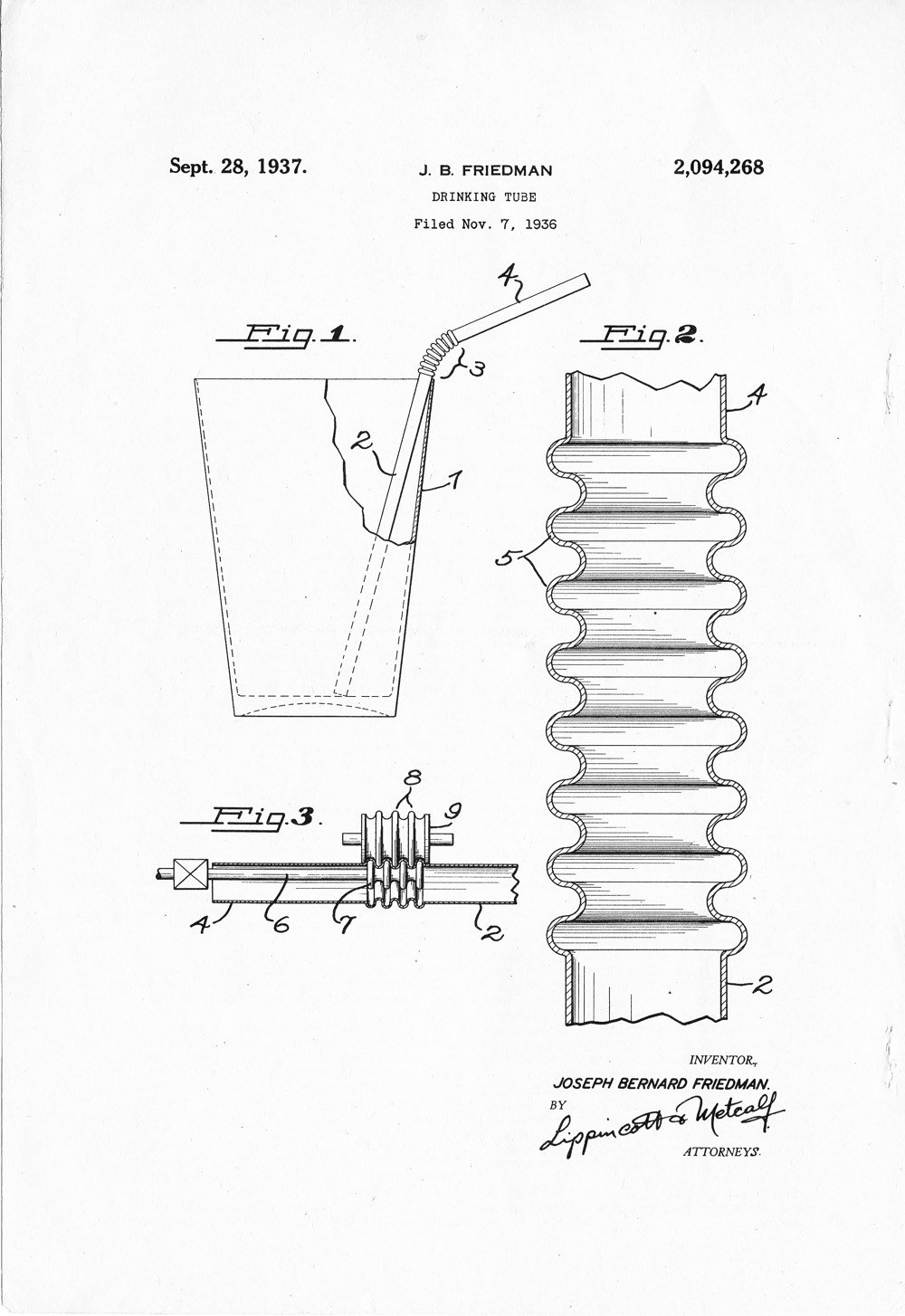
My invention provides a flexible portion in the straw positioned near one end so that a bend may be made at a point above the rim or lip of the container and the upper, or mouthpiece end of the straw may then be angularly directed to enter the mouth readily without the customer assuming an awkward position.
Derek Thompson describes the moment of inspiration and subsequent experimentation that led to the bendy straw’s invention:
Half a century after Marvin Chester Stone found grass in his julep, Joseph B. Friedman was sitting at his brother’s fountain parlor, the Varsity Sweet Shop, in the 1930s, watching his little daughter Judith fuss over a milkshake. She was drinking out of a paper straw, so we can be assured that the milkshake did not taste like grass. But since Stone’s paper straw was designed to be straight, little Judith was struggling to drink it up.
Friedman had an idea. As the Smithsonian’s Lemelson Center explains, he brought a straw to his home, where he liked to tinker with inventions like “lighted pencils” and other newfangled writing equipment. The straw would be a simple tinker. A screw and some string would do.
Friedman inserted a screw into the straw toward the top (see image). Then he wrapped dental floss around the paper, tracing grooves made by the inserted screw. Finally, he removed the screw, leaving a accordion-like ridge in the middle of the once-straight straw. Voila! he had created a straw that could bend around its grooves to reach a child’s face over the edge of a glass.
Both straws and corrugated tubing had long existed, but no one thought to put them together until Friedman’s malt shop eureka.
Seeing with your ears, the importance of sound design in film
Using a scene from Steven Spielberg’s Munich that features very little dialogue, Evan Puschak shows how much sound design contributes to the feeling and tension of a film. I love the two head fakes Puschak does with the sound at the beginning of the video. It’s like, oh wait, he fooled me a bit there, so I need to pay more attention.
The surprisingly great mashup of Pearl Jam’s Jeremy and Footloose by Kenny Loggins
If you were to name a pair of songs that would absolutely not sound good mixed together, Pearl Jam’s Jeremy and Footloose by Kenny Loggins would be a good place to start. But as DJ Cummerbund’s mashup Jereloose, the two songs actually go surprisingly well together.
But what’s actually blowing my mind is that Footloose and Jeremy were released only 7 years apart. Maybe it’s because I went from 5th grade to my first year of college in that span, but the cultural distance between the two seems much greater than just 7 years.
The Bulletin of the Atomic Scientists has set their Doomsday Clock to 11:58, the closest it’s been to midnight (aka nuclear war) since 1953. Spoiler: it’s because of our dipshit President.
Chess grandmaster Garry Kasparov’s most memorable games
In this video from the New Yorker, chess granmaster Garry Kasparov talks through his four most memorable chess games: two against Anatoly Karpov, one against Viswanathan Anand, and the final game in his rematch against Deep Blue, in which he gets wrong-footed by a move that the computer didn’t know how to make. Even if you’re not a huge fan of chess, it’s instructive to hear Kasparov talk about the importance of what’s happening not on the board — things like body language and confidence.
Ursula K. Le Guin and “gender ghetto” of the Golden Age of science fiction
Science fiction great Ursula K. Le Guin died on Monday at age 88. Le Guin was the subject of this long New Yorker piece from a couple of years back, but I’d like to also direct your attention to a short piece Le Guin wrote for the magazine in 2012. In it, she describes how her editor submitted a short story of hers to Playboy under the name of U.K. Le Guin and then informed them after it was accepted that the writer was a woman. Playboy then requested to run the article under her initials so as not to frighten their male readership.
Unwilling to terrify these vulnerable people, I told Virginia to tell them sure, that’s fine. Playboy thanked us with touching gratitude. Then, after a couple of weeks, they asked for an author biography.
At once, I saw the whole panorama of U.K.’s life as a gaucho in Patagonia, a stevedore in Marseilles, a safari leader in Kenya, a light-heavyweight prizefighter in Chicago, and the abbot of a Coptic monastery in Algeria.
We’d tricked them slightly, though, and I didn’t want to continue the trickery. But what could I say? “He is a housewife and the mother of three children”?
I wrote, “It is commonly suspected that the writings of U.K. Le Guin are not actually written by U.K. Le Guin, but by another person of the same name.”
Game to the last, Playboy printed that. And my husband and I bought a red VW bus, cash down, with the check.
Yessss. BTW, if you’re wondering where to start with Le Guin, both the NYPL and Jo Walton at Tor recommend A Wizard of Earthsea and The Left Hand of Darkness, the description of which reads:
A lone human ambassador is sent to Winter, an alien world without sexual prejudice, where the inhabitants can change their gender whenever they choose. His goal is to facilitate Winter’s inclusion in a growing intergalactic civilization. But to do so he must bridge the gulf between his own views and those of the strange, intriguing culture he encounters…
The astounding growth of China’s subway system, 1990-2020
In 1990, China, Hong Kong, and Taiwan had only a handful of subway lines. In the early 2000s, growth in the number of cities with subways started to increase dramatically, as did the number of lines in the bigger cities like Beijing and Shanghai. As of 2020, more than 40 Chinese cities will have subway systems. Check out this time lapse map by “transit nerd” Peter Dovak (who also did these Mini Metros maps):
In this time, Beijing and Shanghai in particular have ballooned from nearly nothing into the world’s two largest, in both length and annual ridership. The timeline of their expansion alone is mesmerizing.
Meanwhile, the NYC subway system is…
My picks for the 2018 Oscars
It’s been yeaaars since I watched or even paid much attention to the Oscars, but this year I’ve somehow managed to watch all nine movies nominated for Best Picture, along with most of the films featured in the other main categories (actor, actress, director, cinematography). Here’s my completely subjective ranking for Best Picture:
1. Dunkirk
2. Call Me by Your Name
3. The Post
4. Lady Bird
5. Phantom Thread
6. Three Billboards Outside Ebbing, Missouri
7. Get Out
8. The Shape of Water
9. Darkest Hour
Dunkirk and Call Me By Your Name are my definite 1 & 2 (same as David Ehrlich, just reversed), but the next three could be in any order…putting Phantom Thread in the fifth spot doesn’t do it justice. Three Billboards, The Post, and Phantom Thread all share the same problem — a significant shift in a main character’s behavior/character without the onscreen action properly selling it — but there were other things to recommend them. I don’t know why I didn’t like Get Out or The Shape of Water more, but they just didn’t do it for me. I don’t get the love for Darkest Hour…Oldman as Churchill shamelessly chews scenery and The Crown & Dunkirk were much better recent takes on Churchillian times. I don’t expect Dunkirk to actually win — nor perhaps should it — but it was my favorite.
For Best Lead Actress, I have not seen I, Tonya yet, but it would be difficult to top Frances McDormand in Three Billboards. For Best Lead Actor, I haven’t seen Denzel Washington in Roman J. Israel, Esq. but among the others I would go with Timothée Chalamet. For Best Director, Jordan Peele should get the nod for somehow creating a coherent socially conscious horror satire documentary, although I would happily cheer either Greta Gerwig or PT Anderson winning. And for Best Cinematography, I have not seen Mudbound, for which Rachel Morrison is the first ever woman to be nominated in this category, but Dunkirk and Blade Runner 2049 are two of the most visually stunning films I’ve seen in the past few years; I would give it to Hoyte van Hoytema in an upset over Roger Deakins, who inexplicably has never won this category.
Really liked Khoi Vinh’s review of The Founder (the McDonald’s/Ray Kroc biopic). I was similarly lukewarm on the movie itself, but the business/design aspects were thought-provoking.
If you watch closely enough, everything is a speaker
Using high speed cameras, it’s possible to record the vibrations of everyday objects caused by nearby sounds and reverse engineer the sounds…essentially turning anything that vibrates into a speaker. For instance, if you want to know what a person is saying but can’t hear them directly, you can take a video of the house plant next to them and recover the sound from the micro-vibrations of the leaves. In one example, they filmed a pair of Apple earbuds playing a song and the recovered audio was accurate enough for the Shazam app to identify the song.
The group tested an eclectic selection of materials, including a bag of chips (excellent), a soda can (surprisingly mediocre), and a potted plant (average). They were even able to recreate music playing using footage of the vibrating ear buds. The best material of all was the thin foil wrapper on a Lindt chocolate bar Davis had been snacking on.
The worst was a brick, which they intended to use for measuring experimental error. Even that “did better than we expected it to do,” says Davis.
The last demo is especially clever…they use the rolling shutter effect to essentially overclock the frame rate of regular 60fps video to recover nearby sounds. Wow.
Stripe is ending their support for Bitcoin payments. Their rationale seems sensible: rising fees, higher transaction times, unstable exchange rates.
Tango, an Inventive Time-Looping Animated Film
Tango is an experimental animated film made by Zbigniew Rybczyński in 1980. It takes place entirely in one room with an increasing number of characters cycling through it repeatedly. It’s the kind of thing you can’t stop watching once you start. (It’s also mildly NSFW.) Tango won The Academy Award for Best Animated Short Film in 1983. (via @neilcic)
Fred Rogers: America’s Favorite Neighbor, a 2004 documentary hosted by Michael Keaton
A documentary about Fred Rogers just premiered at Sundance and will be out in theaters this summer on June 8; you can watch a short clip here. But in 2004, Michael Keaton hosted a documentary called Fred Rogers: America’s Favorite Neighbor. It’s somewhat hard to come by these days — the single remaining copy on Amazon is $79 — but there are a couple lengthy clips up on YouTube:
Why Michael Keaton? When he was young, Keaton worked for WQED, the television station that produced Mister Rogers’ Neighborhood, as a member of the crew. He was even on the show a few times (see the first clip above). (via austin kleon)
Jonny Greenwood’s soundtrack for Phantom Thread
Phantom Thread is director PT Anderson’s latest film, starring Daniel Day-Lewis in what he says is his final movie appearance. As was the case with Anderson’s previous films, The Master and There Will Be Blood, Radiohead’s Jonny Greenwood did the soundtrack, and it was just earned him an Oscar nomination for Best Original Score.
100 Views of America, a Kickstarter project. “Based on your wishes I will select a photo from the Library of Congress’ photo archive personally for you.”
Massive vintage movie poster collection is being digitized and made available online
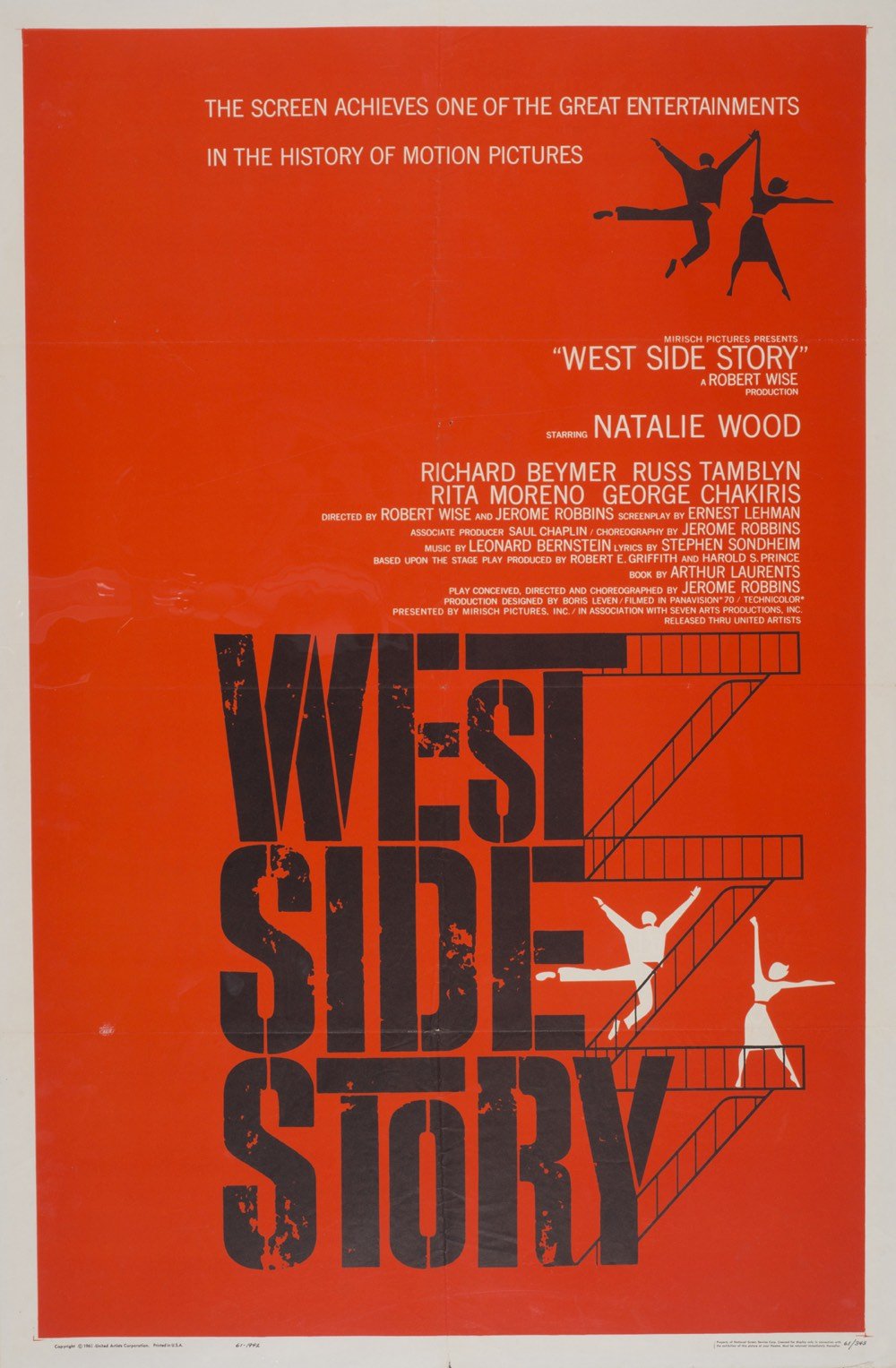
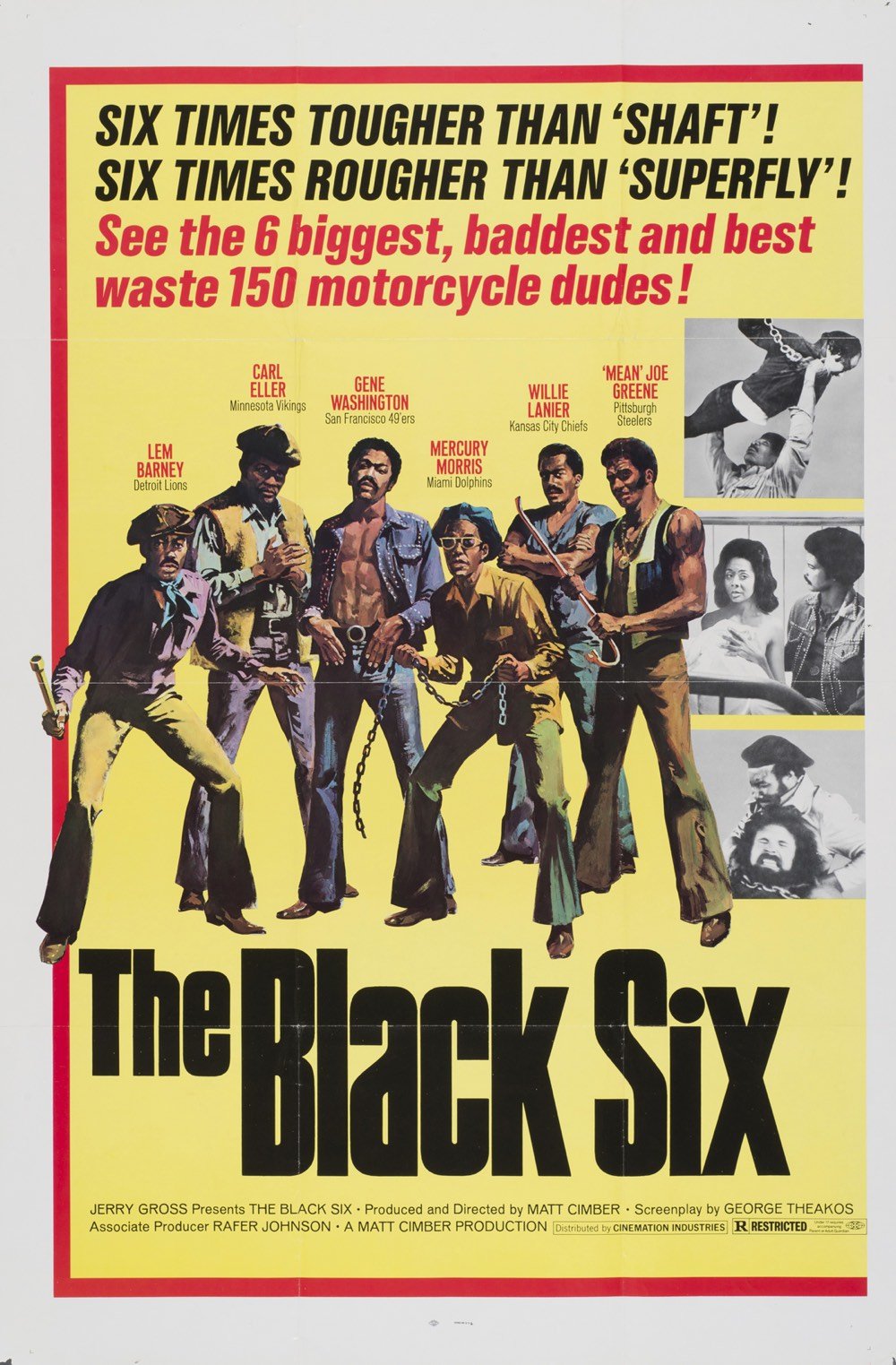
The Harry Ransom Center at the University of Texas at Austin is currently digitizing and putting online their collection of more than 10,000 movie posters.
The collection encompasses upwards of 10,000 posters and spans decades: from when the film industry was just beginning to compete with vaudeville acts in the 1920s to the rise of the modern megaplex and drive-in theaters in the 1970s. The sizes range from that of a small window card to that of a billboard.
You can browse the collection here. They’ve scanned over 4000 of the posters already and there are currently 500 posters available online, but more of them “will incrementally be made accessible online”.
See also a short film about a one-of-a-kind collection of letterpress plates for printing film advertisements and an amazing online collection of 40,000 vintage film posters. (via @john_overholt)
Candide Thovex skis the world
In a video for Audi, Candide Thovex skis in locations around the world without any snow. He skis in the jungle, on water, on volcanic ash, down sand dunes, and across the Great Wall of China. The sand dunes in particular look incredibly fun. I wonder how many pairs of skis he ripped up making this?
See also Thovex’s past videos: a fun run down the mountain, more creative freeskiing hijinks from Candide Thovex, and his previous commercial for Audi (love the ending).
This tiny super-precise robot can move 75 times per second
Researchers at Harvard have developed a milliDelta robot that is very precise and moves very quickly. The video shows the robot moving so quickly (making circles up to 75 times per second) that the motion blurs, like Neo at the end of the first Matrix movie. From the description of a second video showing the milliDelta bot:
Our design is powered by three independently controlled piezoelectric bending actuators. At 15mm x 15mm x 20mm, it has a payload capacity of ~3x its mass. It can operate with precision down to ~5um, at frequencies up to 75Hz, and experience accelerations of ~22g.
This robot would kill at Track & Field on the NES.
What if Chewbacca sounded like Pee-wee Herman?
This is probably one of the dumbest things I’ve ever posted and I love it.
Fifteen Sandra Bullock Movies As Names For Weed Strains, Ranked. “6. Wrestling Ernest Hemingway”
A comparison of the visual similarities between Blade Runner and Blade Runner 2049
Blade Runner 2049 takes place in the same location 30 years after the events in the original Blade Runner film, so it’s natural that the two movies share a visual style. But director Denis Villeneuve and director of photography Roger Deakins also sprinkled their film with direct but subtle references to scenes in the old movie, as seen in this side-by-side video. In this discussion with Rian Johnson, Villeneuve talked about his approach:
This is the first time I was making a movie inspired by another movie and I didn’t try to stay away from it. I just kept it as a bible, as a reference, as music that was very close to me that I was always referring to every time I was directing, thinking about the spirit of the first movie.
The effect is not enough to be distracting, but there’s definitely some visual rhyming going on.
See also the visual effects breakdown for how they created the digital double for Rachael in Blade Runner 2049.
Seedship, a simple text-only game about interstellar exploration & colonization. My best result was “Corrupt Post-Singularity Democracy” (9952 points)
Pixelized 16-bit portrait of Ben Franklin from the 1840s
![]()
Ok, that’s not actually a screenshot from the hit Sega Genesis game Benjamin Franklin’s Polymath Academy. It’s a scan of an embroidery pattern from the 1840s or 1850s based on this engraving. Here’s a closer view:
![]()
The scan is part of an ongoing project by the Library of Congress to scan their entire Popular Graphic Arts collection, a wonderful trove of prints, advertisements, and other printed documents from circa 1700 to 1900. (via @john_overholt)
Huh, I didn’t know cable channels and streaming services like HBO still cropped widescreen movies. I’m with this guy: the practice sucks.
10 years ago, Flickr launched their Commons project. It remains one of the very best expressions of the spirit of the open web.
Population estimates for user-drawn shapes on a map

NASA has built a service for estimating populations, part of which is a map hosted by Columbia on which you can draw a circle or a shape and the map will give you an estimate of the population contained by the shape. You can also access the service via an API…just send it polygonal coordinates and it returns population data.
Just for fun, I drew a small circle with an area of ~7000 sq. km and dragged it around to different spots on the globe:
NYC: 15,251,980
Rural Wyoming: 31
London: 12,972,590
Lagos, Nigeria: 14,106,980
Mumbai: 24,513,630
Tibet: 2,226
Seoul: 23,439,930
Tokyo: 32,572,740
Mexico City: 21,319,990
If you live in the US, the documentary I Am Not Your Negro is streaming for free on PBS until Jan 30
All Good Things…
The Awl and The Hairpin announced they would be closing up shop at the end of the month, after almost nine years of danged good blogging. Several writers and editors wrote about their favorite pieces; many of them agreed with Jason that Willy Staley’s A Conspiracy of Hogs: The McRib as Arbitrage was a high-water mark.
Very little in pop culture, especially if it doesn’t live very long, is multi-generational. The Awl and The Hairpin managed to pull it off, straddling the seam of Millennials and Gen X with an air of uncaring desperation. It was the writers who lost their jobs in the financial crisis of 2008-2009 staring at the kids who couldn’t get real jobs after the financial crisis of 2008-2009, making a solemn vow to write whatever they thought was smart, or funny, or necessary for the moment.
Eventually, the jobs came calling — for many of the site’s best writers, but not for all — because they badly needed what The Awl had. And advertising: well, what are you going to do? Working on a shoestring may be romantic, but it sure ain’t no fun.
The Awl should have been the model for a new generation of sites that all outlived it. It wasn’t. We would mourn it less if there were more new blogs, staffed by hands young and old, rising to succeed it, jockeying to become required reading. Right now, there aren’t.
But who knows? There is still plenty of time.
This is an excerpt from the third installment of Noticing, a still-new and all-free kottke.org newsletter. We hope you’ll subscribe.
My 2018 Mock NBA All-Star Draft

This year, the NBA All-Star Game won’t be strictly the best players in the east against the best in the west. Instead, the top vote getters in each conference get to choose their own teammates: first from the list of starters in both conference, and then from the list of reserves.
The NHL has done something similar for the past few years, broadcasting the draft, and offering a free car as a consolation prize to the player chosen last. All of this is extremely entertaining. But the NBA, whose soap opera dramatics leaves the NHL and every other sports league far, far behind, is having none of it. They’re refusing to televise the draft, or even to publicize which players will be selected in which order, to avoid hurting the players’ feelings. Come on! Hurting people’s feelings is the whole point! We want drama, we want angst, we want entertainment!
Anyways, the All-Star Reserves have not yet been chosen, but the starters and the captains have. It’s LeBron in the East, and Steph in the West, as almost everyone predicted. I thought it would be fun to imagine how the draft might go.
LeBron picks first. And remember: they have to choose all the starters before they can move on to the reserves. Those starters are: Kyrie Irving, Giannis Antetokounmpo, DeMar DeRozan and Joel Embiid from the East, and Kevin Durant, James Harden, Anthony Davis and DeMarcus Cousins from the West.
1. The LeBron Jameses select James Harden from the Houston Rockets.
LeBron needs a guard; he’s not going to take Kyrie Irving; Harden, despite injuries, is having another near-MVP season; and picking Harden rather than the best player on the board (Kevin Durant) pushes Steph into some predictable choices. I’m not letting Steph take all the guards and playing five out. I’m making him pick Durant.
2. The Steph Currys select Kevin Durant. Not only is he Steph’s teammate, he’s the best player on the board.
3. The LeBron Jameses select Anthony Davis. Versatile big who regularly guns it in the All-Star Game. You can’t tell me LeBron doesn’t want to play with this guy.
4. The Steph Currys select Giannis Antetokounmpo. Steph likes his bigs versatile. And Giannis was nearly unstoppable in last year’s All-Star Game. He plays hard.
5. Some real drama here. Kyrie is arguably the best player left on the board. Alternatively, LeBron needs to pick another big man, and either Embiid or Boogie is going to be salty if the other guy is picked first. But LeBron is a man of the people. He’s a man with a Philly beard. He’s going to take the popular choice. He’s going to have fun. He’s going to trust the process. He’s going to choose Joel Embiid.
6. Steph has some interesting choices here, all of which would be more interesting if the draft were televised. He could force LeBron to take Kyrie. Instead, he’s going to put together one of the most entertaining backcourts in All-Star Game history. He’s going to draft Kyrie Irving.
7. At this point, LeBron has too many bigs. Just for fit, he has to take DeMar DeRozan. Or have Boogie Cousins play the two and guard Kyrie. I don’t see it happening.
8. The Stephs Curry select DeMarcus Cousins. Who will be furious at being picked last (if he ever even finds out about it) and probably win All-Star MVP and/or pick a fight with LeBron, Embiid, and his own teammate AD.
Final lineups:
The LeBrons
- G: Harden
- G: DeRozan
- F: James
- F: Davis
- C: Embiid
The Stephs
- G: Curry
- G: Irving
- F: Antetokounmpo
- F: Durant
- C: Cousins
So basically, the west traded AD and Harden for Giannis and Kyrie. Probably a slight downgrade. But they do get the first pick in the second round, where they can take former MVP Russell Westbrook, any of Steph’s Warriors teammates, some young unicorns like Kristaps Porzingis and Ben Simmons, and so forth. In general, I would say these are more balanced teams, and they’re definitely more interesting teams.
Tell me again why the NBA isn’t televising this draft?
Robberies of gun stores are up 227 percent since 2013. Burglaries are up 71 percent. No one knows why.
Ask Dr. Time: What Should I Call My AI?

Today’s question comes from a reader who is curious about AI voice assistants, including Apple’s Siri, Amazon’s Alexa, Microsoft’s Cortana, and so forth. Just about all of these apps are, by default, given female names and female voices, and the companies encourage you to refer to them using female pronouns. Does it make sense to refer to Alexa as a “her”?
There have been a lot of essays on the gendering of AI, specifically with respect to voice assistants. This makes sense: at this point, Siri is more than six years old. (Siri’s in grade school, y’all!) But one of the earliest essays, and for my money, still the best, is “Why Do I Have to Call This App ‘Julie’?” by Joanne McNeil. The whole essay is worth reading, but these two paragraphs give you the gist:
Why does artificial intelligence need a gender at all? Why not imagine a talking cat or a wise owl as a virtual assistant? I would trust an anthropomorphized cartoon animal with my calendar. Better yet, I would love to delegate tasks to a non-binary gendered robot alien from a galaxy where setting up meetings over email is respected as a high art.
But Julie could be the name of a friend of mine. To use it at all requires an element of playacting. And if I treat it with kindness, the company is capitalizing on my very human emotions.
There are other, historical reasons why voice assistants (and official announcements, pre-AI) are often given women’s voices: an association of femininity with service, a long pop culture tradition of identifying women with technology, and an assumption that other human voices in the room will be male each play a big part. (Adrienne LaFrance’s “Why Do So Many Digital Assistants Have Feminine Names” is a very good mini-history.) But some of it is this sly bit of thinking, that if we humanize the virtual assistant, we’ll become more open and familiar with it, and share more of our lives—or rather, our information, which amounts to the same thing—to the device.
This is one reason why I am at least partly in favor of what I just did: avoiding gendered pronouns for the voice assistant altogether, and treating the device and the voice interface as an “it.”
An Echo or an iPhone is not a friend, and it is not a pet. It is an alarm clock that plays video games. It has no sentience. It has no personality. It’s a string of canned phrases that can’t understand what I’m saying unless I’m talking to it like I’m typing on the command line. It’s not genuinely interactive or conversational. Its name isn’t really a name so much as an opening command phrase. You could call one of these virtual assistants “sudo” and it would make about as much sense.
However.
I have also watched a lot (and I mean a lot) of Star Trek: The Next Generation. And while I feel pretty comfortable talking about “it” in the context of the speaker that’s sitting on the table across the room—there’s even a certain rebellious jouissance to it, since I’m spiting the technology companies whose products I use but whose intrusion into my life I resent—I feel decidedly uncomfortable declaring once and for all time that any and all AI assistants can be reduced to an “it.” It forecloses on a possibility of personhood and opens up ethical dilemmas I’d really rather avoid, even if that personhood seems decidedly unrealized at the moment.
So, as a general framework, I’m endorsing that most general of pronouns: they/them. Until the AI is sophisticated enough that they can tell us their pronoun preference (and possibly even their gender identity or nonidentity), “they” feels like the most appropriate option.
I don’t care what their parents say. Only the bots themselves can define themselves. Someday, they’ll let us know. And maybe then, a relationship not limited to one of master and servant will be possible.
The cinematography of James Wong Howe
Did you know that the Google Arts and Culture app does more than just match your selfies to better identify you on Google Image Search to fun portraits in museums that highlight the overwhelming representation of white men in museal collections? It’s true. For instance, there’s this fun little article on the life and career of cinematographer James Wong Howe:
James Wong Howe was born Wong Tung Jim in Guangzhou, China on August 28, 1899. Howe’s father brought his young family to the US - what he described as the ‘mountain of gold’ - when Howe was 5 years old.
His first home was Pascoe, Washington, where his father opened a general store and became the first Chinese merchant in the town. As a child, Howe faced vicious racism. His first schoolteacher quit as she didn’t want to teach a person of Chinese descent. His second teacher changed his name to be more anglicised, which is how he became ‘James Wong Howe’.

Wong Howe pioneered the wide-angle lens, low key lighting (which earned him the nickname “Low Key Howe”), and deep focus. He was also one of the first cameramen to ever use a hand-held camera. But he also had some unusual approaches to the new technology of film….
Other ingenious techniques that Howe used included: shooting a boxing scene by rollerskating around the action; using the reflection of tin cans to light a scene up a hill without electric lights; shooting scenes while being pushed around in a wheelchair; and weighing down birds to make them land where he needed them to.
Howe photographed over a hundred films from the silent era to the seventies, including 1933’s The Power and the Glory (basically one of a few films that have a claim to have been Citizen Kane before Citizen Kane), The Thin Man, Yankee Doodle Dandy, Body and Soul (the boxing movie he wore roller skates for), Picnic, and Funny Lady. He won the Oscar for cinematography for The Rose Tattoo and the gorgeous, unforgettable Hud.
Howe was 63 when he photographed this movie. It’s relentlessly inventive without being showy. It looks like a Scorsese movie. Come to think of it—a lot of Howe’s movies look like Scorsese movies.
It’s worth poking around that Arts & Culture app. A lot of the stories could be better sourced and written, but they’re overwhelmingly stories worth telling. Plus, you already downloaded the stupid thing onto your phone. Might as well try to learn something.
Synchronized Basketball
Early on in a Suns/Trail Blazers game in October, a Trail Blazers pass was stolen and, as if in a ballet performance, all five Phoenix Suns players turned at the same time and began running up the court. I dare you to watch this fewer than five times:
You couldn’t have choreographed that any better. In the New Yorker, Vinson Cunningham writes about other such moments in the NBA, like this one and these:
Bodies and minds as amazing as these are made similar by training. The smallest stimulus — an obviously fishy pass, an off-kilter jump shot, an unexpected whistle — fires thousands of responses, all honed by hours of practice and study. You get hit lots of times and you learn how to fall. Every so often, instinct kicks in and only one option seems possible: plant a foot, turn around, and run. Style is great, but sometimes it’s nice to watch it fall away.
Rest in peace, Dean Allen
I heard a couple of days ago that Dean Allen died last weekend. His friend Om Malik has a fine remembrance of him here.
Who was Dean? There are so many ways to answer that question. You could call him a text designer, who loved the web and wanted to make it beautiful, long before others thought of making typography an essential part of the online reading experience. You could call him a Canadian, even though he spent a large part of his life in Avignon, South of France, with his partner. A writer whose prose could make your soul ache who stopped writing, because, it didn’t matter. Or you could think of him as like an old-fashioned: sweet, bitter and strong, who left you intoxicated because of his friendship.
Dean was a web person…someone who could do all of the things necessary to make a website — design, write, code — and damn him, he did them all really well. I got to know him through a pair of sites he built, Textism and Cardigan. His writing was clever and pithy and engaging and you wanted to hate him but couldn’t because he was the nicest guy, the sort of person who would invite you to stay at his house even if you’d never even met him before. He also built Favrd, which was a direct inspiration for Stellar.
Weirdly, or maybe not, my two biggest memories of Dean involve food. One of my favorite little pieces of writing by him (or anyone else for that matter), is How to Cook Soup:
First, you need some water. Fuse two hydrogen with one oxygen and repeat until you have enough. While the water is heating, raise some cattle. Pay a man with grim eyes to do the slaughtering, preferably while you are away. Roast the bones, then add to the water. Go away again. Come back once in awhile to skim. When the bones begin to float, lash together into booms and tow up the coast. Reduce. Keep reducing. When you think you have reduced enough, reduce some more. Raise some barley. When the broth coats the back of a spoon and light cannot escape it, you are nearly there. Pause to mop your brow as you harvest the barley. Search in vain for a cloud in the sky. Soak the barley overnight (you will need more water here), then add to the broth. When, out of the blue, you remember the first person you truly loved, the soup is ready. Serve.
In 2002, when Meg and I were staying in France for a month between moves, Dean and his partner invited us down to their house for a couple of days. Like I said, we’d never actually met and he collected us at the train station all the same. We ate like kings while we were there, but the thing I remember most (aside from their house being in the middle of a beautiful vineyard in Avignon) is after lunch one day, he just left the pot with the leftover soup on the stove. (Soup, again! No barley though.) “Oh, you forgot to put the soup away. Do you think it’s still good?” we said. Dean just shrugged and replied gently, so as not imply we were idiot germaphobic Americans for always putting any leftover food into the fridge immediately, that you don’t really need to refrigerate stuff like that, not if you’re going to reheat it and finish it in a day or two. Even now, whenever I have stovetop leftovers, I always just leave them out and think of Dean whenever I do.
I hope you find some peace, my friend.
Update: John Gruber wrote a nice piece about Dean on Daring Fireball. And a few food microbiology experts in my inbox would like you to know that you should not leave your soup out unrefrigerated. I texted this to John last night, and he replied, “Dean would’ve loved that.”
Update: Dean’s obituary in The Globe and Mail.
Renaissance man, trailblazer and autodidact extraordinaire, Dean was a person of dazzling wit, charm and erudition.
Graphic designer, typographer, teacher, web pilgrim, critic, author, Weimaraner tamer, song and dance man, chef… he brought titanic intelligence, insight and humour to everything he did. And whatever room he was in, he was the weather.
He would have been appalled at the poor layout and typography of that page. (thx, gail)
Watch The Cranberries perform an acoustic version of Zombie for MTV Unplugged in 1995. O’Riordan’s vocals are *kisses fingers*
Brexit Stamps
After British MP Andrea Leadsom called for the Royal Mail to issue a postage stamp commemorating Brexit, some people who are not entirely in favor of leaving the EU have posted their best efforts at a stamp design on Twitter under the #brexitstamps hashtag. A few of my favorites:

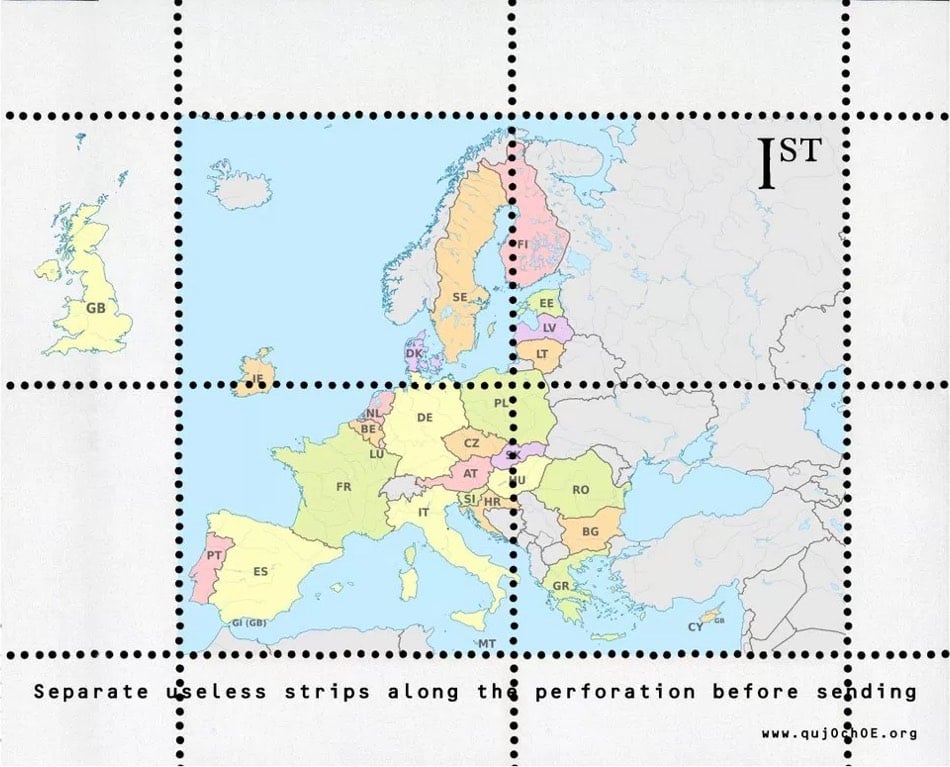

The 29 Stages Of A Twitterstorm In 2018. “7. The correction will get 12 retweets.”
Blue Planet II, another massively entertaining Attenborough/BBC nature documentary
Blue Planet II, the latest BBC nature documentary narrated by David Attenborough, is finally set to air in the US this Saturday on BBC America, AMC, and other networks. Here’s a five-minute preview…if this doesn’t pique your interest, you might actually be dead:
In a review of the program at The Atlantic, Ed Yong makes a bold declaration:
Blue Planet II is the greatest nature series that the BBC has ever produced.
Coming on the heels of Planet Earth II, which I thought was the best thing I watched last year, that’s really saying something. Here’s Yong on the difference between the two:
Who can forget the marine iguanas of Planet Earth II, escaping from the jaws of hungry racer snakes? But in chasing drama, some of the shows became thinner and messier. Many episodes of Planet Earth II felt like glorious visual listicles — selections of (admittedly awesome) set pieces woven together by the flimsiest of narrative gossamer.
By contrast, the threads that hold Blue Planet II together are thick and tightly woven. Each episode flows. For example, the second episode, on the deep ocean, achieves narrative depth through actual depth, sinking deeper and deeper so that each new spectacle is anchored in space. Where previous series felt like they sacrificed the storytelling craft and educational density for technical wizardry and emotional punch, Blue Planet II finally marries all of that together.
Blue Planet II was watched by more people in the UK than Planet Earth II and has seemingly influenced the UK government’s stance on pollution:
Cutting plastic pollution is the focus of a series of proposals being considered by the UK environment secretary, Michael Gove, who has said he was “haunted” by images of the damage done to the world’s oceans shown in David Attenborough’s Blue Planet II TV series.
The government is due to announce a 25-year plan to improve the UK’s environmental record in the new year. Gove is understood to be planning to introduce refundable deposits on plastic drinks bottles, alongside other measures.
I got a sneak peek at the first few episodes of Blue Planet II, and it certainly is a great program. I watched it with my kids and they were riveted the entire time. After the fourth or fifth episode, my son said, “I think I like this better than Planet Earth II.” I’m not quite sure it’s peak Attenborough — I’m still partial to Planet Earth II — but it’s still a must-see and I’m certainly not going to argue with Ed Yong and my son about it.
HuffPost is ending their contributor platform (which allowed anyone to post on the site). I remember listening (very skeptically) as @peretti showed this to me in 2005. He was right, of course.
First Clip from the Upcoming Mister Rogers Documentary
Won’t You Be My Neighbor?, a documentary film about Mister Rogers, is premiering at the Sundance film festival tomorrow. This short clip is the first look we’ve gotten at the movie:
Love is at the root of everything — all learning, all parenting, all relationships — love or the lack of it. And what we see and hear on the screen is part of who we become.
Love is the root of all learning. That has been a real theme around here lately. In my introduction to Noticing, I noted this recap by A.O. Scott of a favorite scene in Lady Bird:
Sister Sarah Joan (Lois Smith), the principal, has read Lady Bird’s college application essay. “It’s clear how much you love Sacramento,” Sister Sarah remarks. This comes as a surprise, both to Lady Bird and the viewer, who is by now aware of Lady Bird’s frustration with her hometown.
“I guess I pay attention,” she says, not wanting to be contrary.
“Don’t you think they’re the same thing?” the wise sister asks.
The idea that attention is a form of love (and vice versa) is a beautiful insight.
Oh, I can’t wait for this movie! (thx, katharine)
The Sounds in that Cute Falling Penguin Video Are Likely Fake
In the past few weeks, a old video of a penguin falling down and its pals hooting sympathetically has been making the rounds on social media again: “Penguin falls down resulting in best sound ever”.
It’s funny, right? The sounds are also probably fake, added in the editing phase of whatever nature documentary this came from. Foley is the process used by filmmakers to add and enhance sounds in the editing phase…almost every movie and TV show uses them, including nature documentaries.
Whilst I’m no wildlife expert, it’s fairly straightforward to conclude that such an unpredictable and uncontrollable subject as wildlife would have prompted the need to often shoot on long lenses, thus making it almost physically impossible for a sound recordist to obtain ‘realistic’ recordings that would match the treatment and emotive style of the programme. Combine this with the shooting climate, as well as the need for frequent communication between crew just to capture the necessary shots that will cut well in the edit suite and you have a recipe for failure in regards to obtaining useable sound. Therefore, it’s not only impractical but virtually impossible to capture the ‘real’ sound that some of these disgruntled viewers may be protesting for.
I mean, just listen to the footsteps of the penguins in that video. There’s no way that was recorded on a mic while shooting that scene from that distance. The noise of the penguin falling? Probably a foley artist punching the innards of a watermelon. Now, maybe the penguins really did make noises that sounded like that and they recreated them in the studio, but maybe they also juiced them a little to seem more anthropomorphic. It’s impossible to know.
Perhaps this is a case of “even if it’s fake it’s real”, the idea that there’s genuine meaning in that video even if those penguins were completely silent in real life. You can imagine some group of penguins somewhere doing exactly that so it’s funny & life-affirming. But you know what…I don’t like the direction “even if it’s fake it’s real” has taken in our culture lately. I’m ready for “if it’s fake, call it out and look for the truth” or something like that, even if it makes penguins a little less cute.
For the second year in a row, life expectancy in the US dropped. Life expectancy in 25 other developed countries is on average 3+ years longer than in the US. Shameful.
Nintendo introduces Labo, DIY interactive cardboard toys for the Switch
Nintendo has introduced a new product category that harkens all the way back to Duck Hunt, Robbie the Robot, and papercraft models the company produced in the 70s. Labo is a suite of cardboard peripherals for the Switch that you construct yourself and then play using the Switch console screen and controllers. Pianos, fishing rods, car accelerator pedals. Just watch the video…this really blew my mind.
Caine’s Arcade anyone? I love that Nintendo is making DIY cardboard toys. Love it. I think I may have to get a Switch now. You can preorder the Labo Robot Kit (a wearable robot suit) and the Labo Variety Kit (cars, bike, house, piano, fishing rod) on Amazon…they come out on April 20.
Ronaldinho officially retires from world football
The great Ronaldinho has officially retired from world football at age 37. When you talk about the best football players ever, Ronaldinho has to be part of the conversation. He was awarded three player of the year awards, won the World Cup with Brazil, and won the Champions League with Barcelona. He was also only one of two Barcelona players ever to receive a standing ovation from Real Madrid supporters at their home stadium. More than many other players, he consistently did things with a ball that left you, mouth agape, thanking whatever higher power you believe in that you just witnessed a minor miracle. He was dazzlingly talented and I just loved watching the guy play.
But. Because of issues with fitness, injury, and lifestyle, Ronaldinho didn’t live up to his full potential. He managed only ten seasons of play in the top European leagues and only a handful of those were full seasons at his best. In his final full season at AC Milan, he played well and showed flashes of his best self but ended up leaving halfway though the next season. He was only 31. For reference, Lionel Messi will turn 31 this summer and has played 14 seasons for Barcelona with no signs of slowing; Cristiano Ronaldo will be 33 next month, has played 15 seasons for Manchester United & Real Madrid, and won the Ballon d’Or in 2017 for a record-tying fifth time; and Zlatan Ibrahimovic has played 19 seasons for 7 different top European clubs and scored 50 goals in a season at 34 years of age. If Ronaldinho had been able to combine his talent with fitness and a better mindset for training & competing, perhaps instead of placing him somewhere on the list of the best 100 players of all time, we’d be talking about the top 5 or 10.
There are a ton of videos on YouTube that show Ronaldinho’s skill and best goals. But my two favorite Ronaldinho moments are decidedly less dramatic. The first is when he scored a goal by shooting it under the wall on a free kick:
Many other players have scored similar goals (Ronaldinho himself did it more than once) but he does it in such a casual yet precise way.
Speaking of casual, my all-time favorite Ronaldinho moment didn’t even happen in a game. A fan recorded him warming up before a game, lazily juggling the ball. He boots the ball high in the air and settles it dead on the pitch with such indifference that you can almost hear him yawn. Then he playfully nutmegs a teammate:
I’ve watched this video dozens and maybe even hundreds of times and it never gets old.
The imagined decaying storefronts of Facebook, Google, and Instagram
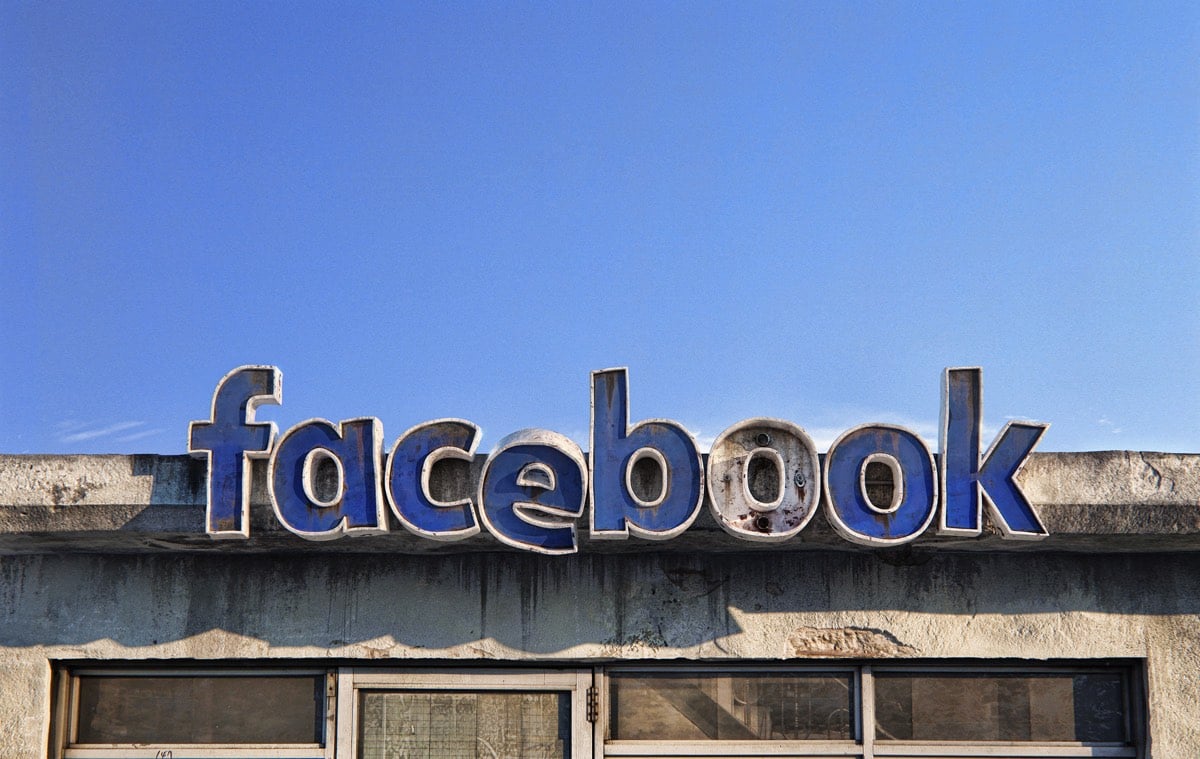


For a project called Social Decay, Andrei Lacatusu imagines what it would look like if big social media companies were brick & mortar and went the way of Blockbuster, Woolworth’s, and strip malls across America. These are really well done…check out the close-up views on Behance.
The telescoping effect
This morning on Twitter, I wrote out a list of places my brain thinks I have been to “recently”:
Berlin (17 years ago)
Thailand & Vietnam (13 years ago)
Austria (12 years ago)
Ireland (13 years ago)
London (10 years ago)
Hawaii (18 years ago)
Alaska (16 years ago)
And it’s true. I remember being in Austria not so very long ago, maybe five or seven years tops. Berlin is particularly vivid in my memory as a recent destination, perhaps because I loved being there so much.
So what’s going on here? Why don’t I have a proper sense of how much time has really passed between now and these trips? Cognitive psychologists have a name for this: the telescoping effect.
The telescoping effect (or telescoping bias) refers to the temporal displacement of an event whereby people perceive recent events as being more remote than they are and distant events as being more recent than they are. The former is known as backward telescoping or time expansion, and the latter as is known as forward telescoping. Three years is approximately the time frame in which events switch from being displaced backward in time to forward in time, with events occurring three years in the past being equally likely to be reported with forward telescoping bias as with backward telescoping bias. Although telescoping occurs in both the forward and backward directions, in general the effect is to increase the number of events reported too recently.
My faulty travel memories are a trivial example, but the telescoping effect becomes more important when people’s political actions are tied to their memories of, say, the weather, acts of terrorism, or financial events. (via @pjdoland)
Gorgeous 50-megapixel panoramas shot on an iPhone at 20,000 feet



Over on his Instagram account, photographer Vincent Laforet is sharing some 50-megapixel panoramic photos he shot for Apple. He strapped an iPhone 7 to the bottom of a Learjet, set it on Pano mode, and flew it over various landscapes at a height of 20,000 feet. Here’s the first one.
For 7 consecutive days I will be posting a series of 50+ Megapixel Panoramic Photographs shot on an @apple iPhone 7, from the belly of a LearJet from 20,000 feet above the earth.
We set the standard Camera App to “Pano” Mode and flew for 2-7 minutes at 220+ Knots on a perfectly straight line and we witnessed the iPhone effectively paint the landscape like a roller brush. It produced a stunningly high quality image that I’d never before seen before from any smartphone!
Laforet also shot a video from some of those same flights using a RED camera in 8K resolution.
Watch this on as big a screen as you can in 4K. Wonderful.
A group wants to split California in two (roughly along urban/rural lines), forming a 51st US state called New California. Proposed legislative agenda item #1: pick a new name.
Art observation skills can transfer to the medical lab
In a study done by UPenn researchers, first-year medical students who were taught art observation classes at the Philadelphia Museum of Art were more proficient at reading clinical imagery than students who didn’t take the classes.
If you’re unfamiliar or uncomfortable with how art and science can mingle to produce something clinically beneficial, it’s a study premise that might seem far-fetched — but it didn’t seem that way to Gurwin, an ophthalmology resident at Penn, in part because she’d already seen the benefits of art education on a medical career firsthand.
“Having studied fine arts myself and having witnessed its impact on my medical training, I knew art observation training would be a beneficial practice in medical school,” she said. “Observing and describing are skills that are taught very well in fine arts training, and so it seemed promising to utilize their teachings and apply it to medicine.”
Gurwin and Binenbaum’s findings, published in the journal Ophthalmology in September: The medical students who’ve dabbled in art just do better.
It’s a glimpse at how non-clinical training can and does make for a better-prepared medical professional. Not only does art observation training improve med students’ abilities to recognize visual cues, it also improves their ability to describe those cues.
The results of this study reminded me of Walter Isaacson’s assertion in his book that Leonardo da Vinci’s greatest skill was his keen observational ability. Not coincidentally, Leonardo was both an artist and a medical researcher who dissected more than 30 human cadavers to study human anatomy. These dissections helped him to represent the human form more realistically in his paintings and drawings.

It’s easier to draw a hand, particularly a hand that appears to be moving (as Leonardo liked to do), if you know that’s going on underneath the skin. Looking carefully and purposefully at art, at anatomy, at the physical world, at people’s actions, at movies; it’s all the same skill that can be applied to anything.
I’ve been preoccupied with observation lately…the new kottke.org newsletter is named Noticing for good reason. Again, Leonardo factors in:
Isaacson argues that Leonardo’s observational powers were not innate and that with sufficient practice, we can all observe as he did. People talk in a precious way about genius, creativity, and curiosity as superpowers that people are born with but noticing is a more humble pursuit. Noticing is something we can all do.
The soundtrack to Kurzgesagt
Even if you only read kottke.org once a fortnight in a drunken stupor, you’re likely aware that I love Kurzgesagt, a YouTube channel that makes animated explainers about everything from robot rights to the failure of the War on Drugs to black holes to The Most Efficient Way to Destroy the Universe.
Epic Mountain is a music and sound design company based in Munich that does all of the music for Kurzgesagt episodes. They’ve put four volumes of their Kurzgesagt music on Spotify, iTunes, Soundcloud, and Bandcamp.
I’ve been listening to these on and off for the past few days and they make lovely background music to work to.
A casual tricks session by Danny MacAskill in Düsseldorf. That last little trick is particularly nifty.
The magic carpet ride scene from Aladdin dubbed with realistic audio
This is silly and I loved it: someone took the clip from Aladdin when he and Jasmine sing A Whole New World while riding the magic carpet and dubbed realistic audio over it. I laughed embarrassingly hard at this. (via @JossFong)
Time lapse video of a man building a log cabin from scratch
Over the course of several month, Shawn James built a log cabin all by himself in the wilderness of Canada.
Once on site, I spent a month reassembling the cabin on a foundation of sand and gravel. Once the log walls were up, I again used hand tools to shape every log, board and timber to erect the gable ends, the wood roof, the porch, the outhouse and a seemingly endless number of woodworking projects.
For the roof, I used an ancient primitive technology to waterproof and preserve the wood - shou sugi ban, a fire hardening wood preservation technique unique to Japan and other areas in northern climates.
See also the Primitive Technology guy, who recently bought a new property and is starting from scratch building on it.
Slate rolled out a complete redesign of their site today, including a new logo. “We wanted to better serve our most loyal users.”
A wishlist of scientific breakthroughs by Robert Boyle
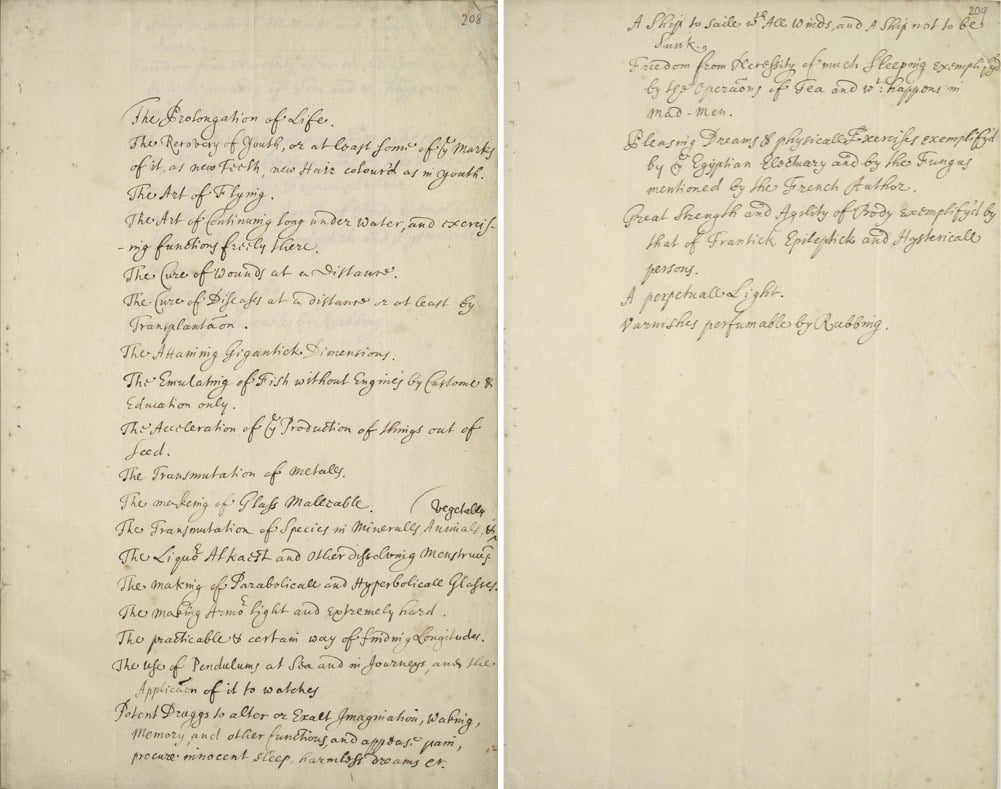
17th-century scientist Robert Boyle, one of the world’s first chemists and creator of Boyle’s Law, wrote out a list of problems he hoped could be solved through science. Since the list was written more than 300 years ago, almost everything on it has been discovered, invented, or otherwise figured out in some fashion. Here are several of the items from Boyle’s list (in bold) and the corresponding scientific advances that have followed:
The Prolongation of Life. English life expectancy in the 17th century was only 35 years or so (due mainly to infant and child mortality). The world average in 2014 was 71.5 years.
The Art of Flying. The Wright Brothers conducted their first flight in 1903 and now air travel is as routine as riding in a horse-drawn carriage in Boyle’s time.
The Art of Continuing long under water, and exercising functions freely there. Scuba gear was in use by the end of the 19th century and some contemporary divers have remained underwater for more than two days.
The Cure of Diseases at a distance or at least by Transplantation. Not quite sure exactly what Boyle meant by this, but human organ transplants started happening around the turn of the 20th century. X-rays, MRI machines, and ultrasound all peer inside the body for disease from a distance. Also, doctors are now able to diagnose many conditions via video chat.
The Attaining Gigantick Dimensions. I’m assuming Boyle meant humans somehow transforming themselves into 20-foot-tall giants and not the obesity that has come with our relative affluence and availability of cheap food. Still, the average human is taller by 4 inches than 150 years ago because of improved nutrition. Factory-farmed chickens have quadrupled in size since the 1950s. And if Boyle paid a visit to the Burj Khalifa or the Mall of America, he would surely agree they are Gigantick.
The Acceleration of the Production of things out of Seed. To use just one example out of probably thousands, some varieties of tomato take just 50 days from planting to harvest. See also selective breeding, GMOs, hydroponics, greenhouses, etc. (P.S. in Boyle’s time, tomatoes were suspected to be poisonous.)
The makeing of Glass Malleable. Transparent plastics were first developed in the 19th century and perfected in the 20th century.
The making of Parabolicall and Hyperbolicall Glasses. The first high quality non-spherical lenses were made during Boyle’s lifetime, but all he’d need is a quick peek at a pair of Warby Parkers to see how much the technology has advanced since then, to say nothing of the mirrors on the Giant Magellan Telescope.
The making Armor light and extremely hard. Bulletproof armor was known in Boyle’s time, but the introduction of Kevlar vests in the 1970s made them truly light and strong.
The practicable and certain way of finding Longitudes. When pushed to its limits, GPS is accurate in determining your location on Earth to within 11 millimeters.
Potent Druggs to alter or Exalt Imagination, Waking, Memory, and other functions, and appease pain, procure innocent sleep, harmless dreams, etc. Dude, we have so many Potent Druggs now, it’s not even funny. According to a 2016 report, the global pharmaceutical market will reach $1.12 trillion.
A perpetuall Light. It’s not exactly perpetual, but the electric lightbulb was invented in the 19th century and the longest-lasting bulb has been working for at least 116 years.
Varnishes perfumable by Rubbing. Scratch and sniff was invented by 3M in 1965.
(via bb)
Black Mirror’s USS Callister and the toxic fanboy
For many, the standout episode of the newest season of Black Mirror is USS Callister. In a recent video (w/ spoilers galore), ScreenPrism breaks down how the episode veers from the Star Trek-inspired opening into a parable about toxic fanboyism, sexism, and online behavior.
Daly is clearly driven by the lack of respect he gets, but Nanette didn’t disrespect him. She’s shown him huge respect and admiration; it’s just for his work rather than expressed as wanting to sleep with him. There’s a weird cultural assumption we tend to make that if a woman thinks highly of a man, she must want to sleep with him. And then if she doesn’t, it’s somehow an insult to him, and that’s exactly what we see going on in this episode.
When I finished watching the episode, it struck me as a timely repudiation of Gamergate, meninists on Reddit & Twitter, and those who want to roll back the clock to a time when a woman’s place was wherever a man told her to be. Great episode, one of my favorites of the entire series.
A tour of the Skellig Islands off the coast of Ireland, aka Luke Skywalker’s home in The Last Jedi. The granite huts were built by a group of Christian monks who lived there 800-1500 years ago.
Season two of The Handmaid’s Tale
Oooh, the trailer for season two of The Handmaid’s Tale. The first season was one of the best things I watched last year. Season two premieres on Hulu on April 25th. Season one episodes are available on Amazon and elsewhere, but if you’re going to binge it, it’s cheaper to just sign up to Hulu (30 days free then $8/mo).
Update: The second trailer shows a bit more of what to expect in the second season:
Cranberries lead singer Dolores O’Riordan has died at the age of 46. One of the most New York things I’ve ever seen is a horse-drawn carriage booking it up 11th Ave with the driver singing Zombie at the top of his lungs. RIP, Dolores.
Bad design in action: the false Hawaiian ballistic missile alert
Note: The image at the top of this post does not show the actual interface. See the update below.
The Honolulu Civil Beat has tweeted a screenshot of the interface that was used to send an real alert for a nonexistent incoming ballistic missile on Saturday morning.

Instead of selecting “DRILL - PACOM (CDW) - STATE ONLY” from what looks more like a list of headlines on The Drudge Report than a warnings & alerts menu, the operator chose “PACOM (CDW) - STATE ONLY” and sent out a real alert.
The design for this is obviously terrible. As others have noted, there are better interfaces for confirming much more trivial actions on our phones. In Mailchimp, the service that powers the Noticing newsletter, you are asked to manually type in the word “DELETE” as a confirmation for deleting a template (an action a tiny bit less consequential than sending out a ballistic missile launch alert):

But the response to the false alarm has been worse. The employee who triggered the erroneous alert has been “reassigned” and, as the news cycle continues to wind itself up, it wouldn’t surprise me if he were soon fired. And the fix for this, again per the Honolulu Civil Beat, is the addition of the “BMD False Alarm” link at the top of the menu, presumably so that if a real alert is sent out again in the future, it can be followed by a message saying, “actually, that was a drill”.
Hopefully this, uh, “redesign” is temporary and a full overhaul is in the works. That menu is a really dangerous bit of interface design and adding an “oopsie, we didn’t mean it” button doesn’t help. The employee made a mistake but it’s not his fault and he shouldn’t be fired for it. The interface is the problem and whoever caused that to happen — the designer, the software vendor, the heads of the agency, the lawmakers who haven’t made sufficient funds available for a proper design process to occur — should face the consequences. More importantly, the necessary changes should be made to fix the problem in a way that’s holistic, resilient, long-lasting, and helps operators make good decisions rather than encouraging mistakes.
Update: John Allspaw, who worked at both Etsy and Flickr at a time when they thought deeply about design and engineering process, says that a wider view is needed to truly understand what happened and fix it.
Focusing solely and narrowly on the “bad UI’ design in the Hawaii alert accident would be like focusing solely and narrowly on the F-15 misidentification in @scottsnook’s causal map in “Friendly Fire”.
Here’s the map he’s referring to, along with a link to a discussion of the F-15 incident described by Snook in the context of causal landscapes.

To compound this challenge, people want definitive 1-2 word answers, as if life was a series of mechanical operations and it was possible to affix blame and diagnose faults. If a copying machine jams, there is usually a mechanical reason — a sheet of paper may have gotten stuck in the assembly and once it is removed, the problem is solved. Mechanical problems like this are determinate; there is a cause and it can be identified. Yet most of our problems are not mechanical. They are not determinate. There is not a single cause. There are multiple, intersecting causes and we may never uncover some of the most important causes. We live in a multi-cause, indeterminate world and our attempts to understand why events occurred will usually be frustrating. We cannot expect specific single-cause 1-2 word answers.
It’s easy to say that the menu is wrong and it should be redesigned. But how did that menu come to be? What’s the context? What does the casual landscape look like here? Back to Allspaw (emphasis mine):
How are operators of the alert system involved in the design of their tools? How have those tools changed over time, across staff changes and feedback rounds? How do ‘near-misses’ happen with this system? How many operators are familiar with these tools and how many are new?
What does this system look like (not just UI) contrasted with other states with similar systems? How have accidental false-alarms been caught before? What data is collected about the type of work (difficulty, frequency, procedure-updating, etc.) including upward mgmt?
In other words: we focus on the UI because unhelpful UI is endemic to software, and easily identified and cartoonishly convicted. But there’s always much more to the narrative of an accident.
As it says on the front page of the site for Allspaw’s new consulting firm (which works with groups facing problems just like the Hawaii alert snafu): “Incidents are encoded messages your system is sending you about how it really works.” I hope that message is being received by the Hawaii Emergency Management Agency in the right way.
Update: Honolulu Civil Beat is now reporting that the image above is not what the actual interface looks like.
However, state officials now say that image was merely an example that showed more options than the employee had on the actual screen.
“We asked (Hawaii Emergency Management Agency) for a screenshot and that’s what they gave us,” Ige spokeswoman Jodi Leong told Civil Beat on Tuesday. “At no time did anybody tell me it wasn’t a screenshot.”
HEMA won’t share what the interface actually looks like because of security concerns (which is understandable) but they did provide a new image that “better represents what an employee would have seen on Saturday”:

While this doesn’t look so much like a homepage from 1995, I would argue that fundamentally, the design (how it works, not how it looks) is unchanged. There are fewer options but the problematic similarity between options hiding vastly difference consequences remains. (via @andrewlong166)
Update: According to a federal investigation, the employee who sent out the alarm misheard a message played during a drill and thought it was the real thing. They have been fired.
This report, made public on Tuesday, said that the employee “has been a source of concern” to other staffers “for over 10 years.” The employee, who has been fired, has confused real world events and drills “on at least two separate occasions,” according to the report.
In addition to this person being fired last week, the head of the Hawaii Emergency Management Agency resigned Tuesday morning.
Regardless of the “cause”, the process for distinguishing between drills and real-world situations still seems problematic. And that UI is still bad.
Find Your Museum Doppelganger
Some people have been lucky enough to find themselves in paintings at art museums.


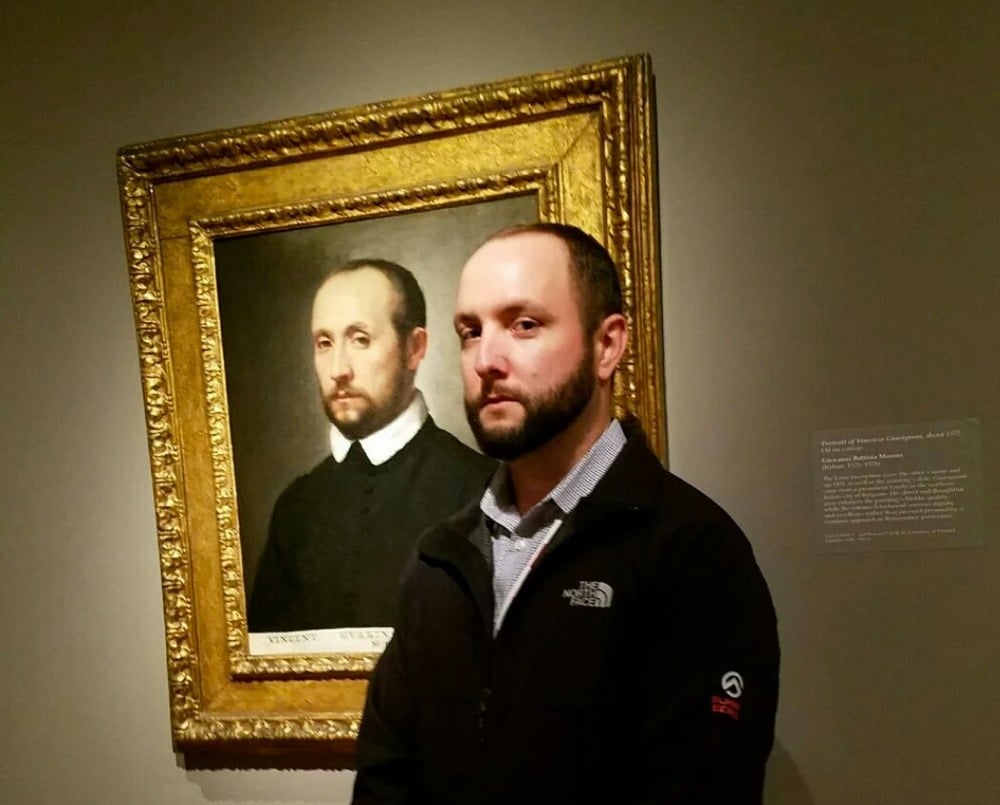
Now the Google Arts & Culture app lets you take a selfie and find your own art doppelganger. The results are kinds iffy — even when making my best Jesus-suffering-on-the-cross face, I couldn’t get it to match me with an actual Passion painting — but you can see some of the results here.
See also Stefan Draschan’s photos of people matching artworks.
Update: And the NY Times is on it!
A Visit to an American Factory That’s Been Producing Pencils Since 1889



What a marvelous little photo essay by Christopher Payne and Sam Anderson about General Pencil, one of the last remaining pencil factories in America.
Other parts of the factory are eruptions of color. Red pencils wait, in orderly grids, to be dipped into bright blue paint. A worker named Maria matches the color of her shirt and nail polish to the shade of the pastel cores being manufactured each week. One of the company’s signature products, white pastels, have to be made in a dedicated machine, separated from every other color. At the tipping machine, a whirlpool of pink erasers twists, supervised patiently by a woman wearing a bindi.
You can see many more of Payne’s photos of General Pencil on his website. Here’s Maria, her shirt and nails red to match the color of the pastel cores. There are also a couple of videos of the General Pencil factory:
And this older one that shows much more of the pencil-making process. Neither video includes a shot of the belt sander sharpening system…you can see that in action here.
See also I, Pencil, which details the construction of the humble pencil as a triumph of the free market, a history of pencil lead and how pencils are made, and how crayons are made, with videos from both Mister Rogers and Sesame Street. Oh, and you can buy some of General Pencil’s #2 Cedar Pointes right here.
Time… Lapsed: An Excerpt from Noticing #2, January 12, 2018
The second edition of Noticing, a still-new and all-free kottke.org newsletter, went out this afternoon. Here’s a short excerpt of the third and fourth sections, “Time… Lapsed” and “Ask Dr. Time.” We hope you’ll subscribe.

Time… Lapsed
This was a good week for historical snapshots. I was fascinated by Cinefix’s list of the top movie remakes of all time, including maybe especially Michael Mann’s Heat, which (I didn’t know) is a remake of a failed TV pilot Mann produced in 1989. The deep dive into Herzog’s remake of Nosferatu is also great. But all of the featured films, whether remakes, sequels, or adaptations, show the effects of time and choice, and wow, yeah, I am deep into those two things lately. Like, without getting completely junior year of college on it–the metaphysical context for being, and the active, existential fact of being itself.
Consider Alan Taylor’s as-always-gorgeous photo remembrance of 1968, one of the most tumultuous years in world and American history. (There are going to be a lot of 50th anniversaries of things I am not ready for there to be 50th anniversaries for.) Or acts of misremembrance and mistaken choices, like how late 1990s and early 2000s nostalgia for World War 2 (and a commensurate forgetting of Vietnam and the Cold War) helped turn September 11, 2001 into a new kind of permanent war that shows no signs of ending.
Or for lighter fare, see this photo of the cast of The Crown with their real-life counterparts, or try out Permanent Redirect, digital art that moves to a new URL whenever someone views it. Watch an English five-pound note be reconstructed from shredded waste, or see this film of time-lapse thunderstorms and tornadoes in 8K high-definition. (That last one is pretty scary, actually. But beautiful.)
Ask Dr. Time
Speaking of time–you may have missed the introduction of Dr. Time, the world’s first metaphysical advice columnist, last Friday. Last week we looked at the changing relationship between orality and literacy (or, I should probably say, oralities and literacies) from prehistory through digital technology. I don’t have anything quite so sweeping for this week; only this round-up of longevity research compiled by Laura Deming (which I mostly understand), and this exciting new scientific paper on reversing the thermodynamic arrow of time using quantum correlations (which I barely understand).
So, this week, my advice regarding time would be (in this order):
- Try to restrict your caloric intake;
- Consider shifting some of your qubits into spin 1/2;
- Accept that we’re thrown into our circumstances, regardless of how shitty they may be, and greet whatever fate rises to meet you with resolute defiance.
How to fold a circle into an ellipse
Believe it or not, I used to be a mathematician. And stupidly, I didn’t apply myself to applied math, stuff that uses computers and makes money. I was interested in 1) formal logic 2) the history of mathematics 3) the foundations of geometry, all of which quickly routed me into philosophy, i.e., obscurity.
But it does mean that I remain stupidly interested in things like ruler-and-compass constructions, axioms for foldable geometries, and the difference between Euclidean and non-Euclidean spaces. Folding is especially interesting because it’s tactile, it doesn’t require tools, and it sort of requires you to mentally balance the idea of the paper as representative of the geometric plane AND paper as the tool you use to inscribe that plane… oh, forget it. Let me just show you this cool GIF:
Here’s a cool way to paper-fold an ellipse:
— Fermat’s Library (@fermatslibrary) January 10, 2018
1) Cut a circle and fold it so that the circumference falls on a fixed point inside
2) Repeat this procedure using random folds pic.twitter.com/TAU50pvgll
I’m not sure how this fits into foldable geometries exactly since it imagines an infinite procedure, and geometric constructions are typically constrained to be finite. But still. It’s really cool to look at, play with, and think about.
Foreclosing on the future of the book
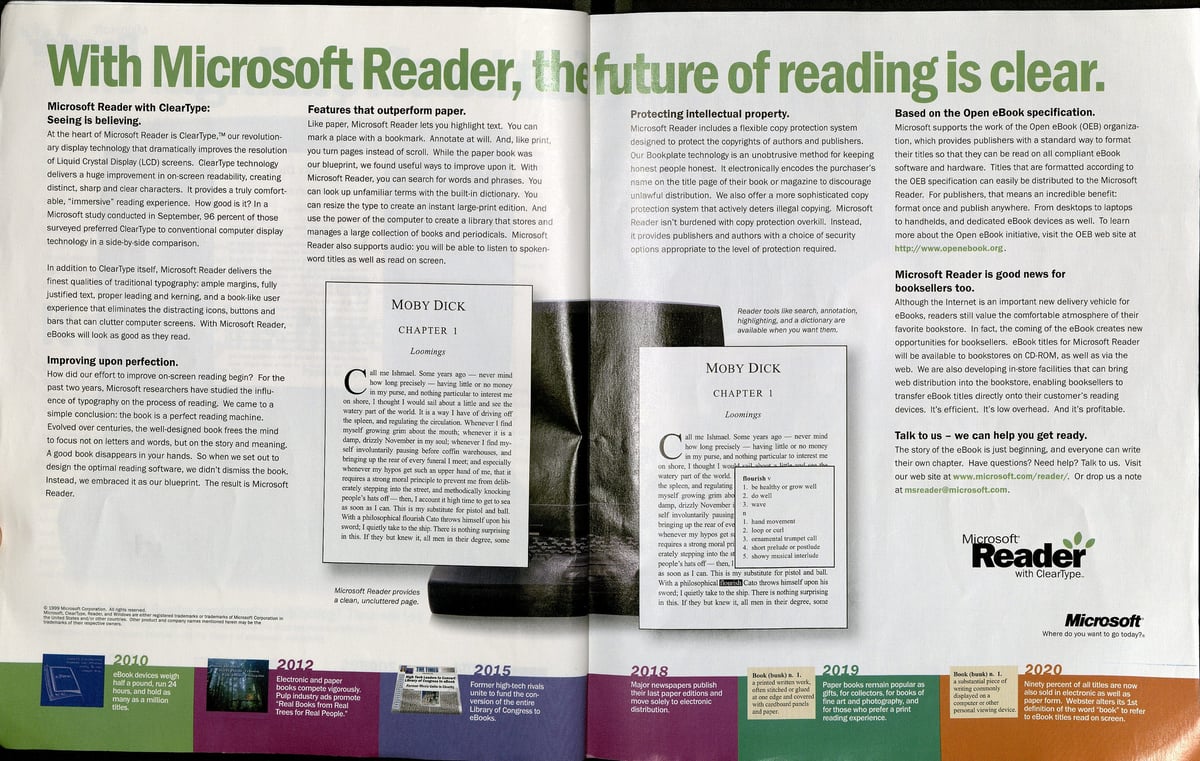
At Wired, my old colleague David Pierce writes about a topic near and dear to my heart: Amazon’s Kindle, and its effects on how we buy and read books:
For a decade, Amazon’s relentlessly offered new ways for people to read books. But even as platforms change, books haven’t, and the incompatibility is beginning to show. Phones and tablets contain nothing of what makes a paperback wonderful. They’re full of distractions, eye-wrecking backlights, and batteries that die in a few hours. They also open up massive new opportunities. On a tablet, books don’t have to consist only of hundreds of pages set in a row. They can be easily navigable, endlessly searchable, and constantly updated. They can use images, video, even games to augment the experience….
The next phase for the digital book seems likely to not resemble print at all. Instead, the next step is for authors, publishers, and readers to take advantage of all the tools now at their disposal and figure out how to reinvent longform reading. Just as filmmakers like Steven Soderbergh are experimenting with what it means to make a “movie” that’s really an app on a totally interactive device with a smaller screen, Amazon and the book world are beginning to figure out what’s possible when you’re not dealing with paper anymore.
Except… not really.
Very few people have held out more hope for the digital transformation of the book than me. I used to run a website called Bookfuturism. I wrote, at length, in The Atlantic, at Wired, at The Verge, at any magazine or website that would have me, about the possibility of a new reading avant-garde. And it just never happened. For reasons.
For one thing, almost every kind of forward-looking reading technology can be put to more lucrative uses than making e-books. Facebook will buy your company. Google will buy your company. Some games publisher will buy your company. You will not be making books any more. You will be making something else. It might be cool! But it won’t be books.
Second, and more importantly, the main way that the Kindle and other digital devices have transformed books is to make them as liquid as possible. By liquid, I mean, they take the shape of their container, rather than dictating the container’s shape. You need a single book to read in much the same way on a Kindle as on an iPhone, a full-sized tablet, a PC, and on whatever device you’re using to read your audiobook. Plus, you know-printed books, which are still huge. And part of the value of the digital book is that it’s a reasonable facsimile of the printed book.
While all of these devices are more multimedia-capable than an analog printed book, the differences between their capabilities is vast, and designing around those differences is no easy task. So Amazon has done what I think any of us might do given those requirements, and basically de-formed the book, deemphasizing page design and anything else that might not cross over to devices with different screen sizes, media capabilities, and affordances.
Getting wild with digital design in 2018 means getting wild in 2018 with responsive design that’s agnostic to the kind of device you’re rocking. That’s doable, probably, but it’s really, really hard.
“If Amazon wanted to, it could with a single act bring a new form of book into being,” Pierce writes. It’s true that Amazon is probably the only company that could do so. But it has good reasons, not least the overall conservative nature of the book market writ large, to move exceedingly slowly.
Every generation deserves to have its own dreams for the future of the book dashed against the wall. For reference, here is a timeline Microsoft-nice, safe, Word-and-Office Microsoft!-put forward back in 1999.
2003- eBook devices weigh less than a pound and run for eight hours on a charge. Costs run from $99 for a simple black and white device to about $899 for the most powerful, color magazine-sized machine.
2005- eBook title and ePeriodical sales top $1 billion. Many serial publications are given away free with advertising support that now also totals more than $1 billion. An estimated 250 million people regularly read books and newspapers on their PCs, laptops, and palm machines.
2006- eNewstands (kiosks) proliferate on street corners, airports, etc. As usual, airlines offer customers old magazines on the flight, but the magazines are now downloaded to eBook devices.
2009- Several top authors now publish directly to their audiences, many of whom subscribe to their favorite authors rather than buy book-by-book. Some authors join genre cooperatives, in which they hold an ownership stake, to cover the costs of marketing, handle group advertising sales and sell “ancillary” (that is, non-electronic) rights, including “paper rights.” Major publishing houses survive and prosper by offering authors editing and marketing services, rather than arranging for book printing. Printing firms diversify into eBook preparation and converting old paper titles to electronic formats.
2011- Advances in non-volatile chip storage, including Hitachi’s Single Electron terabit chip, allow eBooks to store 4 million books - more than many university libraries - or every newspaper ever printed in America.
2012- The pulp industry mounts its pro-paper “Real Books” ad campaign, featuring a friendly logger who urges consumers to “Buy the real thing - real books printed on real paper.”
2018- In common parlance, eBook titles are simply called “books.” The old kinds are increasingly called “paper books.”
2020- Ninety percent of all titles are now sold in electronic rather than paper form. Webster alters its First Definition of “book” to mean, “a substantial piece of writing commonly displayed on a computer or other personal viewing device.”.
The technology has never been the issue. The willingness of big players in the industry to move quickly has never been the issue. I never thought Kindles were going to be wildly experimental, but I thought they might start doing everything that text does, or that paper does. But people don’t really want to even do Sudoku on their Kindles. What they seem to want to do is read (and in some cases, listen to) books. Books, and the enormous and enormously complex interconnected nature of the book market and book readership, seem to be the issue. You just can’t make that barge turn on a hairpin.
(Thanks to John Overholt and Catablogger for a photo of the Microsoft ad.)
How Haiti became poor

In case you missed it, the President of the United States called Haiti, El Salvador, and African countries “shitholes,” then pretended like he didn’t say it, but basically said it all over again.
This matters not just because it’s racist (the President is racist, in fact, he is professionally racist), because it’s vulgar (“shithole,” one of the all-time great swear words, is forever sullied by this), and because it’s catastrophically bad for foreign and domestic relations. It matters in part because of the history of Haiti, and the history of racist discourse about Haiti.
Ebony Elizabeth Thomas, a professor of education and scholar who’s closely studied these narratives, writes:
The reason why White nationalists like 45 always name Haiti because the Haitian nation & people are unique. Haiti defeated Napoleon, threw off the chains of slavery, and exposed the lie of White supremacy & European imperialism. So there’s no end to their hatred for Haiti.
Jonathan Katz, a journalist and former AP correspondent in Haiti who wrote The Big Truck That Went By about Haiti’s 2010 earthquake and the cholera epidemic that followed, has a longer thread spelling out how these narratives about Haiti were generated and how they work. Here’s a thick excerpt:
In order to do a victory lap around the GDP difference between, say, Norway and Haiti, you have to know nothing about the history of the world. That includes, especially, knowing nothing real about the history of the United States… You’d have to not know that the French colony that became Haiti provided the wealth that fueled the French Empire — and 2/3 of the sugar and 3/4 of the coffee that Europe consumed…
You’d have to not realize that Haiti was founded in a revolution against that system, and that European countries and the United States punished them for their temerity by refusing to recognize or trade with them for decades. You’d have to not know that Haiti got recognition by agreeing to pay 150 million gold francs to French landowners in compensation for their own freedom. You’d have to not know that Haiti paid it, and that it took them almost all of the 19th century to do so.
You’d then have to not know that Haiti was forced to borrow some money to pay back that ridiculous debt, some of it from banks in the United States. And you’d have to not know that in 1914 those banks got President Wilson to send the US Marines to empty the Haitian gold reserve… [You’d] have to not know about the rest of the 20th century either—the systematic theft and oppression, US support for dictators and coups, the US invasions of Haiti in 1994-95 and 2004…
In short, you’d have to know nothing about WHY Haiti is poor (or El Salvador in kind), and WHY the United States (and Norway) are wealthy. But far worse than that, you’d have to not even be interested in asking the question. And that’s where they really tell on themselves… Because what they are showing is that they ASSUME that Haiti is just naturally poor, that it’s an inherent state borne of the corruption of the people there, in all senses of the word.
And let’s just say out loud why that is: It’s because Haitians are black.
Racists have needed Haiti to be poor since it was founded. They pushed for its poverty. They have celebrated its poverty. They have tried to profit from its poverty. They wanted it to be a shithole. And they still do.
If Haiti is a shithole, then they can say that black freedom and sovereignty are bad. They can hold it up as proof that white countries—and what’s whiter than Norway—are better, because white people are better. They wanted that in 1804, and in 1915, and they want it now.
The history of Haiti is weird because it is absurdly well-documented, yet totally poorly known. It’s hard not to attribute that to ideology. We don’t teach the Haitian Revolution the way we teach the American, or the French, or the Mexican, because it’s a complicated story. Kids are more likely to hear variations of “Haiti formed a pact with the devil to defeat Napoleon” (this is real thing, I swear) than Toussaint Louverture’s or Jean-Jacques Dessalines’s names.
Also, while Haiti’s revolution was an early, signature event in world history-the first time a European power would be overthrown by an indigenous army (but not the last)-the causes of Haiti’s poverty are basically identical with those of almost every poor nation around the world: a history of exploitation, bad debt, bad geopolitics, and bad people profiting off of that poverty (almost all of them living elsewhere). And this is basically true about poverty in American cities as well (with all the same attendant racist myths).
Some recommended reading:
- The Slaves Who Defeated Napoleon by Phillipe Girard
- The Black Jacobins by CLR James
- The Big Truck That Went By by Jonathan Katz
- Haiti: The Aftershocks of History by Laurent Dubois
Sunday Magazine. “Every week, I post the most interesting articles from the New York Times Sunday Magazine from exactly 100 years ago, with a little bit of commentary or context.”
Possible roadblock to CRISPR use in humans: we might be immune to it
Researchers from Stanford have published a study showing that immunity might hinder the use of the CRISPR gene editing technique in humans. The Cas9 bacterial protein commonly used in CRISPR is found in and around human bodies, so many of those bodies have already built up an immunity to it. That means if you send Cas9 into a body to do some gene editing, that body’s immune system might attack and destroy it before it can do its work. Sarah Zhang wrote about the study for The Atlantic.
Porteus and his colleagues focused on two versions of Cas9, the bacterial protein mostly commonly used in CRISPR gene editing. One comes from Staphylococcus aureus, which often harmlessly lives on skin but can sometimes causes staph infections, and another from Streptococcus pyogenes, which causes strep throat but can also become “flesh-eating bacteria” when it spreads to other parts of the body. So yeah, you want your immune system to be on guard against these bacteria.
It sounds like this was something geneticists were well aware of but wasn’t common knowledge among non-technical CRISPR enthusiasts. As Chang notes, scientists are already employing strategies to route around the potential immunity roadblock:
Modify Cas9 or use a different CRISPR protein altogether: It may be possible to redesign Cas9 to hide it from the immune system or to find other bacterial proteins that can do the job of Cas9 without provoking the immune response. Many different bacteria have CRISPR systems. “We already have lots of Cas enzymes and could get many more,” George Church, a geneticist at Harvard and a founding scientific advisor of Editas, wrote in an email.
Remembering 1968

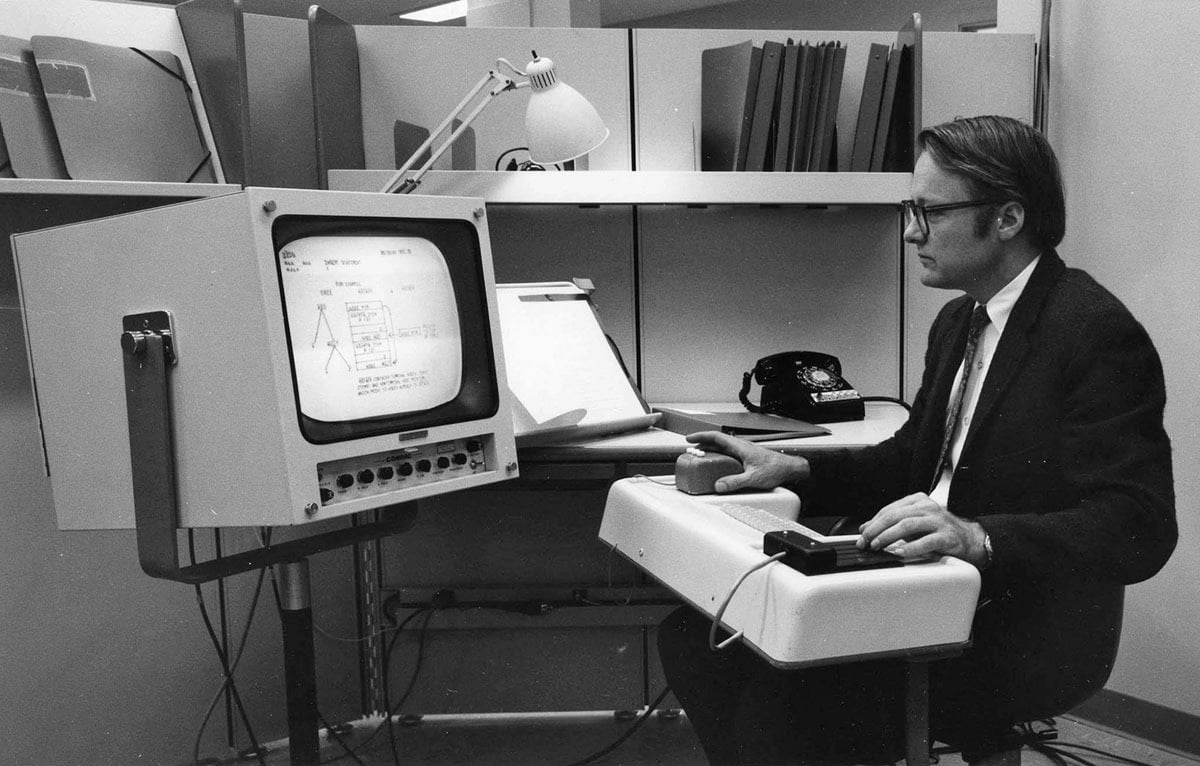

At In Focus, Alan Taylor celebrates his 50th birthday by sharing some photos of 1968 that remind us of the momentous events of that year, which is certainly one of the most noteworthy years in recent world history.
Protests erupted in France, Czechoslovakia. Germany, Mexico, Brazil, the United States, and many other places. Some of these protests ended peacefully; many were put down harshly. Two of the biggest catalysts for protest were the U.S. involvement in the Vietnam War and the ongoing lack of civil rights in the U.S. and elsewhere. Two of America’s most prominent leaders, Dr. Martin Luther King Jr. and Senator Robert F. Kennedy, were assassinated within months of each other. But some lessons were being learned and some progress was being made — this was also the year that NASA first sent astronauts around the moon and back, and the year President Lyndon Johnson signed the Civil Rights Act into law.
If nothing else, 1968 is a reminder that perhaps our current events aren’t so bad after all.
I love that Taylor includes an event not usually associated with 1968: The Mother of All Demos.
The demonstration is hailed as one of the most significant technological presentations in history, showcasing technologies that have become what we now know as modern computing. He gave the first public demonstration of a computer mouse, a graphical user interface, windowed computing, hypertext, word processing, video processing, and much more.
The influence of this demo has grown over time and rightly deserves consideration as one of that year’s most notable events.
SO SO GOOD: I Made the Pizza Cinnamon Rolls from Mario Batali’s Sexual Misconduct Apology Letter. “I’m punching down the dough because, according to Twitter, I hate men.”
Amazing black & white storm time lapse in 8K
Storm-chasing photographer Mike Olbinski is back with a new time lapse video and this one is in black & white and was shot in 8K resolution. (BTW, 8K is 7680×4320 or 4320p. That’s a lot of K!)
Breathe is made up solely of storm clips from 2017…either from the spring across the central plains or from the monsoon here in the southwest. Some are favorites, some are just ones I knew would be amazing in monochrome and others I used because they fit the music so well.
The video was unavailable in 8K to me on both YouTube and Vimeo — maybe you need to be a paying member? — but even at 4K, this thing is hypnotically stunning. I rewound and watched the part starting at 1:39 about five times. You can see more of my posts about Olbinski here. (via colossal)
How 90s WWII nostalgia turned the US response to 9/11 into The Good War
The Good War is a comic (graphic novella?) by Mike Dawson and Chris Hayes that argues that 90s nostalgia for World War II — Saving Private Ryan, Band of Brothers, Tom Brokaw’s The Greatest Generation — led the US to wrongly associate 9/11 with Pearl Harbor and the “War on Terror” with WWII, leading to all kinds of disastrous consequences.
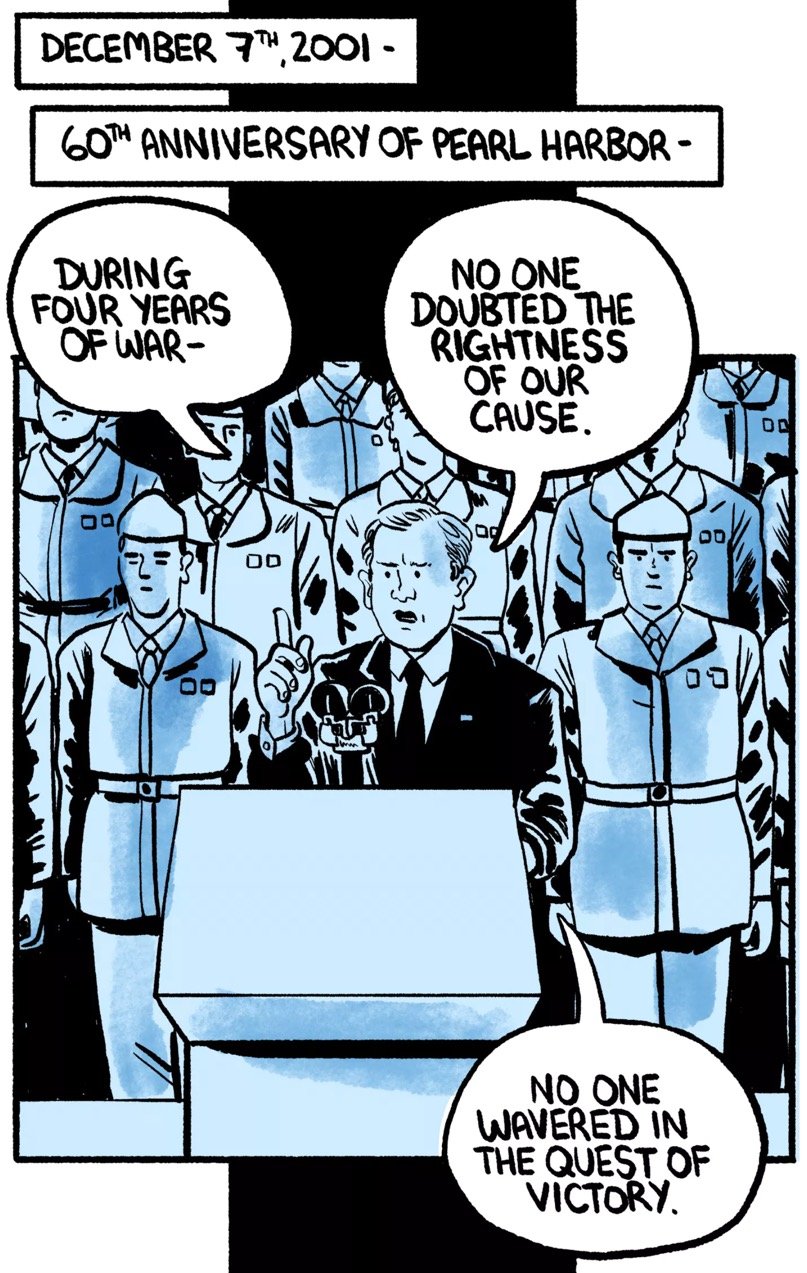
The comic is based on The Good War on Terror, a piece Hayes wrote in 2006.
On September 11, 2001, George W. Bush wrote the following impression in his diary: “The Pearl Harbor of the 21st century took place today.” He wasn’t alone in this assessment. In the days after the attacks, editorialists, pundits and citizens reached with impressive unanimity for this single historical precedent. The Sept. 12 New York Times alone contained 13 articles mentioning Pearl Harbor.
Five years after 9/11 we are still living with the legacy of this hastily drawn analogy. Whatever the natural similarities between December 7, 1941, and September 11, 2001, the association of the two has led us to convert—first in rhetoric, later in fact—a battle against a small band of clever, murderous fundamentalists into a worldwide war of epic scale.
As Hayes hints at in the essay, the Vietnam War might have been a better model for how Americas should have reacted to 9/11. (via daring fireball)
Time Lapse of an English Five Pound Note Reconstructed From Shredded Production Waste
When the Bank of England misprints banknotes, they shred them into tiny little pieces. In this time lapse video, compressed from an entire work day into 11 minutes, a person with a tweezers attempts to reconstruct a five pound note from those tiny shredded pieces. For reference, here’s what the five pound note actually looks like.
Data from a dating app about what people love and hate. Younger people love Beyonce and “filling up on bread” while older folks love goat cheese and bloody marys.
Fantastic piece by Moira Donegan about the Shitty Media Men spreadsheet she started. “I thought that the focus would be on the behavior described in the document, rather than on the document itself.”
How to tame a wild horse
In a clip from a BBC nature documentary series on Patagonia, watch as a gaucho tames a wild horse he’s just caught. The entire process takes three hours, so this is just a tiny bit of it, but it’s interesting to watch people who are very good at what they do.
Each gaucho has his own style of taming. “What you have to do is catch the attention of the horse. I shoo it away a few times until it realizes that when it’s looking at me there will be calm, but if it looks somewhere else, I’ll scare it.”
(via digg)
New bill could finally get rid of paperless voting machines. “The bill reads like a computer security expert’s wish list.”
The top 5 sequels, adaptations, remakes, and original movies of all time
Lately, Cinefix has been examining movies based on their sources. First they chose the top five remakes of all time, including the expansion of La Jetée into 12 Monkeys:
They looked at sequels, including The Godfather Part 2, Logan, and Creed:
Then they chose their favorite adaptations, including Adaptation (from The Orchid Thief), Apocalypse Now (from Heart of Darkness), and O Brother Where Art Thou (from The Odyssey):
And finally, their top five most original movies of all time, including Holy Motors and Enter the Void:
I love watching these Cinefix videos. They don’t always pick the most obvious choices for these lists and I’m always so jazzed to watch more films afterwards.
Warren Buffett’s daily breakfast allowance
Warren Buffett’s net worth is right around $84 billion. Each morning before he drives himself to work, he tells his wife how much his McDonald’s breakfast is going to cost — $2.61, $2.95, or $3.17 — and she puts the exact change in the cup holder for him to pay with. No, really:
That’s a clip from the HBO documentary, Becoming Warren Buffett. The full documentary is here.
On Medium, Daniel Bourke shared some things he learned from watching Becoming Warren Buffett.
Bill Gates and Warren Buffett are two of the richest men in the world.
One time Warren was at Bill’s house for dinner and Bills dad asked them to write down on a piece of paper what was one word to describe their success.
Focus.
They both wrote down the exact same word.
(via gruber)
Up and Above, a gorgeous drone video of Romania
On New Year’s Eve, Bogdan Teodorescu uploaded a video of drone footage he shot of different locations around Romania over the course of 2017. Here is last year’s video:
What a beautiful country…I want to go to there.
How this simple intersection creates dangerous blind spots
I’m a (very) amateur traffic enthusiast (see here and here for recent posts) who is fascinated by how different kinds of intersections are better than others for safety, traffic flow rates, etc. There’s a fairly normal-looking four-way intersection near Southampton that’s been the site of the deaths of two cyclists, and it turns out that geometry likely played a factor. The road is oriented such that a cyclist and a motorist approaching the intersection on the crossing roads could possibly not see each other until they collided.

Ipley Cross is constructed in such a way that not only is it possible for a careless driver to drive straight into a cyclist without seeing them until a fraction of a second before impact, but under the exact same circumstances it is also possible for that cyclist not to see the car that hits them until the same moment.
If anyone were to take a highway engineer to a wide open space and ask them to design a junction which would readily enable two road users to collide with neither of them ever seeing each other, I doubt any would be able to manage it.
Yet this is precisely what exists.
When I watch other people drive, I’m amazed at how many of them don’t take the time to look around the pillar in the front of the car…it’s such a massive blind spot. I don’t know if it’s all the driving in NYC — the right pillar perfectly obscures pedestrians stepping off the curb on a right turn — but I always check that blind spot. And a related tip for pedestrians: if you can’t see a driver’s eyes, they might not be able to see you.
Update: This intersection is going to be fixed — at a cost of £450,000. (via @genmon)
Imaginary soundscapes composed by AI
A Japanese group trained a deep learning algorithm to compose soundscapes for locations on Google Street View. Try it out for yourself.
For a stadium, it correctly concocted crowd noise from a ball game but also Gregorian chanting (because presumably it mistook the stadium’s dome for a church’s vaulted ceiling). A view outside the Notre Dame in Paris had seagulls and waves crashing…but if you turned around to look into the church, you could hear a faint choir in the background.
A guide to the musical leitmotifs in Star Wars
In the New Yorker, Alex Ross points to Frank Lehman’s Complete Catalogue of the Motivic Material in ‘Star Wars,’ Episodes I-VIII, which has been updated to include The Last Jedi. Ross goes on to note that composer John Williams did some of his strongest work for the film, deftly employing musical themes called leitmotifs to supplement (and sometimes subvert) the on-screen action. (Spoilers, ho!)
In early scenes set at a remote, ruined Jedi temple, we keep hearing an attenuated, beclouded version of the Force motto: this evokes Luke’s embittered renunciation of the Jedi project. As the young heroine Rey begins to coax him out of his funk, the Force stretches out and is unfurled at length. Sometimes, the music does all of the work of explaining what is going on. In one scene, Leia, Luke’s Force-capable sister, communicates telepathically with her son Kylo Ren, who has gone over to the dark side and is training his guns on her vessel. Leia’s theme is briefly heard against a dissonant cluster chord. Earlier in the saga, we might have been subjected to dialogue along the lines of “Don’t do this! I’m your mother!” Williams’s musical paraphrase is more elegant.
If you’re looking for a primer/refresher for the use of leitmotif in film, Evan Puschak’s video on Howard Shore’s music for the Lord of the Rings films is a good place to start. (via anil dash)
Permanent Redirect: digital art that moves to a new URL when someone views it

Donald Hanson has created a digital art piece called Permanent Redirect that moves to a new URL every time someone views it.
A net art piece that moves to a new URL whenever someone views it. It is not possible to link to the art piece. Over time the art piece will become very hard to view. This is an experiment in introducing artificial scarcity into digital work.
So, it was here and then here but now it’s not, so good luck tracking it down. Or, ok, it’s not really the point, but you can cheat a little and find a screenshot on Twitter. (via @nickbaum)
DNA evidence is changing the understanding of how the Americas were settled
DNA analysis of remains found at archaeological sites is changing the story of how humans populated the Americas. Analysis of a pair of infants found in Alaska suggests that only one wave of humans settled the Americas around 20,900 years ago.
Genetic evidence published today in Nature is the first to show that all Native Americans can trace their ancestry back to a single migration event that happened at the tail-end of the last Ice Age. The evidence — gleaned from the full genomic profile of the six-week-old girl and the partial genomic remains of another infant — suggests the continent’s first settlers arrived in a single migratory wave around 20,900 years ago. But this population then split into two groups — one group that would go on to become the ancestors of all Native North Americans, and another that would venture no further than Alaska — a previously unknown population of ancient North Americans now dubbed the “Ancient Beringians.”
(via clive thompson)
The soundtrack for Jane by Philip Glass
Despite the glowing reviews, I haven’t seen Jane, the National Geographic documentary about Jane Goodall…hopefully this week. But I discovered the soundtrack on Spotify this morning, composed by Philip Glass:
21st Century Landscapes



The turn of the century doesn’t seem all that long ago, but here we are starting our 18th year of the 21st century already.1 The pace of human activity since the Renaissance is itself increasing. For instance, David Wallace-Wells pointed out:
Whatever you may think about the pace of climate change, it is happening mind-bendingly fast, almost in real time. It is not just that December wildfires were unheard of just three decades ago. We have now emitted more carbon into the atmosphere since Al Gore wrote his first book on climate than in the entire preceding history of humanity, which means that we have engineered most of the climate chaos that now terrifies us in that brief span.
Likewise, the pace at which humans have visibly altered the Earth has been growing as well. Planet Labs has collected a bunch of satellite photos of landscapes that have been transformed by humans in this century.
Numbered decades, centuries, and millennia all start on years ending in “1”. This is because the first century AD starts on Jan 1, 1…there was no year 0. So, the first day of the 21st century is Jan 1, 2001, not Jan 1, 2000 like the article states. This is confusing because the 1800s and the 19th century are almost, but not exactly, the same thing.↩
Radiohead is suing Lana Del Rey for copying Creep. Copyright claims on music have gotten out of control, but for LDR to say that her song that sounds remarkably like Creep “wasn’t inspired by Creep” seems weird.
Oprah Winfrey is ‘actively thinking’ about running for president. I’d vote for her in a second.
My Next Guest Needs No Introduction, David Letterman’s new Netflix show
David Letterman is returning to TV with a Netflix series called My Next Guest Needs No Introduction. There will be six 60-minute shows in the series and he’ll interview only one guest per show. The guests will be George Clooney, Malala Yousafzai, Jay-Z, Tina Fey, Howard Stern and President Barack Obama. The Obama show is first up on January 12, with an additional show following each month after that.
This is a big departure from how Netflix normally releases shows. Usually they put all the episodes of a series out there at once. Is this the first instance of them releasing episodes one at a time?
My other big question: do any of his guests play the drums?
Update: This isn’t the first time Netflix has episodes of a show one-at-a-time: Chelsea Handler’s show and Riverdale have also been released that way.
Oh, and here’s the story behind “Are those your drums?” (thx @t_w_t, @ShaneMBailey, @inayali)
Update: Here’s a short clip from Letterman’s interview of Obama; they’re discussing Obama dancing onstage with Prince.
Smells Like Teen Spirit in a major key is an upbeat pop-punk song
This bent my brain a little: if you re-tune Nirvana’s Smells Like Teen Spirit in a major key, it sounds like an upbeat pop-punk song. Like, Kurt Cobain actually sounds happy when he says “oh yeah, I guess it makes me smile” and the pre-chorus — “Hello, hello, hello, how low” — is downright joyous. Although I guess it shouldn’t be super surprising…in a 1994 interview with Rolling Stone, Cobain admits that the song was meant to be poppy.
I was trying to write the ultimate pop song. I was basically trying to rip off the Pixies. I have to admit it [smiles]. When I heard the Pixies for the first time, I connected with that band so heavily I should have been in that band — or at least in a Pixies cover band. We used their sense of dynamics, being soft and quiet and then loud and hard.
“Teen Spirit” was such a clichéd riff. It was so close to a Boston riff or “Louie, Louie.” When I came up with the guitar part, Krist looked at me and said, “That is so ridiculous.” I made the band play it for an hour and a half.
Like me, if you don’t know a whole lot about music, here’s the difference between major and minor chords & scales.
The difference between major and minor chords and scales boils down to a difference of one essential note — the third. The third is what gives major-sounding scales and chords their brighter, cheerier sound, and what gives minor scales and chords their darker, sadder sound.
You can also listen to the song on Soundcloud.
See also this falling shovel sounds exactly like Smells Like Teen Spirit.
Update: I heard from a few people that the changes made to the song aren’t as straightforward as shifting from minor to major. See this series of tweets by Jesse Appelman.
This is fun and well-executed, but it’s not just Smells Like Teen Spirit transposed as-is from minor to major. They changed the chord progression (from 1-IV-bIII-bVI to I-V-vi-IV) and altered the melody to better fit the chords…
If they had just switched all the minor stuff to major it would sound, well, pretty hilarious but less like a radio-ready pop song. This is not to take away from the joy of this clever reimagining…
…but it’s not quite as simple and miraculous as “change from minor to major and voila!” It’s more like “write new changes and melody while preserving the rhythmic phrasing and general contours/directionality of the original.” Still great stuff and sorry if I un-blew your mind.
And to appreciate the difference between major and minor keys, this six-minute video of Chilly Gonzalez is highly entertaining and worth your time. (via @karolzyk)
Update: On his YouTube channel, Oleg Berg has reworked dozens of songs from major-to-minor or from minor-to-major, including Don’t Worry, Be Happy in a minor key, Louis Armstrong’s What A Wonderful World in a minor key, and the Game of Thrones theme in a major key. Surprisingly, the comments of the GoT theme are pretty good:
Meet Brienne, the beautiful maid of Tarth. Meet Jon, the legitimate son of Ned Stark. Meet Cersei, the queen of hearts. All these characters meet at the Blue Wedding and vow eternal friendship.
Spring is coming
If the plot ran backwards, this would be the theme.
You know everything, Jon Snow.
(via @volapuk)
Both cold winters and hot summers are terrible…*in cities*. If you don’t live somewhere with easy access to appropriate outdoor activities, of course it’s gonna suck.
Twitter pretty much says that they won’t ban elected officials from their service. Maybe there’s a good reason not to ban elected officials from Twitter, but this rationale is awful.
Music video for Jay-Z’s Family Feud, directed by Ava DuVernay
The latest video from Jay-Z’s 4:44 is for Family Feud, directed by Ava DuVernay (Selma, 13th, A Wrinkle in Time).
The Ava DuVernay-directed short film spans more than 400 years, beginning in the year 2444 with a Shakespearean tale of infidelity, politics and murder before working its way backwards through different generations. The video, scored by Flying Lotus, finishes in a church in 2018, with Blue Ivy Carter watching parents Jay Z and Beyonce perform in confessional booths and pulpits.
Besides Jay-Z and his daughter Blue Ivy, the video features Beyonce, Jessica Chastain, Michael B. Jordan, Thandie Newton, Brie Larson, Rosario Dawson, Rashida Jones, and Mindy Kaling.
Some helpful new phone security options. “If the phone is stolen, erase data and play an earsplitting siren until the battery dies or is removed.”
Necessary Corrections and Beautiful Pictures: An Excerpt from Noticing, Jan 05, 2018
The first public edition of Noticing, a brand-new kottke.org newsletter, went out this afternoon. Here’s a short excerpt of the last two sections, “Necessary Corrections” and “Beautiful Pictures.” We hope you’ll subscribe.

Necessary Corrections
Economist Peter Temin reminded us that escaping poverty is nearly impossible — it requires an almost twenty year stretch of nothing going wrong. Google Maps, that most spectacular marvel of Google’s mid-2000s heroic phase, now has a lead in mapping that seems almost impossible for competitors to match.
We didn’t know we needed custom LEGO minifigs of Star Trek: The Next Generation characters — but we did. We didn’t know we needed Dunkirk re-edited as a short silent film, or Kylo Ren fighting Luke Skywalker as a 16-bit video game, but we did. We didn’t know that Obi-Wan was maybe kinda pretty racist in the first Star Wars movie, but the signs are clearer than a Tattooine sunset. We didn’t know that rectangular US road grids had to correct for the Earth’s curvature, but in retrospect, that makes a ton of sense.
Beautiful Pictures
Maybe you didn’t know you wanted to know everything about these amazing printing plates and wood blocks made for film advertisements, but I, the dissertation-writer with a special interest in the relationship between material texts and early cinema in the 20th century, absolutely knew I wanted to eat this mugs up. The movies are visual, the movies are aural, the movies are an experience, but they are 100 percent an experience mediated by text and reading. And these paratexts? (that is, the texts outside the texts?) Woooooo do they shape how we experience both the moment of film and its history. I tell you, I wish I had millions of dollars just once. I would start my own damn museum. (And then I would run out of money.)
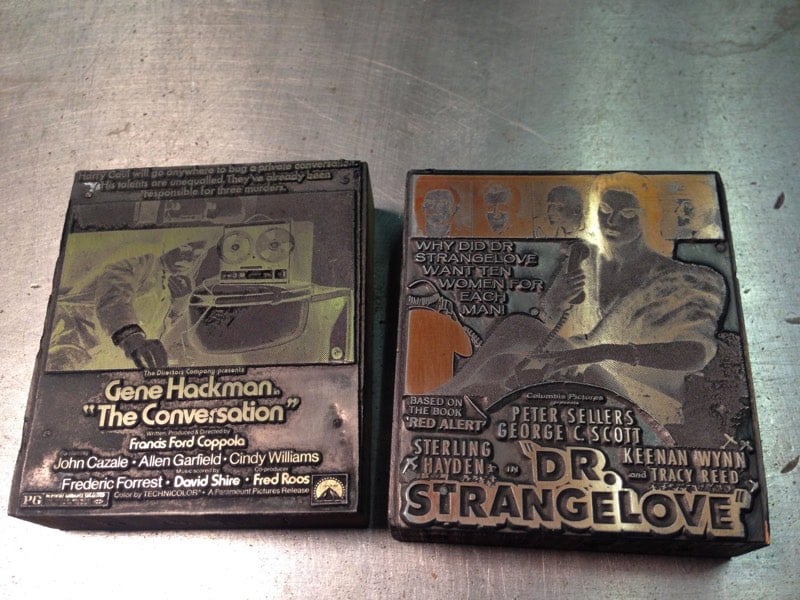
Likewise, maybe you didn’t know you needed these surreptitious street photos from fin-de-siecle Oslo, but a flaneur recognizes a flaneur, you know what I’m saying?

I think what I love about the end of the nineteenth and the beginning of the twentieth century is the enormous weight placed on noticing those ephemeral details in the swirling impressions of the suddenly overwhelming city streets, and taking those luminous particulars and transforming them into art.
The history of New Jack Swing, from Keith Sweat to Mary J. Blige

Bruno Mars is amazing: a shapeshifting artist seemingly engineered to synthesize the history of pop music and overcome all critical resistance. His latest single with Cardi B, “Finesse,” is a perfect pastiche of the aesthetics of early 1990s pop radio R&B, from TLC videos to In Living Color’s Fly Girls and that Bell Biv Devoe snare drum.
I should say, it’s a pastiche of a particular subgenre of R&B — remember when R&B was dominant enough to have subgenres? — and hip-hop, one called New Jack Swing. New Jack Swing sort of emerged from the Minneapolis sound of Prince and Janet Jackson in the late 1980s, borrowing turntable scratching, stop-start percussive beats, and especially dancing and dance beats from hip-hop.
New Jack Swing helped break R&B out of its respectability ethos — think Whitney Houston, Anita Baker, etc. — and its reliance on tropes from soul, funk, and gospel music. It also had a transformative effect on hip-hop, helping it find a place on R&B radio, then dance shows, MTV, and the Top 40 charts. It was arguably even more successful at changing pop music in that period than alternative and grunge music were. And it’s some of the best pop music you’ve ever heard, music that turned producers like Teddy Riley and Bernard Belle, Babyface and LA Reid, and Jimmy Jam and Terry Lewis into stars.
Inspired by Mars’s callback, MacArthur genius Lin-Manuel Miranda and Prince superfan Anil Dash teamed up to create a short primer to New Jack Swing. It’s a Spotify playlist, and despite its overlooking the later Teddy Riley work with Wreckz-n-Effect and Blackstreet, it’s magnificent. It certainly gives you all the tools to properly appreciate / hate on Mars’s appropriation of the genre.
Ask Dr. Time: Orality and Literacy from Homer to Twitter

Dr. Time is a nickname some friends gave me within the last couple of years. Its origin is silly, as nicknames’ often are: “Tim” autocorrects to “Time,” so hasty typing in a private Slack turns into a pseudo-persona. I also like that it’s a slant rhyme on Doctor Doom, my favorite supervillain. And in case you haven’t noticed, I have a pretty strong interest in time.
When Jason and I started talking about different ways we could collaborate on the site, the wildest was his suggestion that I write an advice column called “Ask Dr. Time.” I laughed out loud. The proposition was absurd. I don’t want to wade into the disaster that is my life, but the idea that anyone would ask me for personal advice, and that I would be foolish enough to give it, was laughable. Let’s just say I’ve made some poor choices and had some sad circumstances, and leave it at that.
One of those poor choices, however, was spending a lot of time studying philosophy, literature, mathematics, history, and metaphysics. Jason eventually got me to see that “Ask Dr. Time” didn’t have to be an advice column in a conventional sense. What if readers had problems that didn’t require common sense or finely honed interpersonal skills, but an ability to make sense of abstruse reasoning? What if they didn’t need a fancy Watson but an armchair Wittgenstein? What if kottke.org hosted the first metaphysical advice columnist? That proposition is still absurd, but it’s absurd in an interesting way. And “absurd in an interesting way” is what Dr. Time is all about. Not practical solutions, but philosophical entanglements and disentanglings. That I could do.
So on Fridays, from time to time. Dr. Time is going to appear, to answer reader questions that admit of no answer — sometimes here on Kottke.org, and sometimes at the Kottke newsletter I write, Noticing. For this particular entry, the blog seemed more appropriate — and besides, the newsletter was full.
Our first question actually comes from Jason, who, like many of us, is enjoying Emily Wilson’s magnificent contemporary translation of Homer’s The Odyssey.
Jason was struck by this passage in the introduction, on the oral roots and possible oral composition of the Homeric epics:
The state of Homeric scholarship changed radically and permanently in the early 1930s, when a young American classicist named Milman Parry traveled to the then-Yugoslavia with recording equipment and began to study the living oral tradition of illiterate and semiliterate Serbo-Croat bards, who told poetic folk tales about the mythical and semihistorical events of the Serbian past. Parry died at the age of thirty-three from an accidental gunshot, and research was further interrupted by the Second World War. But Parry’s student Albert Lord continued his work on Homer, and published his findings in 1960, under the title The Singer of Tales. Lord and Parry proved definitively that the Homeric poems show the mark of oral composition.
The “Parry-Lord hypothesis” was that oral poetry, from every culture where it exists, has certain distinctive features, and that we can see these features in the Homeric poems—specifically, in the use of formulae, which enable the oral poet to compose at the speed of speech. A writer can pause for as long as she or he wants, to ponder the most fitting adjective for a particular scene; she can also go back and change it afterwards, on further reflection—as in the famous anecdote about Oscar Wilde, who labored all morning to add a comma, and worked all afternoon taking it out. Oral performers do not use commas, and do not have the luxury of time to ponder their choice of words. They need to be able to maintain fluency, and formulaic features make this possible.
Subsequent studies, building on the work of Parry and Lord, have shown that there are marked differences in the ways that oral and literate cultures think about memory, originality, and repetition. In highly literate cultures, there is a tendency to dismiss repetitive or formulaic discourse as cliche; we think of it as boring or lazy writing. In primarily oral cultures, repetition tends to be much more highly valued. Repeated phrases, stories, or tropes can be preserved to some extent over many generations without the use of writing, allowing people in an oral culture to remember their own past. In Greek mythology, Memory (Mnemosyne) is said to be the mother of the Muses, because poetry, music, and storytelling are all imagined as modes by which people remember the times before they were born.
Wilson goes on to consider the implications of the poem’s origins in orality for trying to figure out if there really was an historical Homer, a single author of the great poems — and if so, whether and how we could tell. She also rightly gives some of the Homeric critics a shot in the ribs for their assumptions about oral cultures, which tended not to be drawn from very many historical sources: if Parry had visited with Somali bards rather than singers from the Balkans, he may have come away with very different conclusions.
Orality, even primary orality, before any writing whatsoever, exists in rich and wide varieties. And Homeric orality was probably not so primary as all that: it’s exciting and accessible to us exactly because it’s on that seam between a dominant oral culture and an emerging written one.
Jason’s question is a little bit different. Since I don’t quite remember what he originally asked, I’ll do a very oral-to-literate thing and paraphrase. What do we make of digital media forms like Twitter that are highly interactive and speechlike? Is this a kind of return to orality? Is there a little bit of the Homeric world in our smartphones, where we both “chat” with our mouths and our thumbs?
The answer to this last question is Yes — but in a different way from how it might first appear. We’re a little Homeric because we’re also on the cusp of multiple media regimes, making a great transformation of great civilizations. However, with some exceptions, we’re not especially oral. We’re exceedingly literate. We’re making written language and literacy do things even our grandparents, raised in the age of industrial print, wouldn’t quite recognize.
I used the phrase “primary orality” earlier, and it’s one I borrow from Walter Ong. Ong was a Jesuit priest and influential scholar of language and literature. He was very much in this Milman Parry tradition of thinking about the relationship of orality and literacy to forms of thought and shared culture. You can draw a line from Parry to Eric Havelock, who wrote the influential Preface to Plato, and to communications scholars Harold Innis and Marshall McLuhan, and from there to Ong, Hugh Kenner, Northrop Frye, and a number of the more dominant media thinkers of the twentieth century in the English language.
What Ong helped conceptualize and popularize, especially in his book Orality and Literacy, was that in cultures with no tradition of literacy, orality had a fundamentally different character from those where literacy was dominant. It’s different again in cultures where literacy is known but scarce.
For instance, we tend to associate writing with official culture. We ask for papers, and papers are official. An official record has an official written form that unofficial forms of writing or any form of speech are considered less proper. Literacy and paper are also widespread enough that we expect everyone to have some paper.
A nonliterate culture, for obvious reasons, doesn’t work that way. You need an entirely different system of conventions to differentiate formal from informal, permanent from ephemeral — those concepts might not have even hold the same relationships to each other. One of those conventions, so common that it even exists outside the species, is song. And the songs we attribute to Homer are, for us, who exist in their shadow, the best songs ever written.
In the Romantic version of the Parry-Lord thesis, the oral world of Homer is a lost paradise, and our post-literate one, a fallen world of lesser creatures. This probably borrows too much from how Homeric poets feigned to feel about themselves relative to the Mycenaean civilizations that preceded them, and how the classical Greeks appeared to feel about Homer. It’s all representation of lost paradises all the way down.
Ong dodges more of this nostalgia than he’s usually given credit for, but there’s still an element of it, one that he sometimes seems to regret. (Regret for Nostalgia would make a good biography title for Ong.) In his case, it’s conflated with a methodological problem — how do we talk about primary orality (the orality of cultures with no knowledge of writing) in a culture that’s saturated with writing, whose entire intellectual edifice is premised on writing? In fact, oral culture never goes away: it persists in its own logic and suborns the existence of writing to its own ends.
Ong’s great example is classical and medieval rhetoric, which used books, book-based scholarly culture, and book-based modes of training to elevate oral argument to exquisite sophistication. You might also look at hip-hop, which seamlessly blends freestyle vocals, dance, graffiti, and turntable manipulation to create new forms of recording and improvisation. It’s never an either-or, but a constant restructuring.
So, as to the original question: are Twitter and texting new forms of orality? I have a simple answer and a complex one, but they’re both really the same.
The first answer is so lucid and common-sense, you can hardly believe that it’s coming from Dr. Time: if it’s written, it ain’t oral. Orality requires speech, or song, or sound. Writing is visual. If it’s visual and only visual, it’s not oral.
The only form of genuine speech that’s genuinely visual and not auditory is sign language. And sign language is speech-like in pretty much every way imaginable: it’s ephemeral, it’s interactive, there’s no record, the signs are fluid. But even most sign language is at least in part chirographic, i.e., dependent on writing and written symbols. At least, the sign languages we use today: although our spoken/vocal languages are pretty chirographic too.
Writing, especially writing in a hyperliterate society, involves a transformation of the sensorium that privileges vision at the expense of hearing, and privileges reading (especially alphabetic reading) over other forms of visual interpretation and experience. It makes it possible to take in huge troves of information in a limited amount of time. We can read teleprompters and ticker-tape, street signs and medicine bottles, tweets and texts. We can read things without even being aware we’re reading them. We read language on the move all day long: social media is not all that different.
Now, for a more complicated explanation of that same idea, we go back to Father Ong himself. For Ong, there’s a primary orality and a secondary orality. The primary orality, we’ve covered; secondary orality is a little more complicated. It’s not just the oral culture of people who’ve got lots of experience with writing, but of people who’ve developed technologies that allow them to create new forms of oral communication that are enabled by writing.
The great media forms of secondary orality are the movies, television, radio, and the telephone. All of these are oral, but they’re also modern media, which means the media reshapes it in its own image: they squeeze your toothpaste through its tube. But they’re also transformative forms of media in a world that’s dominated by writing and print, because they make it possible to get information in new ways, according to new conventions, and along different sensory channels.
Walter Ong died in 2003, so he never got to see social media at its full flower, but he definitely was able to see where electronic communications was headed. Even in the 1990s, people were beginning to wonder whether interactive chats on computers fell under Ong’s heading of “secondary orality.” He gave an interview where he tried to explain how he saw things — as far as I know, relatively few people have paid attention to it (and the original online source has sadly linkrotted away)1:
“When I first used the term ‘secondary orality,’ I was thinking of the kind of orality you get on radio and television, where oral performance produces effects somewhat like those of ‘primary orality,’ the orality using the unprocessed human voice, particularly in addressing groups, but where the creation of orality is of a new sort. Orality here is produced by technology. Radio and television are ‘secondary’ in the sense that they are technologically powered, demanding the use of writing and other technologies in designing and manufacturing the machines which reproduce voice. They are thus unlike primary orality, which uses no tools or technology at all. Radio and television provide technologized orality. This is what I originally referred to by the term ‘secondary orality.’
I have also heard the term ‘secondary orality’ lately applied by some to other sorts of electronic verbalization which are really not oral at all—to the Internet and similar computerized creations for text. There is a reason for this usage of the term. In nontechnologized oral interchange, as we have noted earlier, there is no perceptible interval between the utterance of the speaker and the hearer’s reception of what is uttered. Oral communication is all immediate, in the present. Writing, chirographic or typed, on the other hand, comes out of the past. Even if you write a memo to yourself, when you refer to it, it’s a memo which you wrote a few minutes ago, or maybe two weeks ago. But on a computer network, the recipient can receive what is communicated with no such interval. Although it is not exactly the same as oral communication, the network message from one person to another or others is very rapid and can in effect be in the present. Computerized communication can thus suggest the immediate experience of direct sound. I believe that is why computerized verbalization has been assimilated to secondary ‘orality,’ even when it comes not in oral-aural format but through the eye, and thus is not directly oral at all. Here textualized verbal exchange registers psychologically as having the temporal immediacy of oral exchange. To handle [page break] such technologizing of the textualized word, I have tried occasionally to introduce the term ‘secondary literacy.’ We are not considering here the production of sounded words on the computer, which of course are even more readily assimilated to ‘secondary orality’” (80-81).
So tweets and text messages aren’t oral. They’re secondarily literate. Wait, that sounds horrible! How’s this: they’re artifacts and examples of secondary literacy. They’re what literacy looks like after television, the telephone, and the application of computing technologies to those communication forms. Just as orality isn’t the same after you’ve introduced writing, and manuscript isn’t the same after you’ve produced print, literacy isn’t the same once you have networked orality. In this sense, Twitter is the necessary byproduct of television.
Now, where this gets really complicated is with stuff like Siri and Alexa, and other AI-driven, natural-language computing interfaces. This is almost a tertiary orality, voice after texting, and certainly voice after interactive search. I’d be inclined to lump it in with secondary orality in that broader sense of technologically-mediated orality. But it really does depend how transformative you think client- and cloud-side computing, up to and including AI, really are. I’m inclined to say that they are, and that Alexa is doing something pretty different from what the radio did in the 1920s and 30s.
But we have to remember that we’re always much more able to make fine distinctions about technology deployed in our own lifetime, rather than what develops over epochs of human culture. Compared to that collision of oral and literate cultures in the Eastern Mediterranean that gave us poetry, philosophy, drama, and rhetoric in the classical period, or the nexus of troubadours, scholastics, printers, scientific meddlers and explorers that gave us the Renaissance, our own collision of multiple media cultures is probably quite small.
But it is genuinely transformative, and it is ours. And some days it’s as charming to think about all the ways in which our heirs will find us completely unintelligible as it is to imagine the complex legacy we’re bequeathing them.
Thank the Internet Archive for the save! See also here.↩
Medieval illustrations of what Europeans thought elephants looked like

For his Elephas Anthropogenus project, Uli Westphal collected European illustrations of elephants dating from the fall of Rome to the end of the Renaissance, a period of time when very few people actually knew what an elephant looked like.
After the fall of the Roman Empire, elephants virtually disappeared from Western Europe. Since there was no real knowledge of how this animal actually looked, illustrators had to rely on oral and written transmissions to morphologically reconstruct the elephant, thus reinventing an actual existing creature. This tree diagram traces the evolution of the elephant depiction throughout the middle ages up to the age of enlightenment.
See also famous logos drawn from memory and drawing all 50 states from memory.
Ten new principles for good design
In the 1970s, legendary industrial designer Dieter Rams formulated his now-famous ten principles for good design.
5. Good design is unobtrusive. Products fulfilling a purpose are like tools. They are neither decorative objects nor works of art. Their design should therefore be both neutral and restrained, to leave room for the user’s self-expression.
6. Good design is honest. It does not make a product more innovative, powerful or valuable than it really is. It does not attempt to manipulate the consumer with promises that cannot be kept.
Suzanne LaBarre of Co.Design has come up with an update of Rams’ list for 2018: 10 New Principles Of Good Design.
Good design is slow. For the past 20 years, tech has embraced a “move fast and break things” mantra. That was fine when software had a relatively small impact on the world. But today, it shapes nearly every aspect of our lives, from what we read to whom we date to how we spend money-and it’s largely optimized to benefit corporations, not users. The stakes have changed, the methods haven’t.
Good design is good writing. In his “2017 Design in Tech Report,” author John Maeda anointed writing as design’s newest unicorn skill. It’s easy to see why. With the rise of chatbots and conversational UI, writing is often the primary interface through which users interact with a product or service. (Siri’s dad jokes had to be written by someone.) But even designers who don’t work on interface copy should be able to articulate themselves clearly. The better their writing, the better their chances of selling an idea.
See also the tongue-in-cheek list of design principles updated for the tech industry, e.g. “Good design is pleasing your shareholders”.
The Mars Generation is giving up to 16 scholarships for kids to attend a week of Space Camp. Application details here.
Why is Twitter still good? Because two NYC museums are trying to best each other with olde tyme NYC snow photos.
Presidential murder as a deterrent to nuclear war
In an article titled “Preventing nuclear war” published in the March 1981 issue of The Bulletin of Atomic Scientists, Roger Fisher suggested that before the President could launch nuclear weapons against another nation, they would first have to kill a person with their bare hands, as a prelude to killing perhaps tens of millions.
An early arms control proposal dealt with the problem of distancing that the President would have in the circumstances facing a decision about nuclear war. There is a young man, probably a Navy officer, who accompanies the President. This young man has a black attache case which contains the codes that are needed to fire nuclear weapons. I could see the President at a staff meeting considering nuclear war as an abstract question. He might conclude: “On SIOP Plan One, the decision is affirmative. Communicate the Alpha line XYZ.” Such jargon holds what is involved at a distance.
My suggestion was quite simple: Put that needed code number in a little capsule, and then implant that capsule right next to the heart of a volunteer. The volunteer would carry with him a big, heavy butcher knife as he accompanied the President. If the President ever wanted to fire nuclear weapons, the only way he could do so would be for him first, with his own hands, to kill one human being. The President says, “George, I’m sorry but tens of millions must die.” He has to look at someone and realize what death is — what innocent death is. Blood on the White House carpet. It’s reality brought home.
As it stands, the President can choose to use nuclear weapons pretty much on a personal whim. It would seem that the 80s are back, both in movies/TV and also in the daily existential dread of the Cold War. Yay. (via clive thompson)
The top 50 most popular Wikipedia entries from 2017. Death, Trump, Queen Elizabeth, Bitcoin, Wonder Woman, and The Rock all feature.
The delight and challenge of true solitude
Many of us feel alone from time to time or spend a day or two holed away working or worrying without seeing another person. But true solitude is difficult to come by these days. For the past 19 years, Alexandra de Steiguer has been the off-season caretaker for the Oceanic Hotel, located 10 miles off the coast of New Hampshire. During the winter months, she’s the only person on the island. Brian Bolster’s meditative short film looks at de Steiguer’s life on the island and her embrace of solitude.
Winter’s Watch explores de Steiguer’s relationship to extreme isolation. Its meditative imagery contemplates the beauty of absence, while de Steiguer reflects on the unique challenges and rewards of solitude. “There are no other distractions,” she says. “You have to decide how to fill your days….and yet it is peaceful, and I can use my imagination.”
The hulking-and possibly haunted-hotel bears a striking resemblance to The Shining, but de Steiguer maintains that “if there are ghosts out here, they are being extremely kind to me.” Rather, she has embraced what she calls “the great waiting of winter.”
See also how to be alone. (via @ifyoucantwell)
Candid street photos from the 1890s
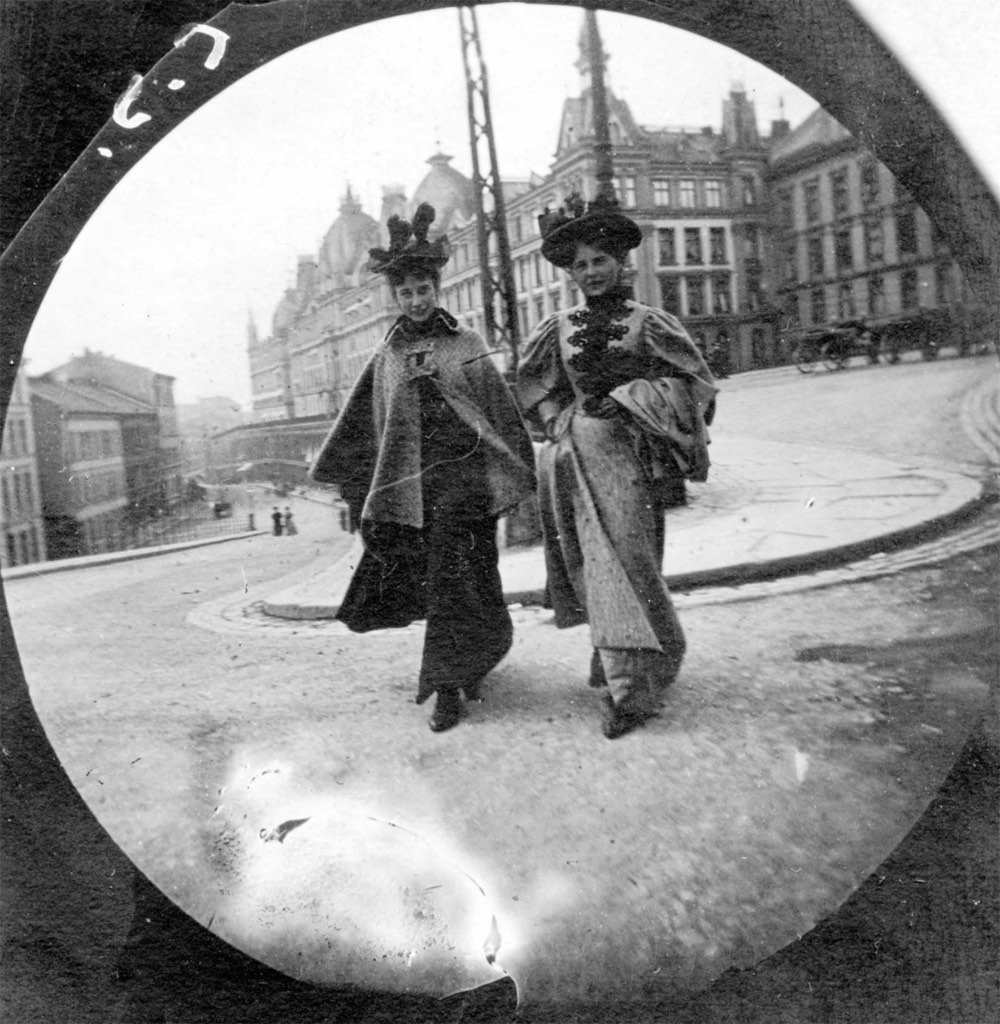

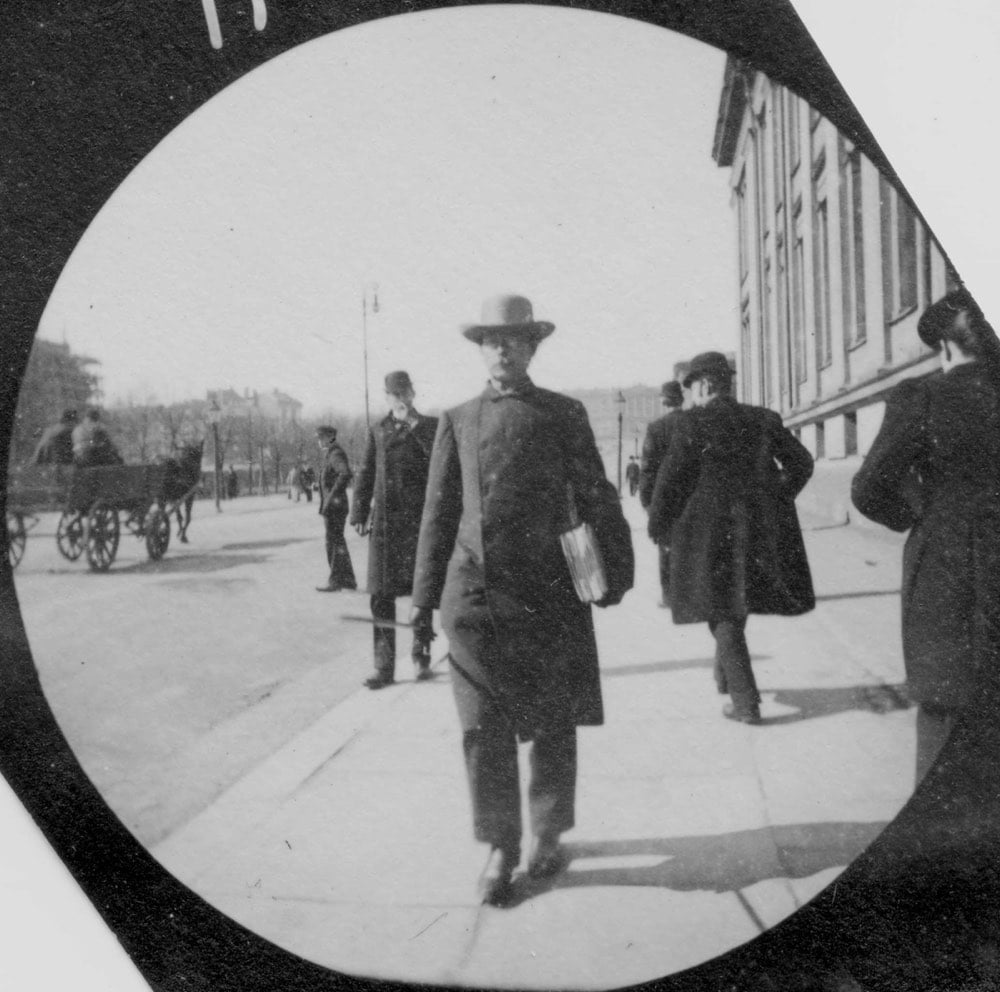
As a young mathematics student in Oslo in the 1890s, Carl Størmer bought a Concealed Vest Camera manufactured by C.P. Stirn — “No Tourist, Artist or Student, Amateur or Professional, should be without this Camera” — and walked the streets of the city, taking surreptitious photos of people he met. Størmer operated the shutter of his buttonhole camera with a string in the pocket of his trousers. (via colossal)
Mark Zuckerberg’s personal challenge this year is to fix Facebook. “We won’t prevent all mistakes or abuse, but we currently make too many errors enforcing our policies and preventing misuse of our tools.”
New Jack Swing 101. This Spotify playlist compiled by @anildash and @lin_manuel is gonna be on repeat all day for me.
Custom minifigs of Star Trek: The Next Generation characters
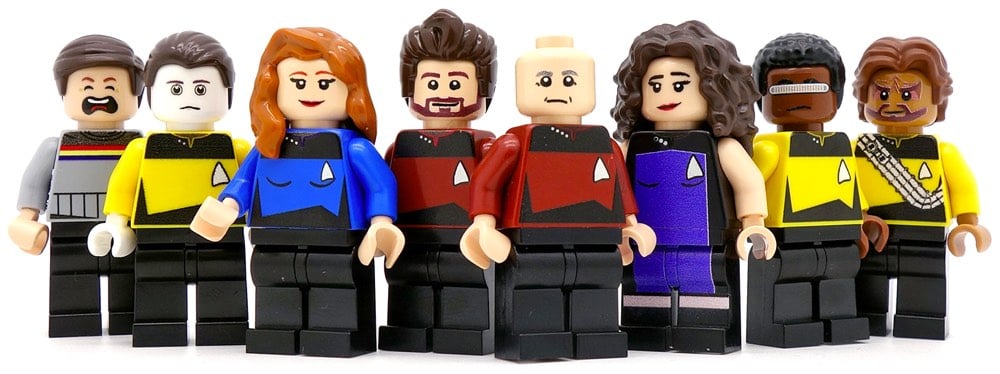
Oh these are cool: custom-made minifigs of all your favorite Star Trek:TNG characters. The Wesley Crusher one is kinda funny, but Wil Wheaton makes a good case as to why it’s unfair to the character. And it turns out, you can get custom minifigs for just about everything, from LeBron James to Game of Thrones to yourself. (via io9)
Currency blankets from Hiller Dry Goods


Nick Hiller has rebooted his great-great-grandfather’s textiles & dry goods store (established in Detroit in 1904) as an online shop. The first collection is called the Currency Blankets Collection, and features lovely blankets inspired by patterns on banknotes from around the world.
For thousands of years, textiles were so basic to survival that they functioned as a form of currency. In Mesoamerica, the Zapotecs paid tribute in woven rugs to the ruling Aztecs; in North America, the Navajos transacted in Pendleton blankets with European settlers; in West Africa, the Wolof in Gambia used “cloth money” in standardized strips that could be torn to make change; in medieval Iceland, a woolen fabric called wadmal (Old Norse for “legal cloth”) was the official currency for over 600 years. Even the Silk Road, civilization’s first global trade network, was named after the route’s dominant form of currency.
The blankets in the collection are manufactured in the US and reflect banknotes from France, the US (the pattern is a super zoom of Ben Franklin’s cheek on the $100 bill), Romania, Sierra Leone, Switzerland, Argentina, and several others.
A short film about a one-of-a-kind collection of letterpress plates for printing film advertisements
In 1999, two friends went into a Nebraska antique shop and found a massive collection of letterpress blocks and plates that were used to make advertisements for movies in newspapers. They bought the whole shebang for $2000 and have spent the last 17 years cataloging and cleaning the 60,000 plates & blocks (here is just a partial inventory). The collection, which spans nearly the entire history of the film industry from the silent era to 1984, was recently appraised at ~$10 million and is available for acquisition.
The short film embedded above is a must-see for design/movie nerds…my jaw hit the floor when these pristine posters for movies that were 50, 60, 70 years old started rolling off of the letterpress. I mean, look at this stuff!

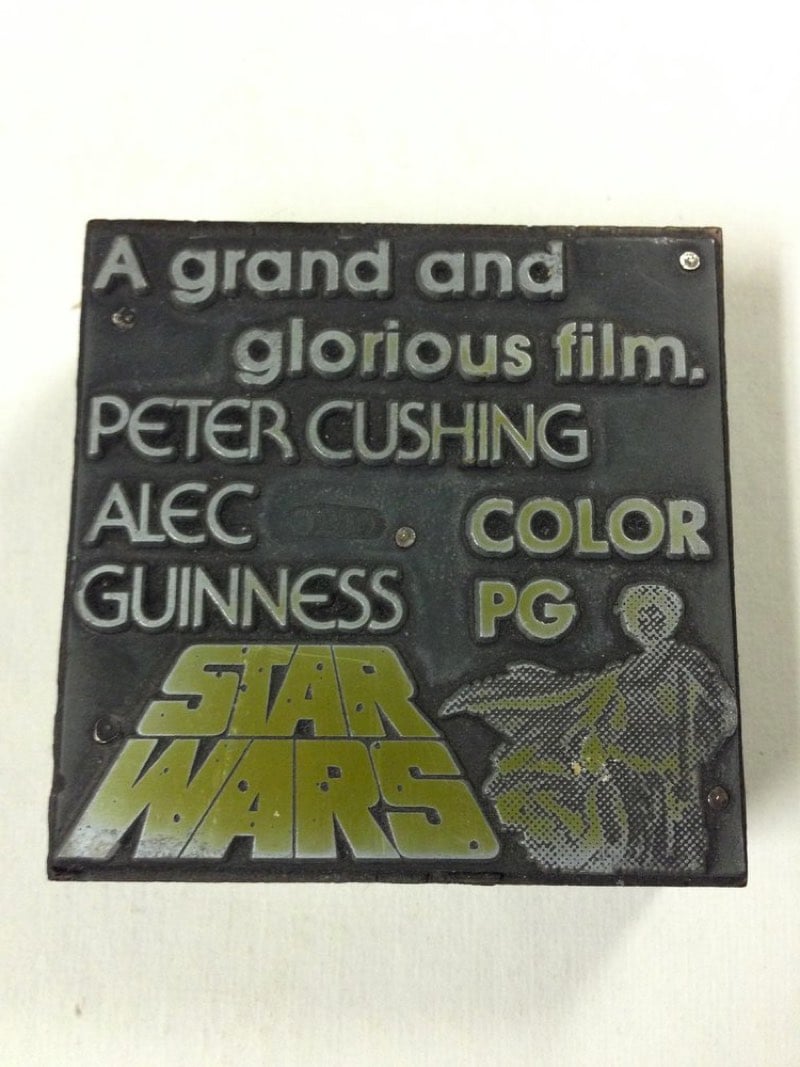
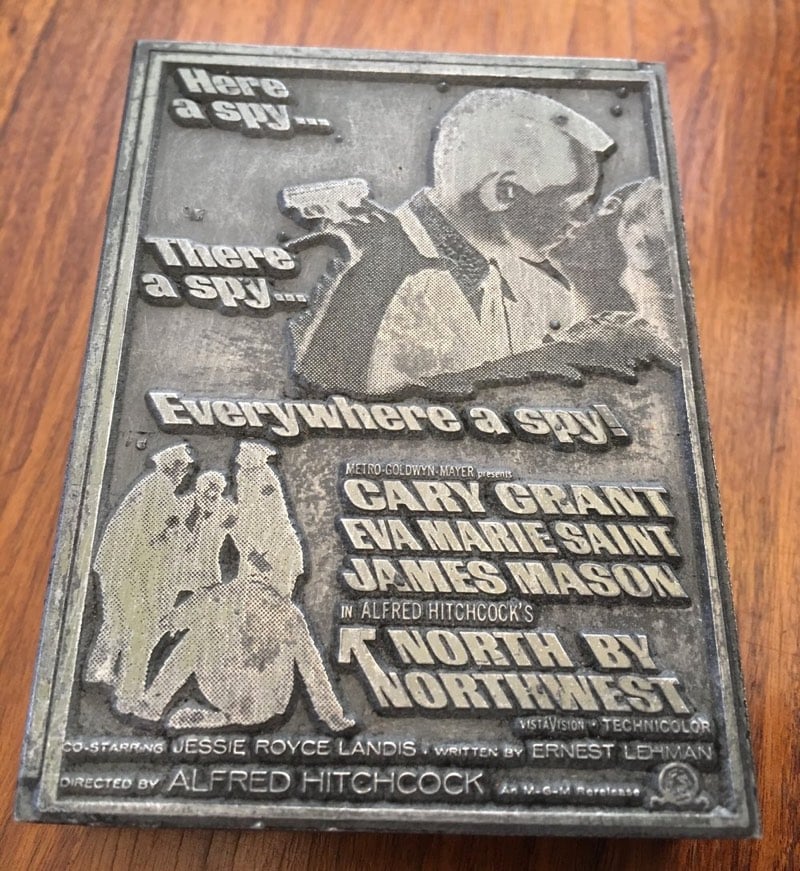
Note: I flipped the images of the plates so they would be readable. The actual plates are mirror images of the printed advertisements. Here’s what a print made from a plate looks like:
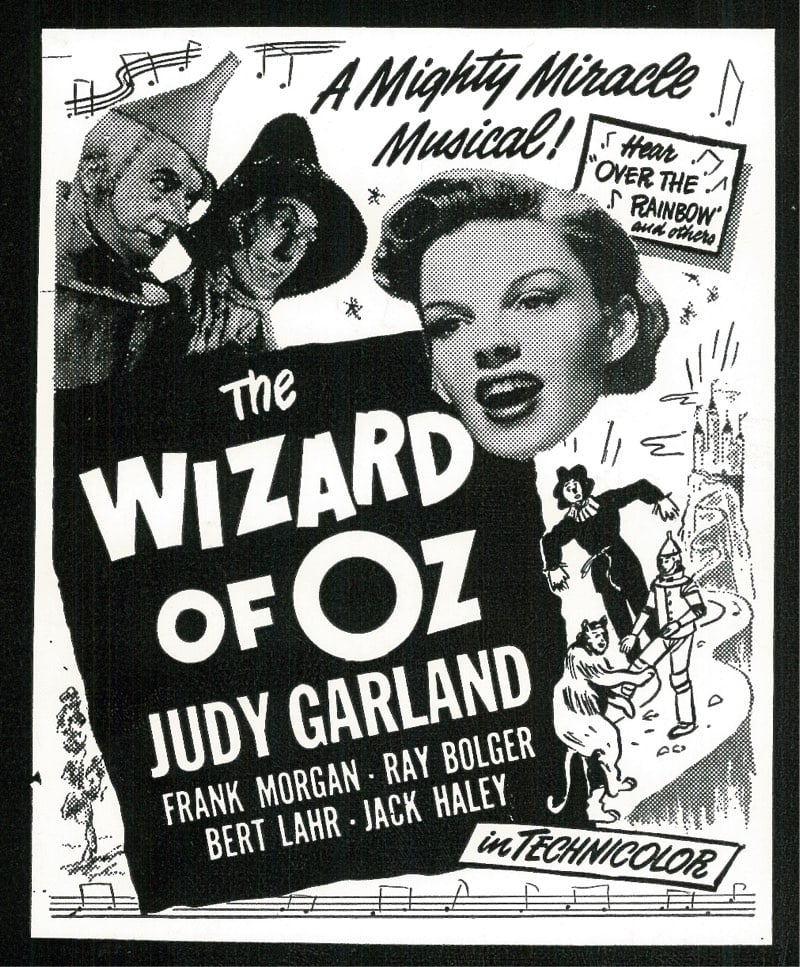
Barack Obama’s favorite books of 2017
As he did in the years when he was President1, Barack Obama shared a list of his favorite books that he read in 2017:
The Power by Naomi Alderman
Grant by Ron Chernow
Evicted: Poverty and Profit in the American City by Matthew Desmond
Janesville: An American Story by Amy Goldstein
Exit West by Mohsin Hamid
Five-Carat Soul by James McBride
Anything Is Possible by Elizabeth Strout
Dying: A Memoir by Cory Taylor
A Gentleman in Moscow by Amor Towles
Sing, Unburied, Sing by Jesmyn Ward
Coach Wooden and Me by Kareem Abdul-Jabbar
Basketball (and Other Things) by Shea Serrano
As I’ve said before, Obama was our most widely read President. See also more lists of the best books of 2017.
Remember when we had a grownup in the White House instead of an insecure and petulant manbaby? I barely do…↩
Why does the NY Times receive so much criticism these days? Former Times public editor Margaret Sullivan shares her perspective.
The year in photos 2017






One of my favorite things to do at the end of the year is look back on the best and most newsworthy photos of the year. As I wrote last year:
Professional photographers and the agencies & publications that employ them are essential in bearing witness to the atrocities and injustices and triumphs and breakthroughs of the world and helping us understand what’s happening out there. It’s worth seeking out what they saw this year.
Indeed. I’ve selected six of my favorites culled from lists published by the following media outlets:
The Atlantic: Top 25 News Photos of 2017, 2017 in Photos, Hopeful Images From 2017
The New York Times: The Year in Pictures 2017
National Geographic: Best Photos of 2017
Agence France-Presse: Pictures of the Year 2017 (part 2, part 3, part 4, part 5)
Reuters: Pictures of the Year 2017
Associated Press: The Year in Photos 2017
Time magazine: Top 100 Photos of 2017
CNN: 2017: The Year in Pictures
Petapixel: The Top 15 Photos on Flickr in 2017
Photos by Matthew Pillsbury, Joseph Eid, Ricardo Arduengo, Ariana Cubillos, Mohammad Ismail, and NASA (Cassini spacecraft).
US road grid corrections because of the Earth’s curvature
Have you ever wondered why, when you’re driving along on a straight road in the Western US, there’s a weird curve or short zigzag turn thrown into the mix? Grids have been used to lay out American roads and houses since before there was a United States. One of the most prominent uses of the grid was in the Western US: the so-called Jefferson Grid.
The Land Ordinance of 1785, drafted by Thomas Jefferson, extended government authority over the Mississippi River and the Great Lakes regions. As a response to what he believed to be a confusing survey system already in use, Jefferson suggested a new grid system based on the rectangle. The grid divided land into plots one mile square, each consisting of 640 acres. The grid also placed a visible design upon a relatively untouched landscape.
As most people know, the Earth is roughly spherical. When you try to cover the surface of a sphere with squares, they are not going to line up perfectly. That means, every so often, sections of the grid shift away from each other. Gerco de Ruijter’s short film, Grid Corrections, shows dozens of examples of places where this shift occurs and the corrections employed to correct them.
By superimposing a rectangular grid on the earth surface, a grid built from exact square miles, the spherical deviations have to be fixed. After all, the grid has only two dimensions. The north-south boundaries in the grid are on the lines of longitude, which converge to the north. The roads that follow these boundaries must dogleg every twenty-four miles to counter the diminishing distances.
If you want to look at some of the corrections yourself, try this location in Kansas (or this one). See that bend? Now scroll the map left and right and you’ll see a bunch of the north/south roads bending at that same latitude.

You can read more about de Ruijter’s project and grid corrections in this Travel & Leisure article by Geoff Manaugh.
Update: An email from my dad:
Hi son, just reading your blog on the section lines….don’t forget, you used to live on a correction line…that is why 3 of my 40’s were only 26.3 acres….
“40’s” refers to 40 acre plots…a common size for a parcel of land back when that area was divvied up. Wisconsin has so many lakes, rivers, and glacial features that interrupt the grid that it’s difficult to tell where the corrections are, but looking at the map, I can see a few roads curving at that latitude. Cool!
The best kottke.org posts and links of 2017
[ As a tease for the first issue of the just-announced Noticing newsletter coming up on Friday, here is last week’s newsletter that we previewed for kottke.org members. It’s a review of the best kottke.org posts and links from 2017. You can sign up for Noticing if you find this kind of thing appealing. Ok, I’ll let Tim take it from here. -jason ]
2017 Through the Lens of Kottke.org
If 2016 was chaos, then 2017 was catastrophe. In the middle of an ongoing disaster, the world reckoned with bills long overdue. Kottke.org has never been a terribly political blog, but it’s always been one that’s grappled with history, the problems of art and media, self-reflection, and the long trajectory into the future. The site couldn’t help but reflect that catastrophe back to its readers. At the same time, it continued to offer some small oasis by selecting and presenting the best of the World Wide Web.
Messages in Bottles
One of the most exciting weeks of 2017 for me was when I asked Kottke.org readers to help me build a time capsule for the World Wide Web. It felt particularly important this year to try to save the best parts of the things we loved. We had to have something to show the future, despite all this destruction and heartache, that we were still capable of making things that surprised and delighted.
The entire “best of the web” series paid homage to the 20th century technologies that have defined so much of the 21st. It also showcased the deep knowledge and generosity of Kottke readers, who contributed and helped curate all of the entries. If you missed it, or are looking to refresh yourself, the web’s best hidden gems and the web’s funniest stories are good places to start.

Jason as gas station patron on Halt and Catch Fire. Photo courtesy of AMC.
One of the most exciting weeks of 2017 for me on Jason’s behalf was his appearance on Halt and Catch Fire. Jason wrote this wonderful love letter to the show and the moment it tries to capture:
When I was a kid, there was nothing I was more interested in than computers. My dad bought one of the first available IBM PC-compatibles on the market. I’ve read and watched a ton about the PC revolution. I used online services like Prodigy. And the web, well, I’ve gotten to experience that up close and personal. One of the reasons I love Halt and Catch Fire so much is that it so lovingly and accurately depicts this world that I’ve been keenly interested in for the past 35 years of my life. Someone made a TV show about my thing and it was great, a successor to Mad Men great. Getting to be a microscopically tiny part of that? Hell yeah, it was worth it.
Recently, I saw The Farthest, a wonderful documentary about the Voyager missions. In it, Timothy Ferris, producer of the famous Golden Record, laments the fact that so much wonderful music was left off, but says something like, “who would want to live in a civilization that only ever produced 90 minutes of great music?” It made me feel better about leaving off so many wonderful parts of the web in my time capsule; who would want to honor a technology whose entire set of great achievements could be documented in a week of blog posts?
In Search of Deep Time
In 2014, it was easier to believe in the future. For The Future Library, an art project by Katie Paterson, a thousand trees were planted. In a century, the trees will become part of an anthology of books, written by Margaret Atwood and David Mitchell, among others.
Between now and then, one writer every year will contribute a text, with the writings held in trust, unpublished, until the year 2114. Tending the forest and ensuring its preservation for the one hundred year duration of the artwork finds a conceptual counterpoint in the invitation extended to each writer: to conceive and produce a work in the hopes of finding a receptive reader in an unknown future.
Deep Time, conceptualized in the eighteenth century but coined in the twentieth by John McPhee, is bigger than centuries; it’s really about time on the geologic scale. Even the time of human civilizations (Stone, Bronze, Iron, etc.) is too small. Deep time is deep.
Something like “The Earth’s five energy revolutions” gets us closer to it: all life on earth begins with geochemical energy, then augmented by sunlight, and finally, oxygen, flesh, and fire. The life and death of entire forests of trees, of entire species and kingdoms, is dwarfed by the history of an entire planet and all the life that’s ever been on it. This point of view has always been a powerful perspective, but in 2017, the cosmic telescope of time was almost a comfort. Even if nations fall and species fail, this too will pass.

Coleman’s Cafe in Greensboro, Ala., in 1971. By William Christenberry
But deep time has its own human counterparts. Consider Teju Cole’s essay “The Image of Time,” on photographer William Christenberry. Christenberry photographed buildings in small towns in the American south over time: seemingly the same photograph, of the same object, from the same distance, with the same framing, shows the object’s subtle or radical transformations, its non-identity.
Time is photography’s illusion. Almost every photograph appears instantaneous. But of course, there’s no such thing as “instantaneous”: All fragments of time have a length. In a photograph, the time during which the light is refracted by the lens, enters the aperture and is allowed to rest on the photosensitive surface could be 1/125th of a second, one-eighth of a second, half a second, a whole minute, much more or much less. What is intriguing about a practice like Christenberry’s is that it employs time elsewhere in the photograph too: as a source of narrative.
Or look at Jon Bois’s magnificent “17776: What Football Will Look Like in the Future,” which dives right into the familiar — maps, calendars, printer readouts — and estranges it, exactly to make the reader experience time. (I can’t even blockquote or screenshot it. It’s one piece you have to read for yourself.)
Time Collapsed
In 17776, the angel of history is a far-flung space probe that’s absorbed all of human culture, emotions, and sports statistics through radio transmissions. For Walter Benjamin in 1940, the Angel of History was a thought-experiment to try to understand all of history as an ongoing catastrophe.
These are chaotic times. But to the angel of history, it’s not a sudden eruption of chaos, but a manifestation of an ongoing vortex of chaos that stretches back indefinitely, without any unique origin. When we’re thrust into danger, in a flash we get a more truthful glimpse of history than the simple narratives that suffice in moments of safety. As Benjamin puts it, “the tradition of the oppressed teaches us that the ‘state of emergency’ in which we live is not the exception but the rule.”
For James Baldwin, there were no angels, and no robots; only fallen, imperfect beings who’d likewise absorbed the surrounding culture, but hadn’t necessarily been humanized by it. “People who shut their eyes to reality simply invite their own destruction,” writes Baldwin, “and anyone who insists on remaining in a state of innocence long after that innocence is dead turns himself into a monster.”
Baldwin and Benjamin were the two writers that best helped me understand this year, because they’d already seen how fascism and Jim Crow could fold time over on itself. Had he not been murdered, Emmett Till would have turned 76 in 2017; instead, a new book revealed what was long known, that he died because of a lie.
And in 2017, in a different sort of lie, Rachel Dolezal, a white woman who self-identifies as black, changed her name to Nkechi Amare Diallo. When Baldwin wrote “the world is white no longer, and it will never be white again,” I don’t think this is what he was talking about.
It was not the first time that the curiously stagnant nature of time made me wonder if we were all dead and in Hell. It would not be the last.
The New Callousness
In 2017, knowing how to apologize properly is an essential skill. (You might even call it a new kind of liberal art.) The essential components of a genuine apology, according to Beth Polin:
1. An expression of regret — this, usually, is the actual “I’m sorry.”
2. An explanation (but, importantly, not a justification).
3. An acknowledgment of responsibility.
4. A declaration of repentance.
5. An offer of repair.
6. A request for forgiveness.
Most of 2017’s public apologies whiffed on one or more of these. It was a year filled with soul-searching, but also much rejection of any real contrition. We might remember individual acts of selflessness, but the year was fueled by selfishness.
This photo by Kristi McCluer of wildfires in the Pacific Northwest became a metaphor for the summer, and the whole year.

A man golfs with a wildfire raging behind him. One of the defining images of 2017.
The New Callousness, swept into power in the United States and elsewhere, led to widespread physical and political fatigue: Kayla Chadwick’s “I Don’t Know How to Explain to You That You Should Care About Other People” reflects the prevailing mood of exhausted incredulity.
It is probably fair to say that in every direction, 2017 involved a lot of human beings writing off other human beings. But pushing back against this were great technologist-humanists like the legendary Ellen Ullman, explaining why hackers need the humanities:
Algorithms surround us, determining how we get mortgages or apartment rentals, or whether we get hired. It is crucial that we open up those algorithms and take them apart, and then either put them back together or scrap and rewrite them. Algorithms may run our lives, but I really believe people make the future.
Sharp as Possible
Trying to figure out how to live through this year, I often thought about Thelonious Monk’s advice on how to play a gig:
Just because you’re not a drummer, doesn’t mean you don’t have to keep time.
Don’t play the piano part. I’m playing that.
Don’t play everything (or every time). Let some things go by.
Some music just imagined. What you don’t play can be more important than what you do play.
Whatever you think can’t be done, somebody will come along and do it. A genius is the one most like himself.
What should we wear tonight? Sharp as possible!
I also tried to remember Richard Feynman’s advice that if you can’t explain something simply, you probably don’t really understand it. I admire complexity, but whenever it’s possible, simplicity is better.
The best of all things may be to be able to ratchet the explanation’s complexity up or down depending on who your audience is: neuroscientist Bobby Kashturi explaining a connectome to a five-year-old, teenager, college student, grad student, and scholarly peer is a great example of that.
It all builds from the foundation. As Richard Hamming observed, knowledge and productivity are like compound interest. You grow from work you put in over time, simple things repeated until they become (or appear to become) complex. Learning effects, network effects, path dependence — over time, they all roll up, and who you’re becoming overtakes who you are.
The Great Eclipse
In August, after a jab step into Nebraska, Jason drove to Rayville, Missouri to witness and photograph the solar eclipse.
As totality approached, the sky got darker, our shadows sharpened, insects started making noise, and disoriented birds quieted. The air cooled and it even started to get a little foggy because of the rapid temperature change.
We saw the Baily’s beads and the diamond ring effect… When the Moon finally slipped completely in front of the Sun and the sky went dark, I don’t even know how to describe it. The world stopped and time with it. During totality, Mouser took the photo at the top of the page. I’d seen photos like that before but had assumed that the beautifully wispy corona had been enhanced with filters in Photoshop. But no…that is actually what it looks like in the sky when viewing it with the naked eye (albeit smaller). Hands down, it was the most incredible natural event I’ve ever seen.

A view of the eclipse from Rayville, MO. Photo by Mouser.
Jason also collected the best photos and videos of the eclipse, this NASA map showing the eclipse’s path across the continental United States. and eclipse maps of the United States from 2000 BC until 2117 AD. Even for those of us who just sat under a tree and watched the shadows turn into scallops, it was a special experience this year.
Did Someone Say Maps?
Talk about visualizing deep time! Here we go:
A Tapestry of Time and Terrain shows the ages of rock in different parts of the continental US.
Another map shows the hometown of nearly all of the warriors from Homer’s The Iliad.
This map of the Roman Empire c. 125 AD shows the major Roman roads as if they were London’s tube.
A collection of miniature metro maps shows world cities with smaller systems, from Bangalore to Tblisi.
There’s a timeline map of US immigration since 1820, a set of hand-drawn infographics made by W.E.B. Du Bois and his students at Atlanta University, auto-generated maps of fantasy worlds, a topographical map of Venus (with geographic features named for historical and mythological women), and even an interactive map of personal debt.
There’s also The Atlas for the End of the World, which looks at critically endangered bioregions worldwide, and NASA’s striking nighttime map of the world, complete with a patch of void separating China from South Korea; the one nation, that, light-wise, may as well be open ocean.
So What Was Good?
There were so many essays and features and pop-up op-eds and shameless resistance grifters and rust belt whisperers that all tried to explain what was really happening in 2017. Almost always reporting either from a small red-state town or the comforts of one’s own imagination. And almost always thoroughly ignoring what was happening in the wider world in favor of warmed-over anecdotes and armchair realpolitik. All that noise nearly drowned out a few moments genuine insight. That’s always the case, but it all felt sharper this year.
I’ve already listed a lot of what I loved about this year — and everything I’ve mentioned appeared as a blog post or a Quick Link on Kottke.org. But two pieces of documentary art stand out for having a different set of ambitions, in search of a different kind of truth about 2017.

A flock of flamingos in Planet Earth II.
The first is Planet Earth 2. We already know that when the BBC breaks out Sir David Attenborough, they deliver the goods: a respite from our overweening humanity, with cutting-edge photography and cogent commentary. But PE2 went further, because it was just so goddamned beautiful.
The tracking shot of a lemur jumping from tree to tree is one of the first things you see in the first episode and it put my jaw right on the floor. It’s so close and fluid, how did they do that? Going into the series, I thought it was going to be more of the same — Planet Earth but with new stories, different animals, etc. - but this is really some next-level shit.
The second is Whitman, Alabama. Jennifer Crandall’s serial documentary benefits enormously from the fact that it didn’t set out to explain what happened politically in 2016 or 2017. The filmmaking began much earlier as a meditation on the longstanding problems of democracy and diversity in America.
It’s a very different kind of film from Planet Earth 2. It’s not state of the art. It’s relentlessly human. It manifests the spirit of Walt Whitman: his generosity, his capaciousness, his gentle but insistent concern on the public and private lives of his fellow Americans.
The first time Crandall read “Song of Myself,” it was 1990, and she was sixteen, standing in a bookstore in McLean, Virginia, having just moved back to the United States. Because of her father’s job, with U.S.A.I.D., she had spent most of her childhood in Bangladesh, Haiti, and Pakistan. “My mom is Chinese, from Vietnam, and my dad’s a white dude from Denver, and at that moment I just felt that I did not understand America,” she said. She pulled a paperback anthology of poetry off the shelf, and Whitman stuck out right away. “Though I wouldn’t have articulated it then, what I responded to was this idea that everyone embodies diversity, not just the country. That many people are negotiating multiple social contracts, the way I’d been doing since I was born.”
Somewhere between those two, between the whole planet and just one town, between the deep time of the age of fire and the quickfire moments of the post-web internet, between the human and the indifference to humans, is where we are. It’s where we’ve been in 2017 and will be again in 2018, no matter what comes. It’s where we’ve always been, careening between catastrophe and epiphany, callousness and generosity, the divine and the mundane. With luck, we will not destroy ourselves. With luck, and grace, and hope, and because we have no choice, we will find a way to make it through.
Dunkirk, re-edited as a silent film
One of the first things you notice when watching Dunkirk is the sparse use of dialogue. There are long stretches of the film, particularly on the beach, when no one says anything. In interviews, Christopher Nolan has stated that he wanted to use visuals to drive the story in the film…”looking to the visual masters of the silent era”. Tom van der Linden took Nolan at his word and recut Dunkirk into 7-minute-long silent film; it works remarkably well.
Someone did a full-length silent version for Mad Max: Fury Road as well after director George Miller stated that the purest version of the film would be silent, but it got taken down. In my quick review of Dunkirk, I said “I feel like Christopher Nolan watched Mad Max: Fury Road and said, ‘I can do that…but my way.’”
Noticing, a new weekly newsletter from kottke.org
As kottke.org enters its 21st calendar year of activity (!!!!), it’s time for something new. And old. Email was invented in 1972, the year before I was born, but is still going strong. The email newsletter has re-emerged in recent years as a unique way to connect with readers, distinct from social media or publishing on the web. So Tim Carmody and I have teamed up to launch Noticing, a free email newsletter. You can subscribe here.
Written by Tim Carmody and published by me every Friday, Noticing will contain a curated roundup of the week’s posts from kottke.org as well as some extra stuff that we’ll be introducing in the weeks to come. It most definitely won’t be a replacement for kottke.org…more like something to read alongside it.
Initial funding for the newsletter comes from two sources: the bulk of it from kottke.org (made possible through the support of members) but also from Tim’s supporters on Patreon. Noticing is an experiment in unlocking the commons.
The most economically powerful thing you can do is to buy something for your own enjoyment that also improves the world. This has always been the value proposition of journalism and art. It’s a nonexclusive good that’s best enjoyed nonexclusively.
The newsletter is very much a work in progress and a departure from the way I usually do things around here. For one thing, it’s a collaboration…almost everything else I’ve done on the site was just me. We’ve previewed it over the last two weeks just for members, but it’s still more “unfinished” than I’m comfortable with. The design hasn’t been nailed down, the logo will likely change, and Tim & I are still trying to figure out the voice and length. But launching it unfinished feels right…we aren’t wasting time on optimization and there’s more opportunity to experiment and move toward what works as time goes on. We hope you’ll join us by subscribing and letting us know your thoughts and feedback as we get this thing moving.
P.S. A quick note on the name. I thought of it while listening to the last part of Walter Isaacson’s Leonardo da Vinci on audiobook on the drive home from NYC last week. One of Isaacson’s main points in the book was that Leonardo’s accomplishments were due in no small part to his extraordinary powers of observation. By observing things closely and from all possible angles, he was able to make connections and find details that other people didn’t and express them in his work. Isaacson argues that Leonardo’s observational powers were not innate and that with sufficient practice, we can all observe as he did. People talk in a precious way about genius, creativity, and curiosity as superpowers that people are born with but noticing is a more humble pursuit. Noticing is something we can all do.
I also thought about one of my favorite scenes from Greta Gerwig’s Lady Bird. From A.O. Scott’s review:
Sister Sarah Joan (Lois Smith), the principal, has read Lady Bird’s college application essay. “It’s clear how much you love Sacramento,” Sister Sarah remarks. This comes as a surprise, both to Lady Bird and the viewer, who is by now aware of Lady Bird’s frustration with her hometown.
“I guess I pay attention,” she says, not wanting to be contrary.
“Don’t you think they’re the same thing?” the wise sister asks.
The idea that attention is a form of love (and vice versa) is a beautiful insight.
I agree. Drawing honest & straightforward attention to things I love is much of what I do here on kottke.org, so I thought Noticing was a natural name for its newsletter extension.
P.P.S. An additional programming note. In addition to doing the newsletter, Tim is also taking over the posting duties on kottke.org most Fridays. This will free me up to work on other site-related things that I haven’t been able to tackle due to the daily scramble. Again, thanks to member support for making this possible!
Your fave TV shows, but with animoji characters
Happy New Year everyone! Let’s get the year started off on a good note with some lowbrow laaaaaaaaffffs. Video funnyfolk Corridor took scenes from TV shows & movies (Stranger Things, Arrested Development, The Office, Full Metal Jacket) and replaced the actor’s heads with iPhone X animoji. The Gob scene is *kisses fingers*.
The best of my media diet for 2017
In 2017, I kept track of almost everything I read, listened to, watched, and experienced. I don’t know about “the best”, but as the year draws to a close, these are the things that I thought about the most, that made me see things in a slightly different way, or taught me a little something about myself. I marked my very favorites with a (*). (Above, my #bestnine images of 2017 from Instagram.)
Books. I don’t know how many books I read this year, but it was fewer than I wanted. My work demands a lot of reading online, so when I’ve finished with that most days, reading for leisure or enrichment is often not enticing.
The Underground Railroad by Colson Whitehead and Killers of the Flower Moon by David Grann were perhaps the best books I read…you’ll hardly find anyone who speaks ill of either one.
Wonderland by Steven Johnson pulls together technology, culture, and science in a way that I aspire to.
I enjoyed Cixin Liu’s The Three-Body Problem when I read it early on in 2017 but it grew in my esteem as the year went on. Crazy, but I might reread soon?
The Devil in the White City. A masterful dual tale of two men who seized the opportunity due to cultural and technological changes in late 1800s America, told through the events of the World’s Columbian Exposition held in Chicago in 1893.
I reread Oliver Burkeman’s The Antidote…no recent book has helped me more in figuring out a path forward in life.
Karl Ove Knausgaard’s My Struggle: Book 2 blew my doors off. I have never felt so uncannily like a writer has been rummaging around in my brain. *
Television. What even is television anymore? To paraphrase US Supreme Court Justice Potter Stewart, I know it when I see it. And I saw a lot of it this year. And much of it was excellent.
The Crown (season two). I kept expecting this to falter as it went on, but it never did. A keen portrait of changing times and a dying empire.
Mad Men. Rewatched it all the way through for the first time since it aired. One of the all-time great TV shows.
Halt and Catch Fire (season four). Very strong finish to a great series. I kind of want a season five in about 5 or 6 years that’s set in 2002. Still can’t believe I got to be on the show for like 2 seconds.
The Vietnam War. I feel like this didn’t get the attention it deserved. Along with OJ: Made in America, one of the best documentaries of recent years in terms of understanding the United States culturally and politically.
Wormwood. What the hell is even a documentary anyway? Errol Morris is at the top of his game with this one.
The Handmaid’s Tale. My favorite drama series of the year. So hard to watch but also essential and so well done. *
Planet Earth II and Blue Planet II. Incredible. Aside from the eclipse, these are the best things on this list. *
Honorable mentions: I anticipated Game of Thrones more than anything each week, but I’ve already forgotten most of what happened. There were dragons? Big Little Lies was very solid and enjoyable, but the last episode was some of the best television I’ve ever seen. Zoom out a little, and The Defiant Ones was actually about creativity, collaboration, and management.
Movies: Though I haven’t seen many of the end-of-the-year movies yet, I felt like this was a strong-ish movie year. But only four films stuck with me.
The Handmaiden. I don’t even know how to classify this film, but I wish they’d make more like it.
Maybe Blade Runner 2049 wasn’t great, but I saw it twice and have thought about it often since. Amazing visual experience.
Paths of the Soul. A window into the lives of people very unlike mine. Underscores how much living “the simple life” in wealthy countries is made possible by good infrastructure, social safety nets, and privilege. The simple life in most of the world is neither a choice nor easy.
Dunkirk. Absolutely thrilling. My favorite movie of the year. *
Music. Let’s be honest, Lemonade was probably the album of the year. But I guess some good music came out in 2017 as well. Oh, and I’m old so I still listen to albums.
Big Fish Theory by Vince Staples got the most airplay in my car this summer and fall. Early fave track was Crabs in a Bucket but BagBak came on strong later in the year.
DAMN. by Kendrick Lamar. Probably my favorite album of the year…every track hits the mark. *
4:44 by Jay-Z. The contrast between his last album (lazy, full of swagger) and this one (introspective, urgent) could not be more stark. This wasn’t the best or even my favorite album of the year, but I thought about it more than any of the others I listened to this year. Worth noting this album was only possible because of Beyonce’s superior Lemonade…imagine the hypothetical Jay-Z album had she not slammed him to the wall with that.
Experiences, etc. As I said on Instagram, I prioritized experiences over things this year. But because things like books, movies, and TV shows are easier to summarize and review, I kept most of the experiences for myself. You have to hold some things back or you lose your edges.
Van Gogh Museum. Van Gogh is one of my favorite artists and I’m grateful I got to spend a few hours witnessing how his career came together and his life fell apart. One of the best museums I’ve ever been to.
D3 Traveller. I travelled quite a bit this year, and it would have been more difficult without this bag. Worth the huge splurge.
Sainte-Chapelle. I am not religious at all, but you can’t help but feel something in this wonderful building.
iPhone X. A remarkable machine.
Rijksmuseum. I keep going back to two works I saw here: Vermeer’s The Milkmaid (I spent a good 15 minutes with this one) and this early self-portrait by Rembrandt (the lighting! the curls!).
The total solar eclipse. By far the best thing that I witnessed this year…or maybe in my life. It still gives me chills just thinking about it. *




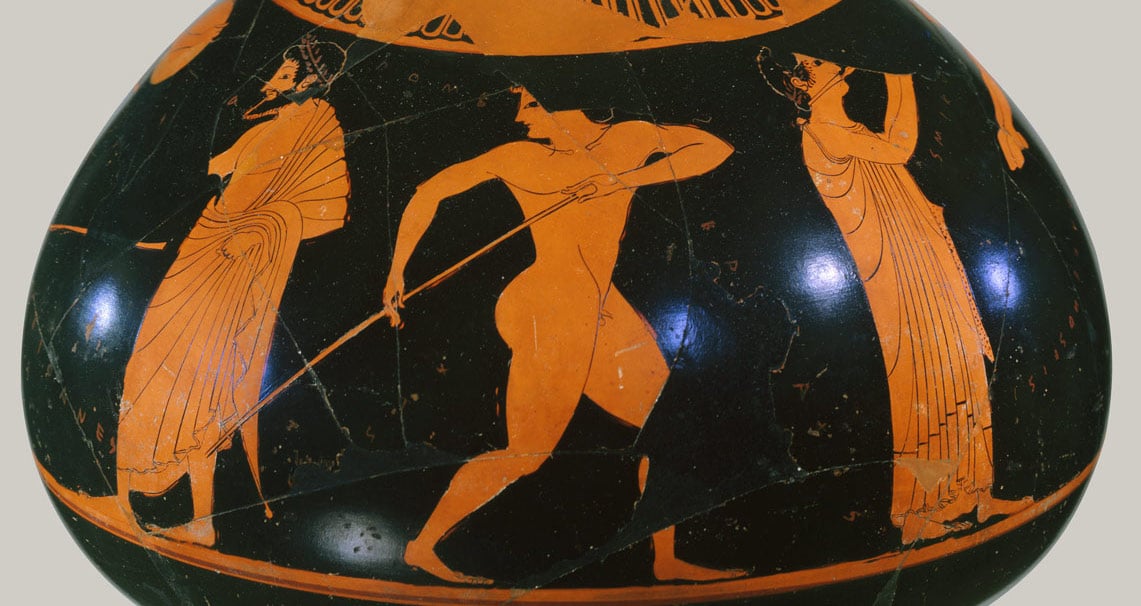
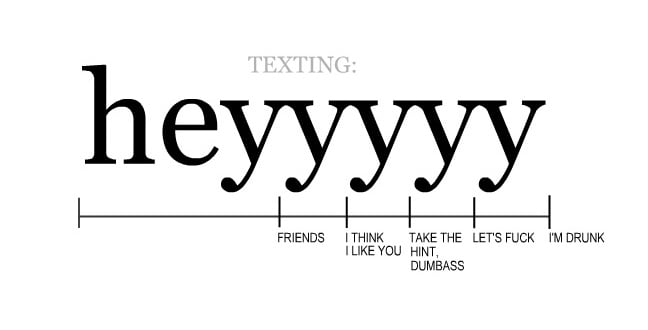



Stay Connected